ICG MAGAZINE

15-18

SEPTEMBER 2023, RAI AMSTERDAM
















15-18

SEPTEMBER 2023, RAI AMSTERDAM






















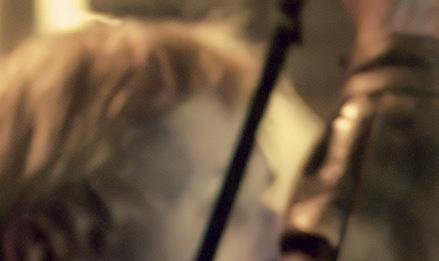
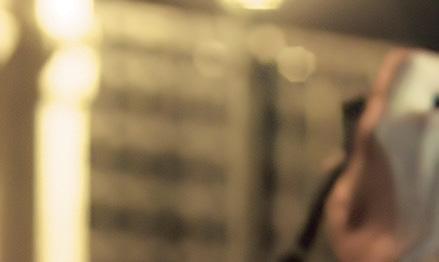
REGISTER NOW AT SHOW.IBC.ORG #IBC2023


FOR YOUR EMMY ® CONSIDERATION OUTSTANDING DRAMA SERIES OUTSTANDING CINEMATOGRAPHY FOR A SINGLE-CAMERA SERIES (ONE HOUR) ADRIANO GOLDMAN , ASC , BSC , ABC | BEN WILSON


The beginning of the end


“ONE OF TELEVISION’S BEST DRAMAS EVER.”

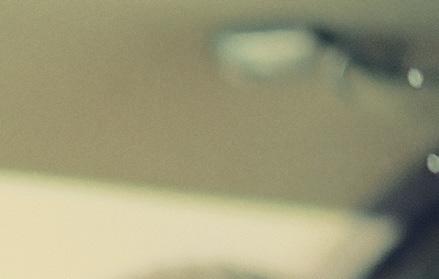
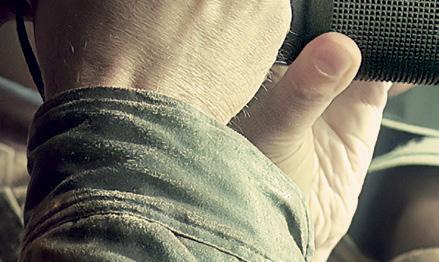
“AN EXTRAORDINARY FEAT OF CINEMATOGRAPHY AND BEAUTY.”
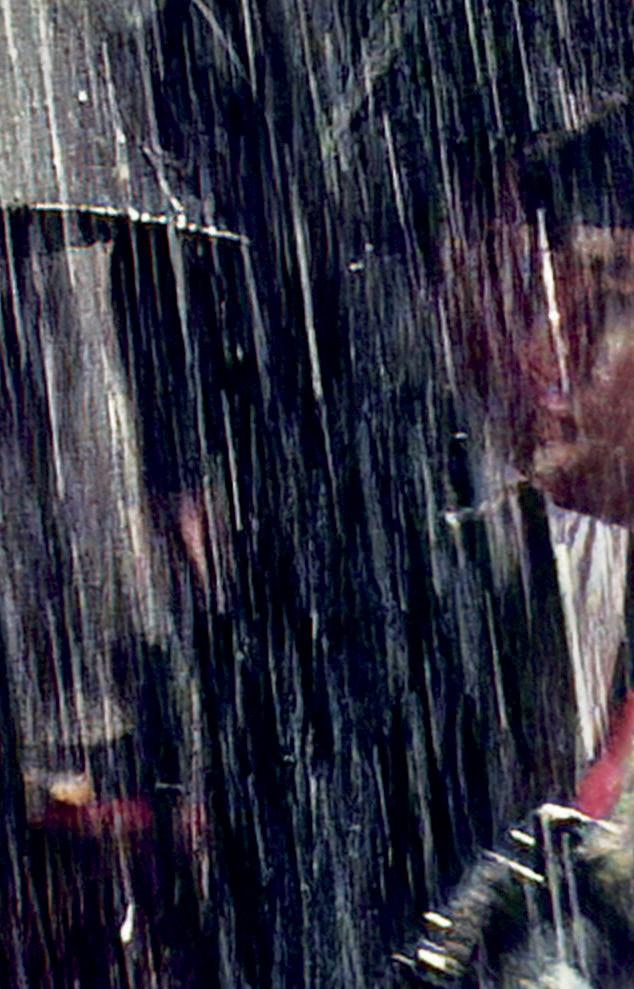


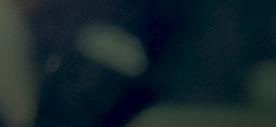



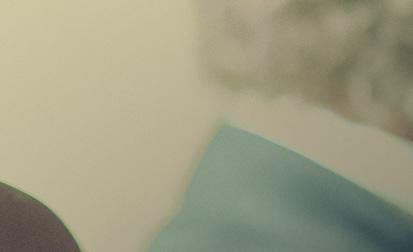





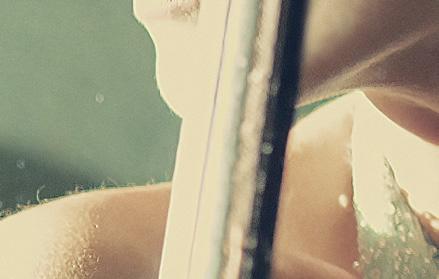

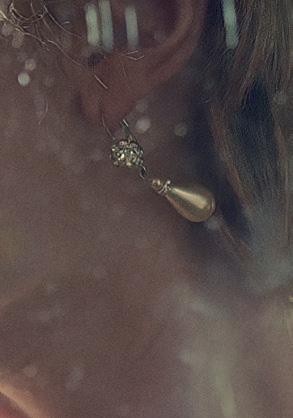










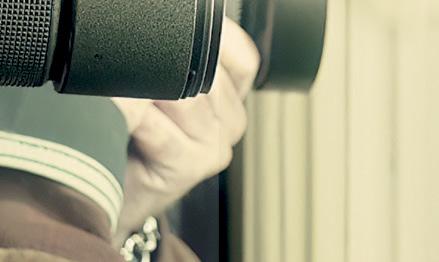

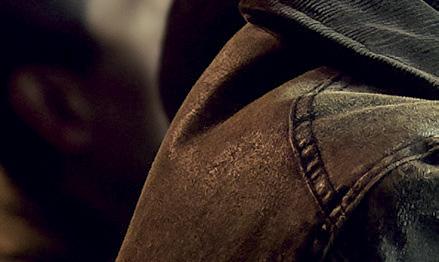


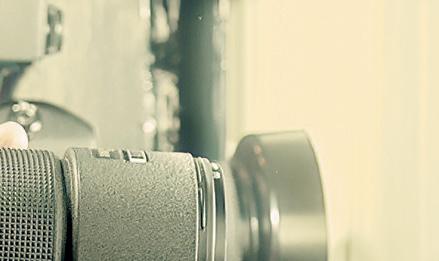
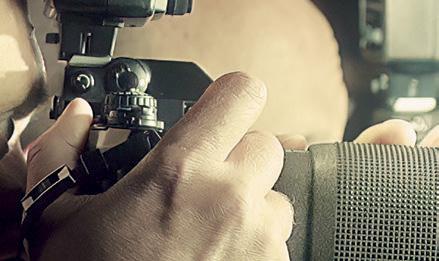

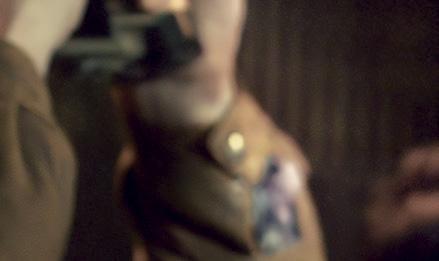

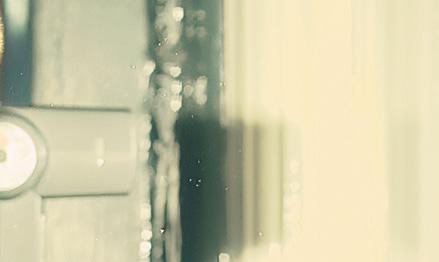

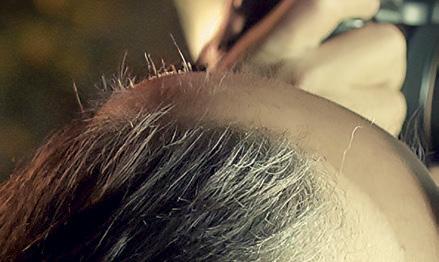
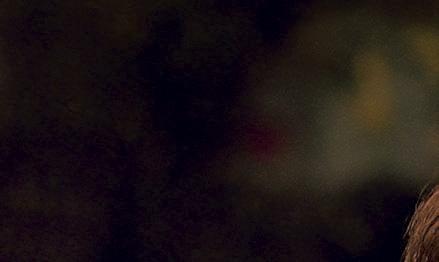


October 1, 2023

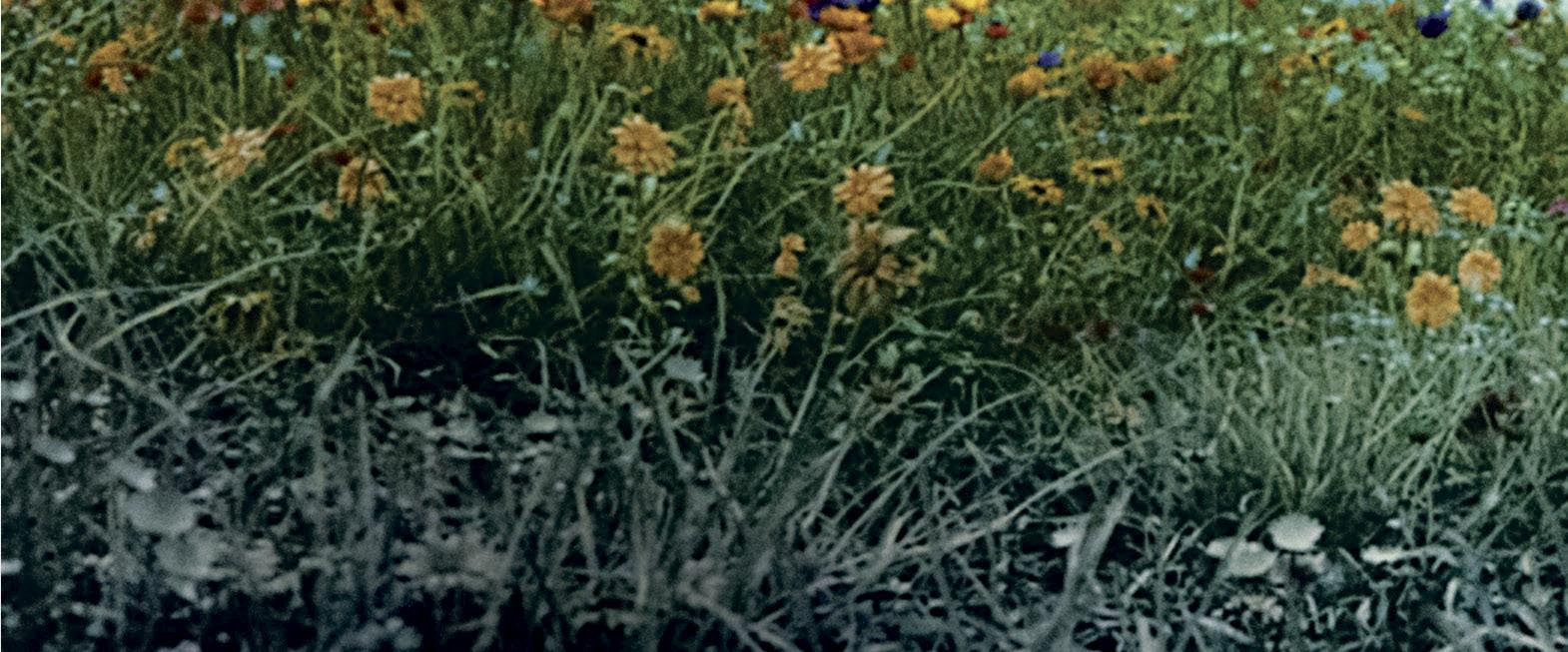

Television Academy at the Saban Media Center Wolf Theatre Los Angeles, CA
www.ecawards.net



FOR YOUR EMMY ® CONSIDERATION OUTSTANDING CINEMATOGRAPHY FOR A SERIES (ONE HOUR) CALEB HEYMANN
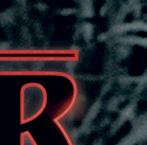



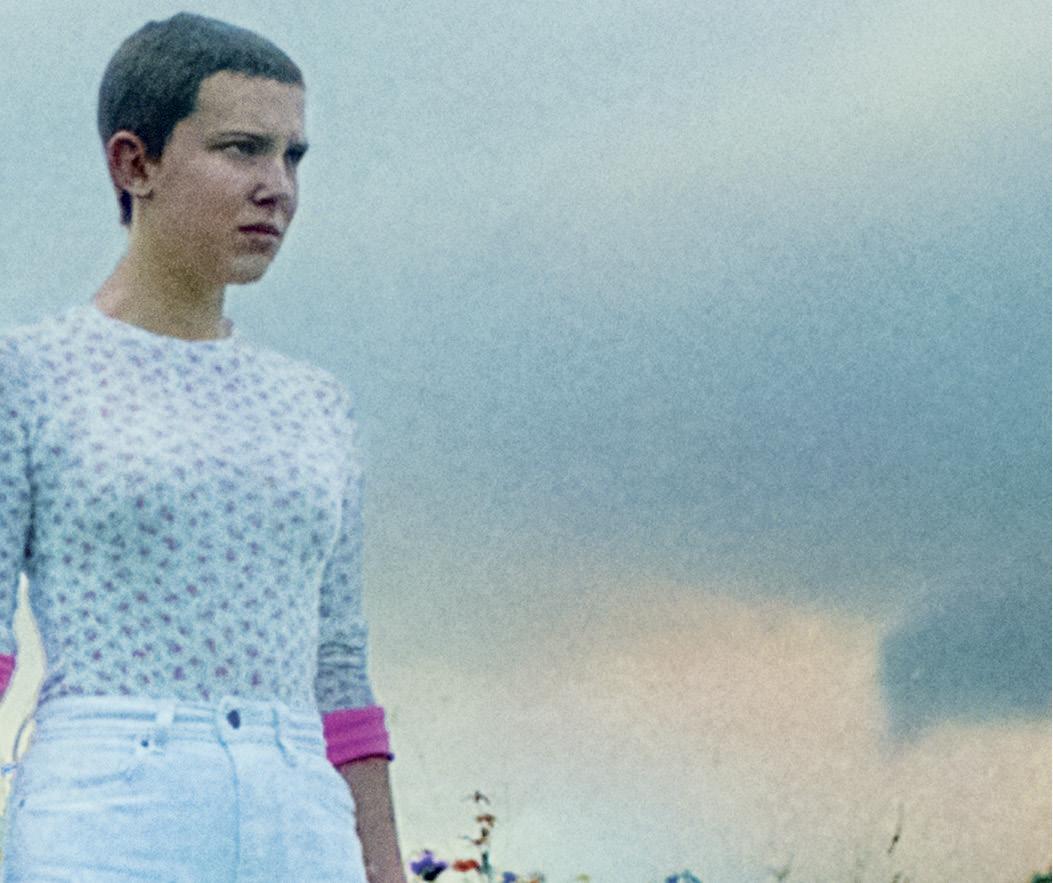
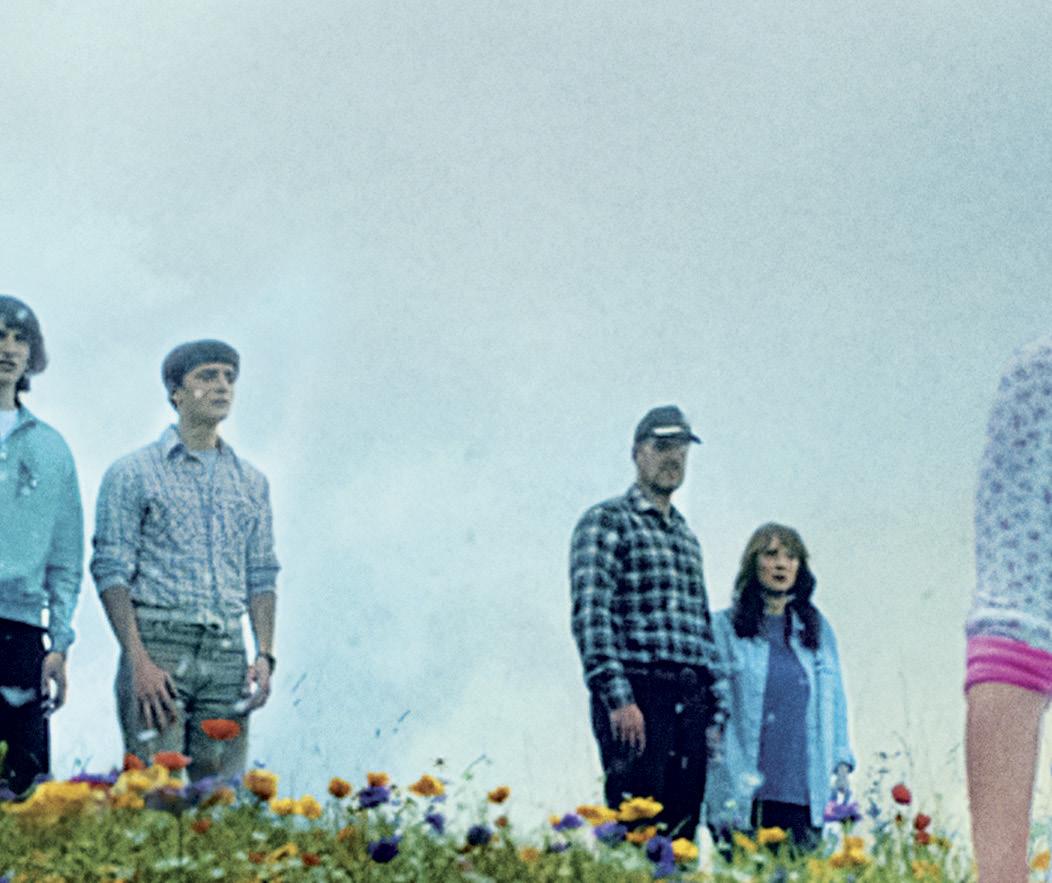
“

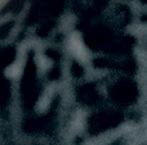
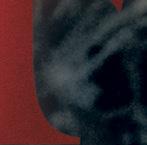







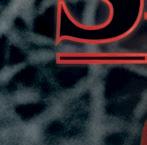






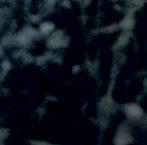
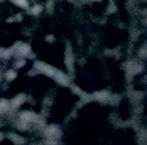




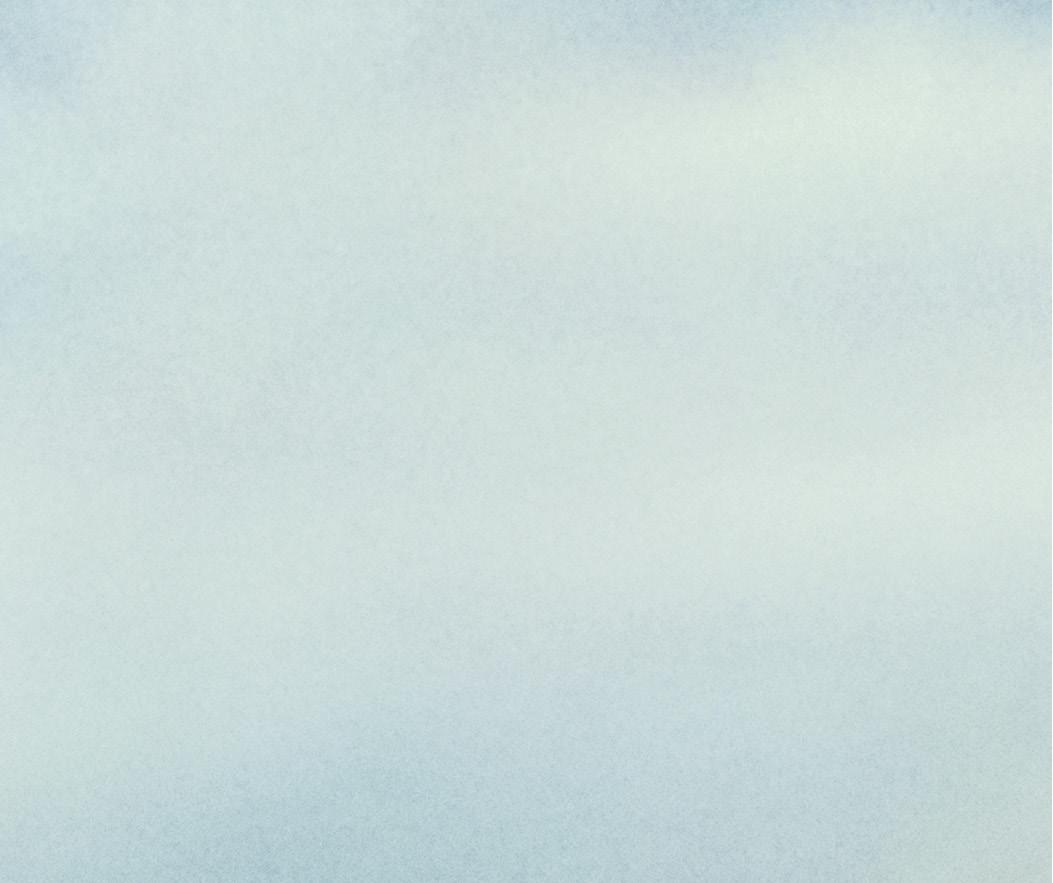
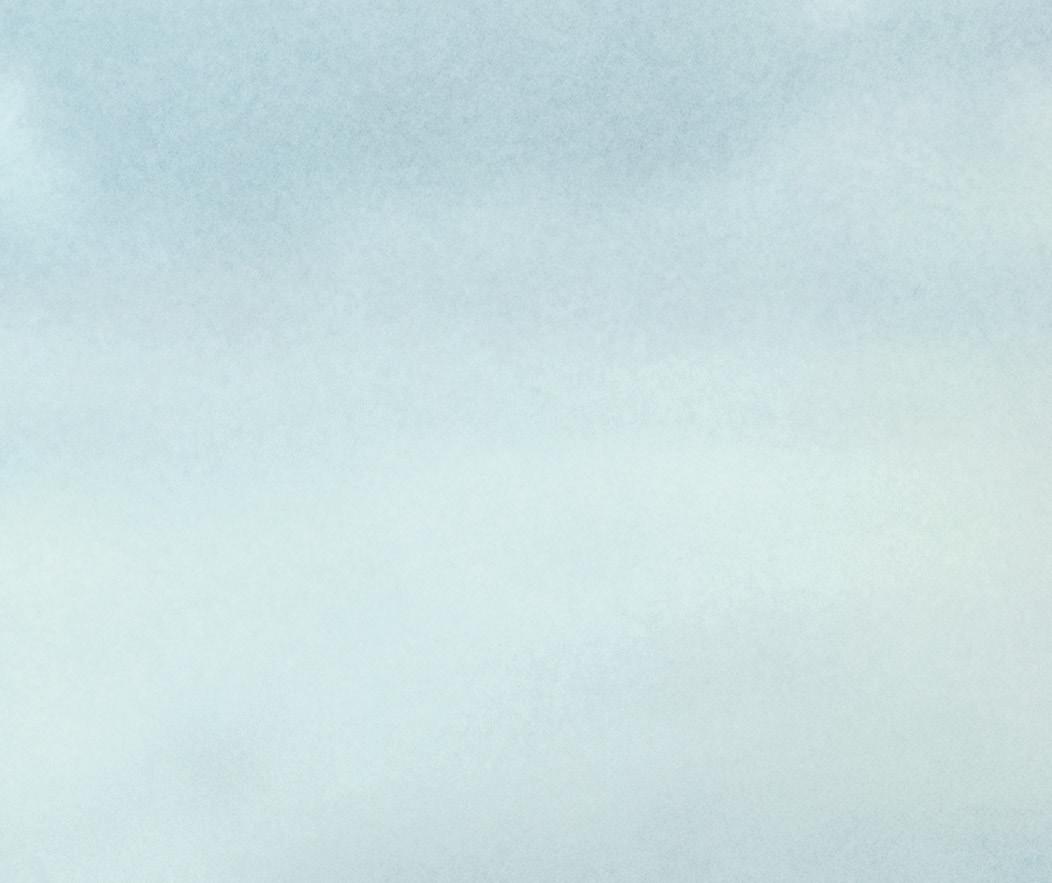


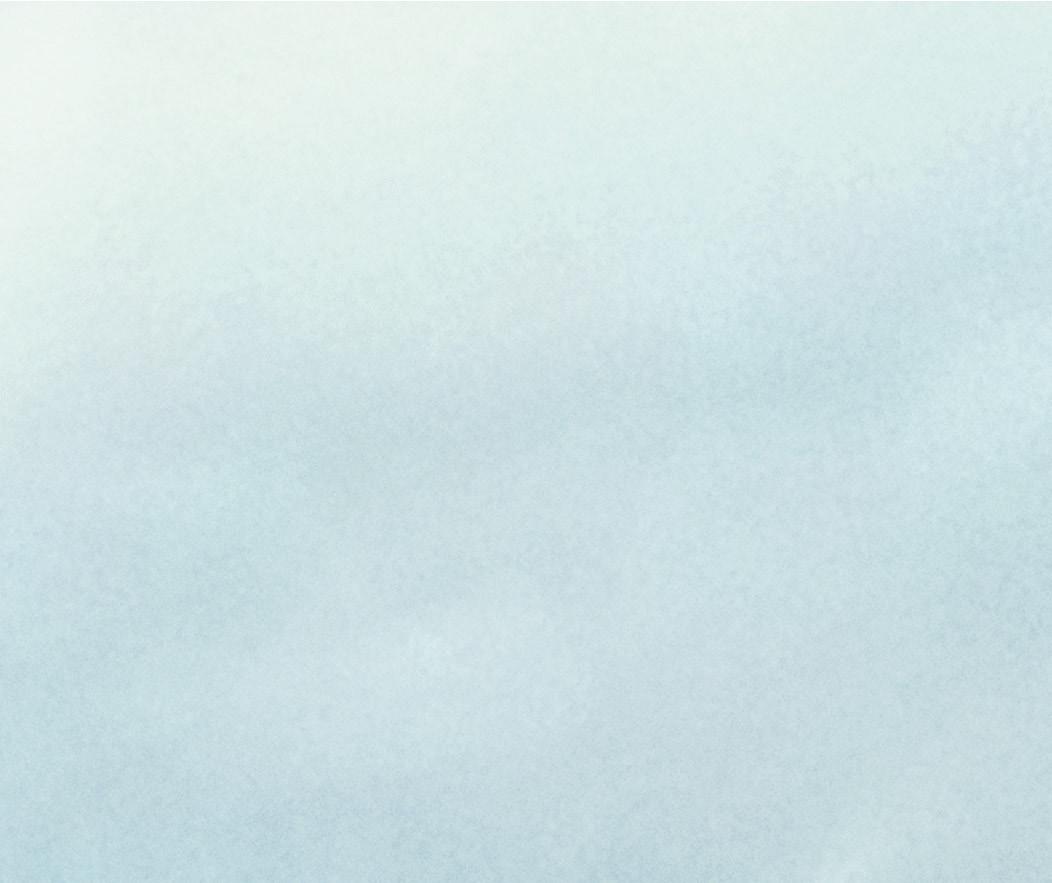

GORGEOUS AND WILD VISUALS.”
“INCREDIBLE PRODUCTION VALUES, GLOBE-SPANNING LOCATIONS AND EXPERT CRAFTS.”




PLUTOFRESNEL: 80 W equivalent to 300 W Tungsten


BUILT-IN BATTERY: 3h on MAX Brightness
LEOFRESNEL: 250 W equivalent to 1000 W Tungsten
BUILT-IN BATTERY: 2h on MAX Brightness
Astera’s new Fresnels offer a 15° to 60° beam angle and superior colors, thanks to its Titan LED Engine. Both models contain a battery and feature numours mounting options, making them the most portable Fresnel option for film, studio and event lighting.
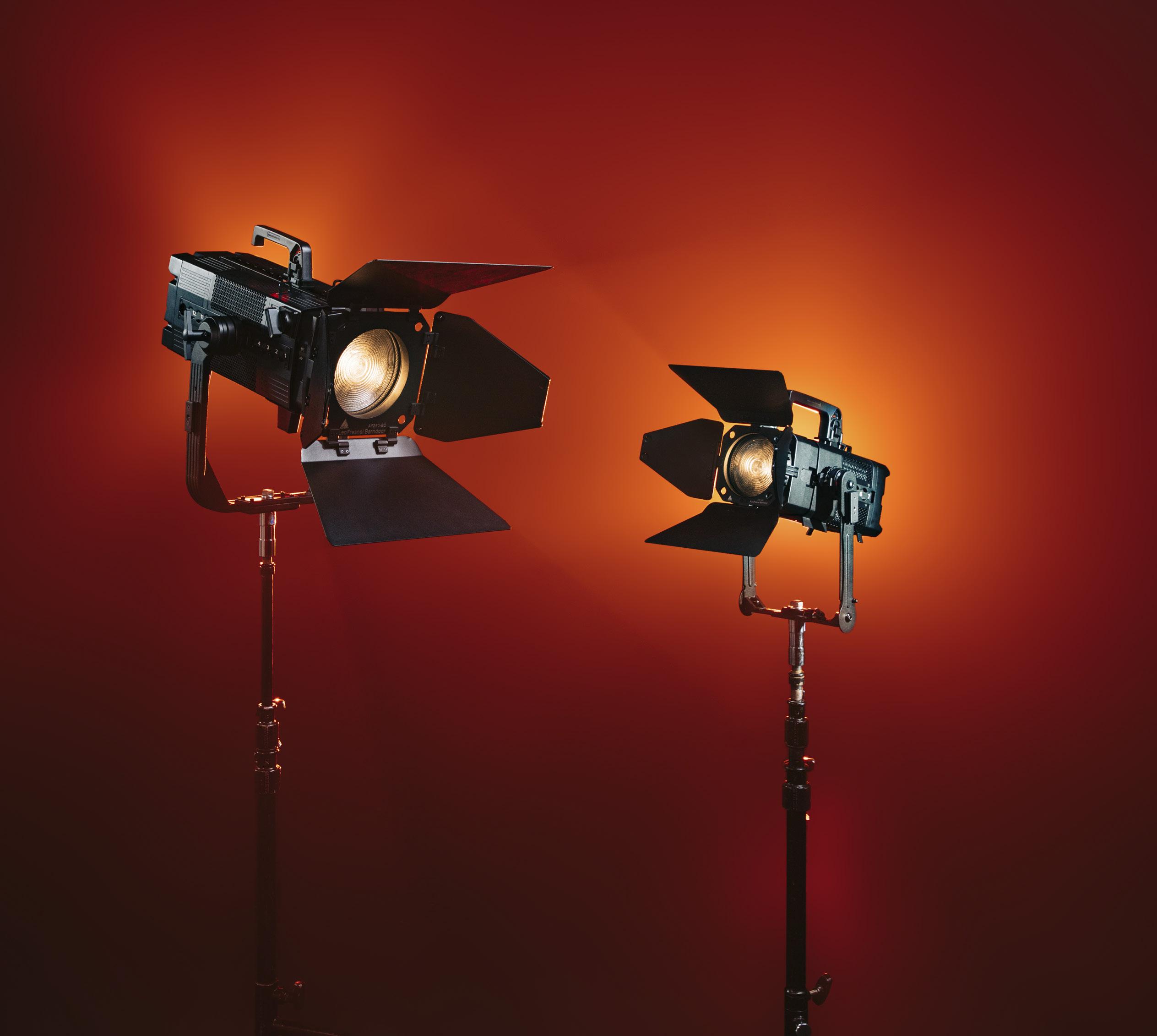
Backside display with TouchSlider
Projection lens with Zoom coming end of 2023
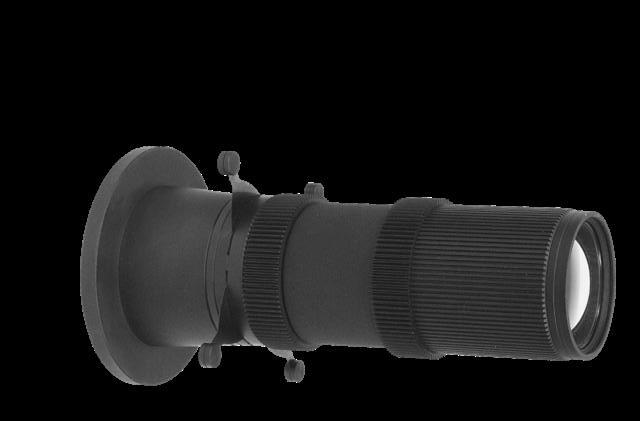

I’ve been in this industry long enough to have seen some substantive changes. And when it comes to shifts that have impacted our union workforce, television (which this June issue themed around) is at the top of the list. Once upon a time, there were three major networks, and every episodic series was shot at one of the major studios, which included Universal, MGM, Sony, Paramount, Disney, and Warner Bros. Each studio has its own camera department, and when you worked on a TV series, you dealt with the heads of that studio’s camera department, not necessarily the union or an off-lot entity.
These camera departments (except for Disney, where I worked) all had loading rooms, which provided the on-set assistants with full magazines to shoot with. (Typically, loaders had to spend up to two years in a studio loading department before moving onto set.) We might have four or five thousand feet of emergency film stock for location shooting. But I can remember shooting up in Oxnard on a series, and having studio drivers shuttle empty and full magazines back and forth to the location!
There was also lot seniority in place, which meant that if you wanted to move from a show at Universal to Paramount, you needed two weeks at Paramount before you could move over – and those two weeks were hard to come by. The general seniority system broke workers up into Group Ones, Twos, and Threes. Group Ones could work all the time; Group Twos couldn’t work unless all the Group Ones were working, and Group Threes couldn’t work unless the Group Ones and Twos were working.
TV crews were more cohesive compared to today’s nomadic lifestyle. With a typical network show running for 22 episodes, the same crew would go on hiatus for a month or two and return, intact, for the following season. Compare that to a typical streaming series, which is roughly 8 to 12 episodes, with crews moving on to different shows as soon as a season is completed. And the longterm relationships built on a show running for three or more seasons (22 episodes per season) naturally encouraged mentorship, with union veterans sharing their knowledge with newer members across a much longer span of time. (Tim Wade and Richard Walden were among my mentors when I entered the industry.)
I suppose we can compare the many limited streaming series produced today – a single season of four to six episodes – to the network miniseries format back in the day. However, those network mini-series had a schedule of two to three weeks per episode to produce, instead of the five to six days that are common with episodic schedules today.
Finally, I’ll say that television production today is much more freelance than in years gone by. And a byproduct of that has been less mentorship throughout our industry. I would urge our more experienced TV camera teams (and those in any other genre) to become mentors – to help bring back those long-term relationships that were once as common as a 22-episode network series.
The new VENICE Extension System 2 gives filmmakers greater creative freedom with two cables and the ability to separate the VENICE 2 sensor from the camera body anywhere from 10 to 40 feet away. It’s perfect for tight spaces, handheld setups, or the next time you need to fit six cameras in the cockpit of a fighter jet or race car.


“The Sony Rialto 2 allows for unencumbered visual accessibility. It’s now an essential tool for creative shot designs to make difficult camera positions work. I can now have the visual fidelity of VENICE 2 in a compact and portable system.” — Matt Sakatani Roe
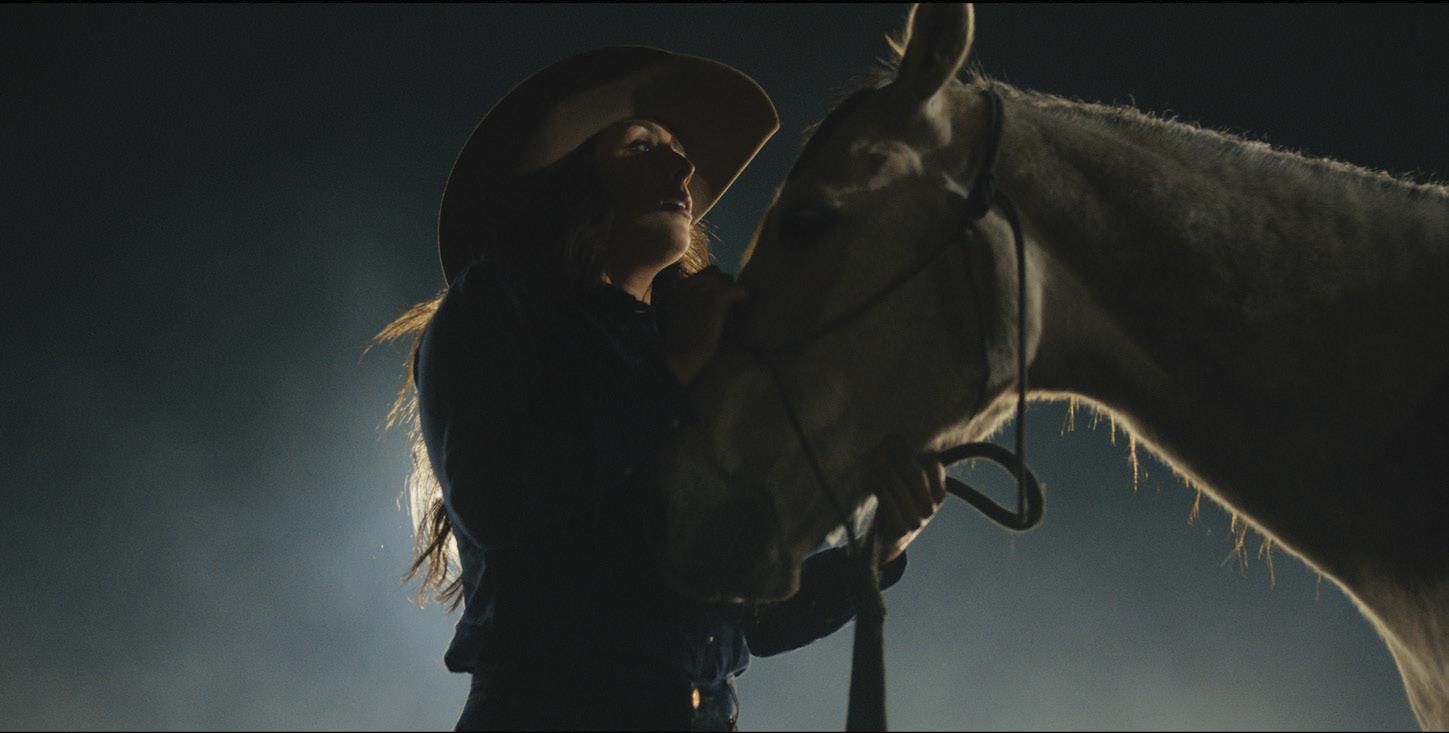


Publisher
Teresa Muñoz
Executive Editor
David Geffner
Art Director
Wes Driver
STAFF WRITER
Pauline Rogers
COMMUNICATIONS COORDINATOR
Tyler Bourdeau
COPY EDITORS
Peter Bonilla
Maureen Kingsley CONTRIBUTORS
David Geffner
Margot Lester
Annabel Reyes
David-Jean Schweitzer, SOC
June 2023 vol. 94 no. 05
IATSE Local 600
NATIONAL PRESIDENT
Baird B Steptoe
VICE PRESIDENT
Chris Silano
1ST NATIONAL VICE PRESIDENT
Deborah Lipman
2ND NATIONAL VICE PRESIDENT
Mark H. Weingartner
NATIONAL SECRETARY-TREASURER
Stephen Wong
NATIONAL ASSISTANT SECRETARY-TREASURER
Jamie Silverstein
NATIONAL SERGEANT-AT-ARMS
Betsy Peoples
INTERIM NATIONAL EXECUTIVE DIRECTOR
Alex Tonisson
COMMUNICATIONS COMMITTEE
John Lindley, ASC, Co-Chair
Chris Silano, Co-Chair
CIRCULATION OFFICE
7755 Sunset Boulevard Hollywood, CA 90046
Tel: (323) 876-0160
Fax: (323) 878-1180
Email: circulation@icgmagazine.com
ADVERTISING REPRESENTATIVES
WEST COAST & CANADA
Rombeau, Inc.
Sharon Rombeau
Tel: (818) 762 – 6020
Fax: (818) 760 – 0860
Email: sharonrombeau@gmail.com
EAST COAST, EUROPE, & ASIA
Alan Braden, Inc.
Alan Braden
Tel: (818) 850-9398
Email: alanbradenmedia@gmail.com
Instagram/Twitter/Facebook: @theicgmag
ADVERTISING POLICY: Readers should not assume that any products or services advertised in International Cinematographers Guild Magazine are endorsed by the International Cinematographers Guild. Although the Editorial staff adheres to standard industry practices in requiring advertisers to be “truthful and forthright,” there has been no extensive screening process by either International Cinematographers Guild Magazine or the International Cinematographers Guild.
EDITORIAL POLICY: The International Cinematographers Guild neither implicitly nor explicitly endorses opinions or political statements expressed in International Cinematographers Guild Magazine. ICG Magazine considers unsolicited material via email only, provided all submissions are within current Contributor Guideline standards. All published material is subject to editing for length, style and content, with inclusion at the discretion of the Executive Editor and Art Director.
Local 600, International Cinematographers Guild, retains all ancillary and expressed rights of content and photos published in ICG Magazine and icgmagazine.com, subject to any negotiated prior arrangement. ICG Magazine regrets that it cannot publish letters to the editor. ICG (ISSN 1527-6007)
Ten issues published annually by The International Cinematographers Guild 7755 Sunset Boulevard, Hollywood, CA, 90046, U.S.A. Periodical postage paid at Los Angeles, California.
POSTMASTER: Send address changes to ICG 7755 Sunset Boulevard Hollywood, California 90046
Copyright 2021, by Local 600, International Alliance of Theatrical Stage Employes, Moving Picture Technicians, Artists and Allied Crafts of the United States and Canada. Entered as Periodical matter, September 30, 1930, at the Post Office at Los Angeles, California, under the act of March 3, 1879. Subscriptions: $88.00 of each International Cinematographers Guild member’s annual dues is allocated for an annual subscription to International Cinematographers Guild Magazine. Non-members may purchase an annual subscription for $48.00 (U.S.), $82.00 (Foreign and Canada) surface mail and $117.00 air mail per year. Single Copy: $4.95
The International Cinematographers Guild Magazine has been published monthly since 1929. International Cinematographers Guild Magazine is a registered trademark. www.icgmagazine.com www.icg600.com


We split up our June/July double issue into two smaller books, to better cover some of this summer’s Local 600heavy projects (July), and to best track the lead-up to the 2023 Emmy Awards (June). Although the streaming model in series TV may be having economic growing pains (re: Disney and Warner Bros. Discovery), it’s no secret that the balance of power – come awards time – is in streamers, with HBO/HBO Max taking home 38 Primetime Emmys in 2022, followed closely by Netflix with 26 (and Hulu, Disney+ and Apple TV+ not far behind).
Our cover story on American Born Chinese (written by yours truly) highlights how much filmmaking talent is gravitating toward streaming television. Consider that the last project EP/Director Destin Daniel Cretton (Exposure, page 18) did just before the Disney series was Marvel’s Shang-Chi and the Legend of the Ten Rings – the first pandemic-era feature to cross $400 million in global boxoffice receipts.
Lensed by Cretton’s longtime cinematographer, Brett Pawlak, and Torontobased indie DP Alan Poon, CSC, American Born Chinese mashes up genres like nobody’s business. Based on Gene Luen Yang’s New York Times bestselling graphic novel, it blithely skips between martial arts action, intense family drama, and high school teen comedy (often in the same episode). Like Poon, most of the show’s creative principals come from indie features, including Pawlak and Cretton, whose Short Term 12 won the Competition Award at SXSW ten years ago, and Production Designers Michele Yu and Cindy Chao, who first teamed on a Sundance feature two decades before American Born Chinese. That’s probably a good thing as I often heard the same refrain: “Nothing prepares you for the speed and compressed budgets of a TV series like the cash-poor world of independent film.”
Another thing: Pawlak and Cretton’s past works have all been character-centered dramas, where the cinematography takes a backseat to performance. American Born
Chinese allowed them to cut loose. Or as Pawlak puts it: “This is based on a graphic novel, so we gave ourselves permission that more is more.” That included a LUT Pawlak created (working closely with Light Iron Colorist Ian Vertovec) for the “Heaven” segments of the show (where all the kung fu fighters come from). Based on Kodak Aerochrome, an infrared negative often used in topographical mapping and fighting forest fires, Pawlak’s LUT shifted everything green to red – super cool looking for all the lush exterior vegetation at the Disney Ranch in Santa Clarita, CA, but not so much for actors’ skin tones.
“I married the Aerochrome hue shift with other LUT’s from the vintage kung fu films Brett and Destin wanted to evoke,” Vertovec said. “The result was this combination that made the greens not only go pinkish red but also dark and textured.” Previsualizing the Heaven LUT was essential, “as Brett had to be able to show Hair, Makeup, Costume, Production Design, even the actors what was being captured in camera,” Vertovec adds. “You can tell everyone that everything you see green on set will shift red, but that’s not as good as showing them what you mean.”
Showing IATSE crews creative intent was also key in the new Apple TV+ limited series City on Fire (page 40). Executive produced/directed by another indie film refugee, Jesse Peretz, the show juggles rock-and-roll still photography, political protest, and a murder mystery, all via an incredible visual foundation by Local 600 Directors of Photography Carmen Cabana and Joe Collins.
Cabana, who set the show’s look with Peretz, told ICG writer Margot Carmichael Lester that they wanted City on Fire to “feel rich, saturated, intense at times and playful at others; gritty and also sophisticated; contrived and also juvenile.” She says it was important “to be sensorially accurate to the story we are telling. This is not a tonally onenote show, so the key was finding a unifying melody among all these different notes…to make sure that it felt like one show with New York as the backdrop for all these very different characters.”
Bringing diverse worlds, genres, stories, and characters together into a visual whole is a quality both these terrific new union-shot series share. That makes for great TV (and for super-invested crews).
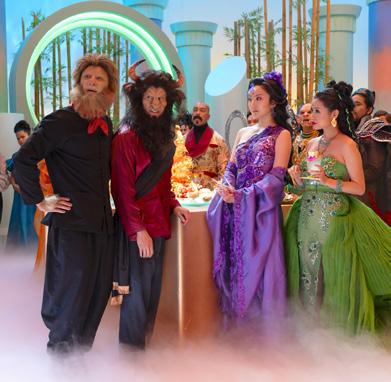
As Yu told me: “I hope there’s at least one moment of joy at seeing something from their personal experiences [as Asian-Americans] on screen. That was our greatest joy working on this show, as we’ve never been asked what it was like growing up where and how we did. Just being asked that question, and then being hired to portray it in our work made us really – happy!”
David Geffner
 Executive Editor
Executive Editor

Email: david@icgmagazine.com
Heaven and Earth
“I’m a huge fan of the three genres that American Born Chinese combines into one series – Hong Kong martial arts films, high school comedies, and suburban family dramas. Having the chance to hear how Guild DP’s Brett Pawlak and Alan Poon, CSC, approached this unique mash-up (not to mention including a kung fu stunt pro like Peng Zhang) reminded me just how much fun filmmaking can be when the stars align. Did I mention that I love this show!?”
Burning down the House
“I was hanging out in the L.A. rock scene at the same time the City on Fire characters were experiencing the rock scene in New York, so I had an immediate connection to the show. Then I got sucked in by the intrigue and mystery, which I can’t reveal for fear of spoilers!”
The relationship between a cinematographer and their camera is a lot like the relationship between a musician and their instrument; intimate and personal. For me, RED and my RED camera have been my most trusted partners in my work—essential.
Erik Messerschmidt, ASC Director of Photography

On every TV series, I insist on attending the final color session. The colorist knows the show and the look very well, so by the time I see the episode, all the scenes have been matched to the established look. I either join in the color suite or get access to the file, which I watch on my colorcorrected monitor at home, and then email my detailed notes.
If there were walls I didn’t have time to darken, we’ll do it in this session. If we didn’t manage to get an actor’s eyes visible enough on set, this is our last chance to save my butt [laughs]. It is essential on every job for the DP to attend this session, or at least give precise notes.
If “guest directors” are dialed into the look and feel of the show, they have either directed it before or have done their homework. When this is not the case, the DP has to help out. This might be giving advice about coverage (“we need a close-up here”), or it might be about pace: this shot will be too slow in the cut, and the editor won’t use it.
It may also be conveying the knowledge that our number one in the cast won’t just stand there, she will want to be on the move and bring energy to this moment. A “guest” director should
welcome advice from the regular team (1st AD, DP, producer). Sometimes “guest” directors want to choose a location they like, but if it is wrong for production (the sun position, lighting, accessibility, etc.), I will request an alternate.
On a tight television schedule, VFX is often a necessity. But you have to pick the right times. On Lucifer , we had a sequence where Lauren German (playing Chloe) falls off Lucifer’s penthouse balcony (a set on stage), and Tom Ellis (Lucifer) jumps after her to save her. (He is using his CGI wings to control their fall.) As we see them fly along the building exterior, his hand reaches for her, the wind is blowing, and we see the ground approaching fast. This of course required extensive VFX, filming both actors in harnesses on blue screen with our Technocrane creating movement to sell both of them in free fall. Also, background plates had to be shot and enhanced in post.
I always supplement the main cameras with my Blackmagic Design cameras. I either add another operated shot, or, more often, I hide one of my cameras for another angle for my editor friends. This can be a small 4K on a track looking straight down in the morgue, or a 12K hidden on an airplane seat for a low angle of an actor walking by.
When I started on the original CSI: Crime Scene Investigation in Season 8 (on 35mm film), the crew taught me how to continue the well-established “Bruckheimer” look and the cinematic lighting. I believe it was in 2011 when we switched unnoticed from 35mm to the ARRI ALEXA. The new CSI: Vegas is stunningly upgraded by production designer Alex Hajdu. It features huge sets with a massive amount of glass. So battling reflections of the crew, equipment, and our lights is good mental and physical exercise. When you can see 30 to 40 feet beyond the actors and all the backgrounds need to be lit and look stylish, that is the kind of challenge I am looking forward to.
Working on the different Shondaland projects has been filled with unique challenges. For one episode of Station 19 , our director Peter Paige wanted to shoot a dynamic seven-page scene in one continuous shot to allow our two actresses to bring an emotional punch to the scene. With the help of [Gaffer] Sean Tanner, we lit the set 360 degrees (trying hard to avoid camera shadows). Using multiple cameras, we pulled it off.
On the Shondaland legal drama For the People , I was tasked with changing the look from the previous season. With the help of production designer Charles Lagola and the producers, we created new Translites (backdrops outside the large set windows), re-arranged the way the sets were set up (so we wouldn’t be shooting people into walls, but in front of windows with a view) and added windows and big skylights in the sets to create more contrast and depth.
In the last season of Shondaland’s How to Get Away with Murder , there was a lot of interesting lighting for a theme that was quite dark. It was challenging when shooting with three cameras all day long and often with an ensemble of four to six actors and various skin tones on camera at the same time. Viola [Davis] has gorgeous dark skin, and we used a small LED unit with a three-foot snoot (so we wouldn’t light up the others) to give her a bit of an extra shine and bring up her expressive eyes.
Many streaming companies have added marvelous competition to network TV. Free of the many constraints of the networks, which cater to a wider audience and rely on advertising money, they have changed the playing field. When working for the big networks, everything from the writing to the cinematography should now be on an elevated level to compete. I think it’s good for filmmakers and good for the audience.
It was a strange, humongous, rectangular screen that caught the eye of five-year-old Terrence Burke. His father, a photographer, would often take the family to the Bronx’s Whitestone Drive-In (New York City’s most famous) on weekends. The young Burke would see large moving images across that enormous screen, as well as hear loud noises and sounds coming from the weird gray box hung from the car window.
“It was an exciting experience at the drive-in,” he smiles. “I was hooked at an early age.”
While working as a grip on Law and Order, Burke knew he needed to study the craft to reach his goal of being a cinematographer. He applied to AFI, flew out to L.A. for his interview, and was accepted into the DP class in 2011. “At AFI, I learned a tremendous amount from shooting and crewing all the time,” Burke recounts. “But most importantly, I was learning how to work with all facets of production: how to work closely with every department to create beautiful and artistic work. It was also about respecting one another and having each other’s back as a team. No one can do anything on a production alone.”
Burke cites three prime mentors in his time at AFI – Robert Primes, ASC; Tal Lazar; and Bill Dill, ASC. “Bob Primes taught me different kinds of lighting techniques that I use today, as well as the value of being a leader on set,” Burke remembers. “Tal Lazar taught me discipline and how to prepare for anything that can happen on set. We had mock director and producer interviews. We were always challenged in class on our knowledge of lenses, cameras and anything else a DP should know. Late-night emails kept us on our toes.
“Bill Dill would show two projects shot by DP’s in the class,” Burke continues, “in real theaters with real audiences. He passed a plastic or paper bag around, and the class would put their critiques in them. He would give the bag to the DP. Then he would replay the project again with his critique. The DP’s showing their projects would sit in the front row – and everyone else rows back. Most DP’s got destroyed in that class every week. [Laughs.] I know I did. I remember Bill laughing hysterically at the opening of my project. I got hammered. But he taught me to be humble and never rest on your laurels. Criticism is good. It makes one learn to accept other opinions and embrace what is being said.”
In 2016, an AFI DP, Richard Vialet, ASC, hooked Burke up with a job that changed his life. “He was leaving a TV show in Atlanta called Too Close to Home ,” Burke begins. “He needed someone to cover for him. So the production contacted the union, and I joined and worked the show. It was the beginning of a four-and-a-half-year distant hire job in Atlanta, where I shot television and feature work for Tyler Perry shows like If Loving You Is Wrong , House of Payne , The Oval , Sisters , Young Dylan , Assisted Living , The Have and Have Nots , Bruh , Ruthless and the Netflix movie A Fall from Grace . I was living the dream.”
When Burke left Atlanta six years later and moved back to New York City, he was immediately hired to shoot a Hallmark TV movie, Redemption in Cherry Springs . Soon after that wrapped, he moved into his first high-profile DP job in his hometown – CBS Television’s reboot of The Equalizer , alternating with Ron Fortunato, ASC, on
Seasons 2 and 3. “Ron and I are good friends and collaborative partners,” Burke explains. “We are always in lockstep with the look. I believe what I bring to the series is the use of color theory. I feel that all colors have emotion and meaning attached to them. They depict how a character is feeling and behaving and what action they may take when confronted with a situation.
“I also love moving the camera,” Burke adds. “The movement of the image reveals something in the story, whether handheld, dolly, cranes, jib, Steadicam, or changing frame rates and shutter angles to accentuate the action in fighting scenes. It’s all about pushing the visual language.” Burke says the main challenge on The Equalizer is the schedule. “Sometimes we have to forgo a light, move, or lens change, just to get the day done,” he notes. “But we’re a team that always makes our day no matter the circumstances.”
Burke’s other passion is to see more diversity in the union and on set.
“I don’t know exactly how to get there, but I do know that many talented, professional, hardworking, respectful, collaborative, diverse men and women are out there,” he offers. “They are out networking – and I would really like to see that pay off. I started as a union grip in 1997. I can say that, back then, there wasn’t much diversity on set, or in any crafts union. But things have definitely gotten better. There are more in different departments than before. That’s a positive thing, especially if they are good and passionate about their work. More diversity means more marginalized people having a chance at a better way of life.”

Maui-born Writer/Producer/Director Destin Daniel Cretton says his island world growing up was arguably “one of the most diverse and multicultural” places in America, and his storytelling has reflected that. Cretton, who attended San Diego State University and had early success on the film festival circuit with indie features like I Am Not A Hipster and Short Term 12 (which won the 2013 Narrative Competition at SXSW), is best known for being just the second Asian filmmaker to helm a Marvel feature (after Ang Lee’s The Incredible Hulk ) and the only Asian-American to ever direct a Marvel property starring an Asian superhero, Shang-Chi and the Legend of The Ten Rings (2021).
His most recent work, Disney+’s American Born Chinese, is based on the 2006 graphic novel by Gene Luen Yang. The action-comedy series, which
centers on a suburban American teenager (Ben Wang) who becomes entangled in a battle between mythological Chinese gods (who live in Heaven), was created by Emmy-winning Writer/Producer (and Actor) Kelvin Yu, and co-shot by Guild Director of Photography Brett Pawlak, whose camera and lighting team has worked with Cretton for more than a decade. That familiarity helped support Cretton’s first jump in directing series television, a fast-paced, budget-challenged environment he says feels “cushiony compared to shooting eight pages a day on an indie feature.”
ICG Executive Editor David Geffner talked to Cretton about AAPI representation in Hollywood and the pride he takes in having a long-standing union crew whose respect for each other (and Cretton’s cast) is beyond compare.


ICG: How did you and Brett Pawlak meet? Destin Daniel Cretton: What brought us together was Myspace. I was looking for a DP for my senior thesis project at San Diego State as I had shot all my films before that and never worked with a DP. I Googled “young director of photography,” and one of the first clips that came up was a link to Brett Pawlak’s Myspace page. I clicked on it, and one of the top results that came up was a behind-the-scenes about a music video he had shot all handheld and pulling his own focus. That was the same style I wanted for my thesis short, so I wrote him an email, drove up to L.A., met him at a Starbucks and that was it! I never turned back [laughs].
What’s the creative connection that’s kept you together over so many films and now episodic television? (Cretton and Pawlak were shooting a new Marvel series at the time of this interview.)
Brett’s very in tune with whatever director he’s working with, and his or her overall aesthetic. At this point, we don’t need to talk that much. Communication has become very easy, but I also think our aesthetics line up. We’re both after something interesting but not “flaunty.” We love great frames and composition, but we don’t want something pretentiously lit or composed, which is a balance we’re always looking for. I remember one shot from Short Term 12 where Brie (Larson) is sitting at a table, at night, going over some paperwork. Very simple shot and Brett had it lit and ready to go. Something about it was too dramatic and I said, “It feels a little Murder, She Wrote.” And he was like, “Shit, you’re right!” Five minutes later he had stripped most everything away and made this beautifully minimal look, which was perfect. Neither of us like frames that are too perfect – we need to mess it up a bit.
Coming from the indie festival world, could you have imagined the road you’ve taken would include a stylized Marvel feature and a kung fu action comedy with mythological Chinese gods? I may have felt, at that time, my path was in the indie world. But I’ve never been one to project too far into the future into what I’m after. I still feel like every project, at the point that I’m starting it, feels entirely new…something I’ve never tried to do before, and that’s always really scary. I was just as anxious and full of panic when I was trying to do Short Term 12 as when I was gearing up to make Shang-Chi for Marvel. It always feels like I’m stepping back into film school and having to relearn everything for the first time.
American Born Chinese is your first time directing series television. How do your skills from indies, and the MCU, translate? From a process standpoint, doing a large studio movie, you come to TV and everyone almost apologizes because TV

moves so quickly. But coming from the indie world, TV feels “cushiony,” as we shoot way faster in the indie world – for Short Term 12 we were sometimes doing eight pages a day. I feel like indie filmmakers are quite well-suited for the TV schedule. I find the speed to be beneficial to the creative process. Keeping things moving allows the actors to stay in it, allows the entire crew to get in a groove and make decisions quickly and effectively. It’s a more fun creative environment to be in.
Is that your favorite aspect of episodic TV? That and the fact that television is so team-oriented. Features are as well, but [ American Born Chinese ] was the first time I’ve ever been able to collaborate with other directors. I’ve never even been on set with another director. Working as a producer with the show’s creator, Kelvin [Yu], we could handpick each director, some of whom were first-time directors who had only shot shorts. We could talk through the aesthetics of the show and be on set with other directors – that community aspect was new for me, and I loved it.
This series is based on a graphic novel, but you and Brett strayed into other visual areas – like the LUT Brett used for Heaven that emulated Kodak Aerochrome. Visually, we were more influenced by cinema than the graphic novel, like the rich history of Chinese kung fu martial arts films. We did work closely with Gene, who created the graphic novel, and were in line with that color palette. But we weren’t trying to make this feel like you’re watching a moving image of a comic book. We wanted a coollooking show that was reminiscent of those martial arts movies we grew up with. That’s how we sold it to Disney. When people saw that opening scene of Heaven, based on that Aerochrome look, it didn’t feel too wacky because there’s a part of that aesthetic that feels familiar, and we could lean into that.
Second Unit Director Peng Zhang has a long history in martial arts stunt work – you worked together on Shang-Chi, and he did the choreography for all the fights in American Born Chinese . Brett said first and second units were integrated on the kung fu fights, despite all the stunt and wire work. Peng is a natural storyteller who has directed giant movies in China and is comfortable working with actors. He’s also an incredible collaborator. I think the only way that you can have a fight or action sequence feel truly integrated into the story is to be in sync from the beginning with your choreographers and action designers. I was bouncing ideas off Peng in the scriptwriting phase. We’d figure out what the action sequence was going to be – what’s cool, but, most importantly, what’s the trajectory of the characters in that fight sequence? The fight at the end of Episode 1 is a great example. It’s all about the father/son relationship. Are they really trying to hurt
each other? Is the dad really trying to kill his son? Probably not, so what is that dynamic? We usually figure out which emotional beats are important, and Brett and the first unit will come in to crack the look of the sequence. We pick visual anchors throughout that second unit can come in and then spend the more time-consuming process of getting the perfect spin-kick, or whatever.
Brett said his job as a DP was tying up all the visual threads sewn into Episode 1 and beyond in the season finale. And there are so many different looks: the 90s sitcom, Heaven, Earth, a kung fu battle in the sky. How challenging was that? [Laughs.] Super challenging! Especially with the schedule we were on, and shooting the final fight scene at night, on a soccer field, with extras. We had to have three separate simultaneous camera units to get all the coverage before the sun came up. One unit was on the crowd getting all the reaction shots and singles of different characters. Another was on the fight; another was doing pickups on the side. It was mayhem. But I couldn’t be happier with the end product.
You just came back from the White House, where you premiered American Born Chinese in honor of Asian American Native Hawaiian and Pacific Islanders (AAPI) Heritage Month. Where does this show fit with regard to more diverse storytelling in Hollywood? I grew up on Maui, and it’s arguably the most diverse place in our country. It’s a place where many different cultures have been living together long enough for languages to mix to create
a single pidgin blend of Chinese, Korean, Hawaiian, Filipino, Japanese, you name it. And the food is the same – a Hawaiian plate lunch has little bits of every culture on one dish. That’s the norm for me. So, all the stories I’ve told as a filmmaker have been exploring different pockets of America. That feels comfortable, and American Born Chinese is just another extension. I love exploring stories that get specific to a culture; it doesn’t have to be Chinese or Asian. But whatever it is, I’m interested in those details. Growing up in Hawaii, I relied on the cultural specificity of Spielberg movies [laughs]. Learning about a white suburban family in California in E.T. was incredible because the Caucasian experience was completely foreign. And I felt more connected to people on the mainland through movies that portrayed the details unique to that culture, but also showed the universal issues and problems those people were dealing with. Those movies made me feel like I wasn’t just some weird kid living on an island in the middle of the Pacific. [Laughs.] I had the same kinds of insecurities in high school as they did, and the same kinds of conflicts with my parents. I would hope that’s what we’re doing with American Born Chinese . We’re showing a very specific Asian culture, yes, but we’re also seeing characters who have problems anyone can relate to. That’s what gets me excited about this show.
You love storytelling that brings cultural specificity alive for viewers; but at the same time, you’ve had great success with Asian-American stories. Do you think the Disneys of the world

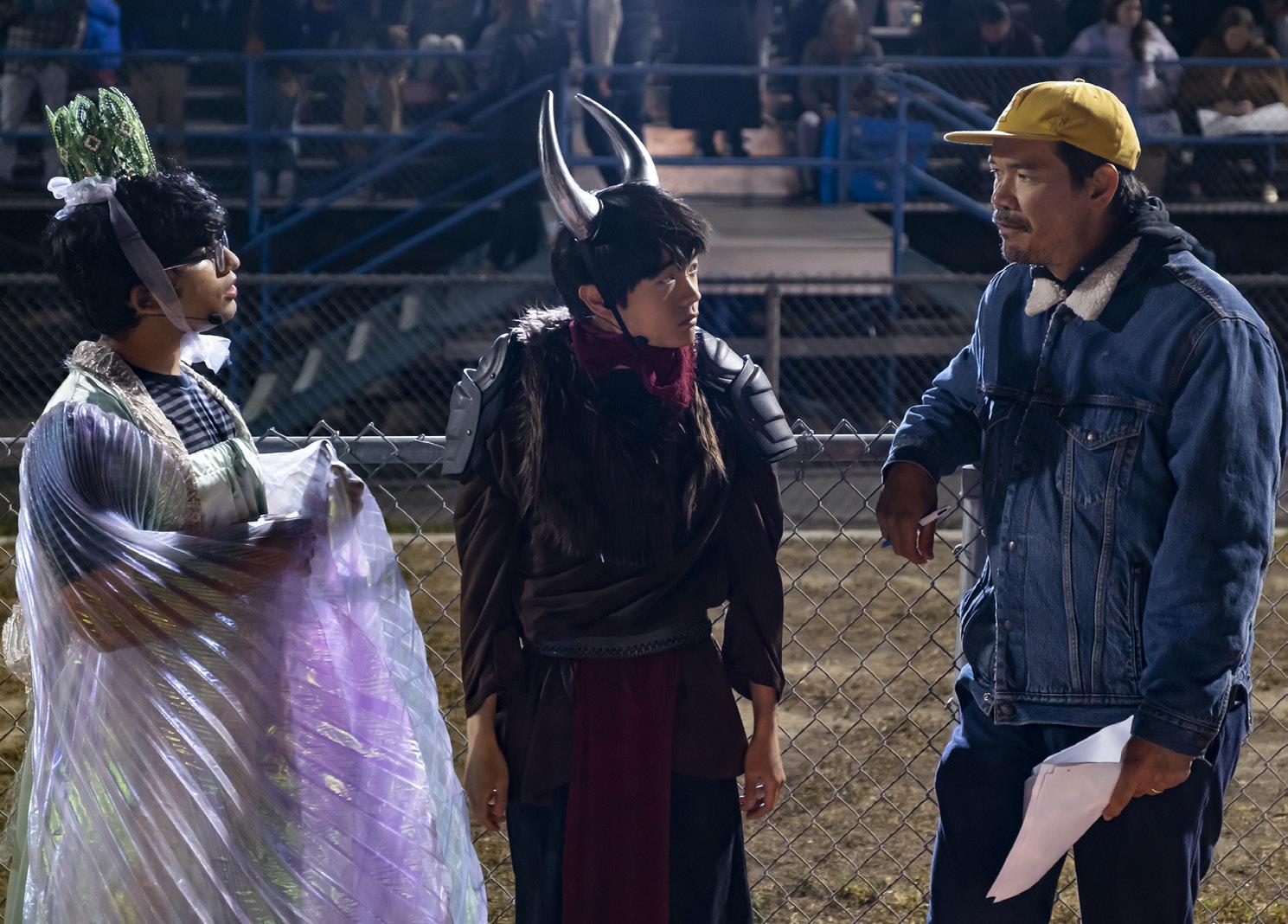
will typecast you? I’m happy to keep telling Asian stories because it’s fun! But I’m interested in dipping into many different cultures, which is one of the reasons I want to do the next Avengers . It’s such a diverse team of characters that, honestly, when you mix all those different ethnicities in one room, it feels like Hawaii.
Any favorite scenes in the episodes you directed? And why were they your favorites? I love the end of Episode 1, seeing Jin’s parents arguing over themes of confidence and standing up for oneself; in their context, it’s a wife telling her husband that he deserves more than he thinks he does in his workplace. The intercutting of that with Wei and his dad’s kung fu fight at Jin’s high school was something we were loosely interested in in the script phase, but we really found it in the edit. Seeing the visuals of an actual kung fu fight mixed with a kid sitting in his bedroom listening to his parents argue was unexpectedly cohesive – when it all came together. And I loved it.
You’ve had the same camera and lighting team on most of your projects. Does that familiarity with your union crew help your creative process?
Film sets are full of artists, and I’m always looking for people who are obsessed with their crafts and have a personal vision. But that’s like twenty percent of what I’m looking for [in a production team]. The other eighty percent is people who know how to communicate clearly and can get along in tight spaces and pressured situations. Basically,
people who know how to collaborate. And that doesn’t mean people who just know how to follow orders. Collaboration means people who can take in an opinion and give an opinion back, so we can brainstorm something we’re all excited about. When I find those people, and when Brett finds those people, we hang onto them as much as we can. Otherwise, you’re starting from scratch and have to figure that part out again. Once we have a group of people who know they are artists, working in a giant team of artists, it becomes a very fun work environment.
And this crew has those qualities? 100 percent. One of the things that’s very special about this particular crew is that they have an awareness about their demeanor – the way they talk to each other, or they don’t talk sometimes. They are a sensitive team who look at the call sheet and ask about the scene we’re shooting. And if it’s an intimate scene, when the actors step on set, you can hear a pin drop, because they know they are contributing to the performance of the actors. Talk to any actor in the theater and they will say their performance drastically changes depending on what the audience gives back. On a film set, the only audience the actors have is the crew. So, the temperature of the crew drastically affects the performance of the actors. That’s one of the things I’m most proud of with this crew –they know it’s more than just the skills they bring as craftspeople. It’s also the environment they help to create for all the other artists on that set, especially the actors.
American Born Chinese is a high-flying, genre-busting series from Disney+ that mashes up high school comedies, family dramas, and martial arts films.
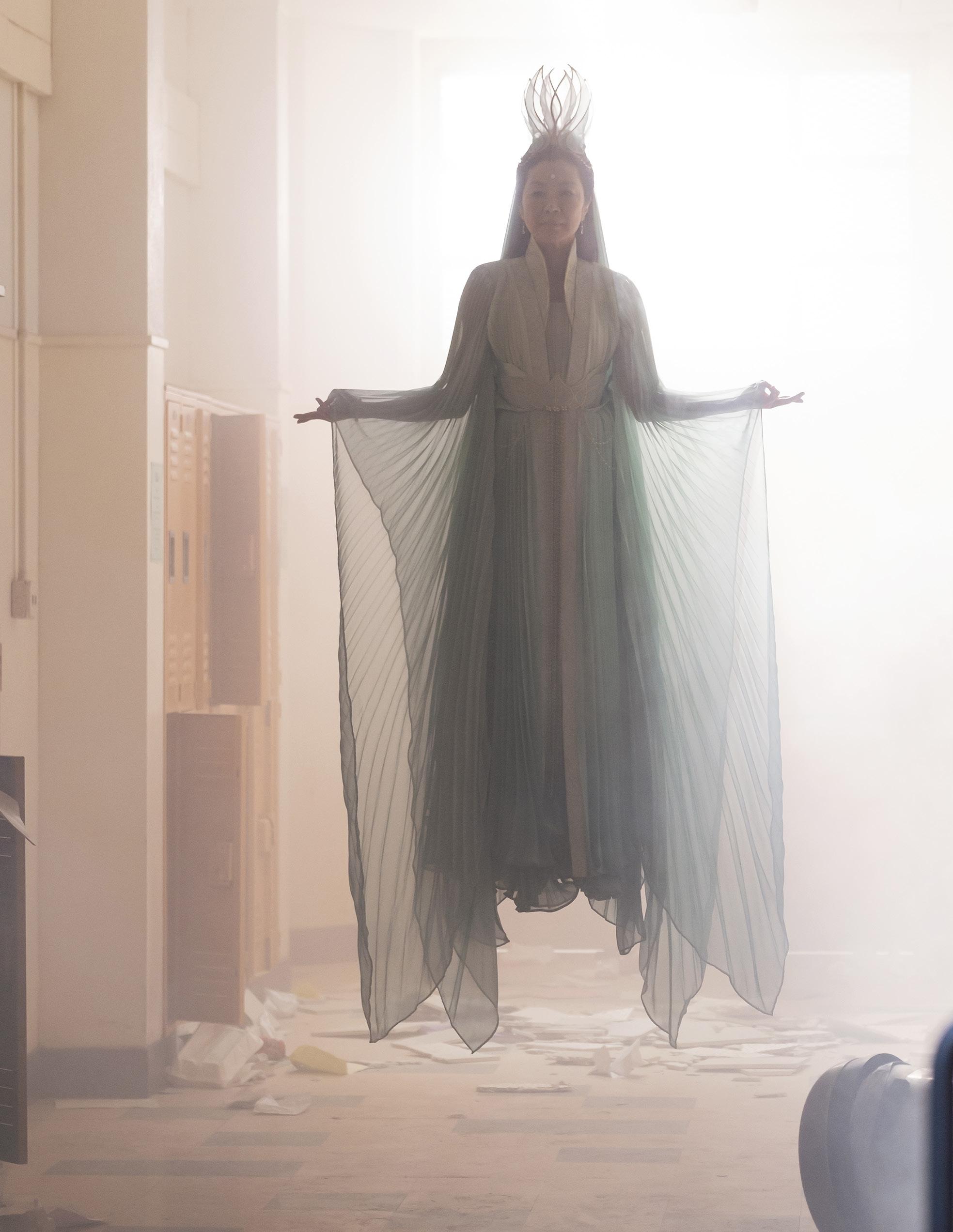
Everyone knows the television landscape circa mid-2023 is a crowded place. Episodics, live events, unscripted reality, sitcoms, limited series, and more spill out from a vast array of platforms, making it hard for viewers to keep pace. How then to stand out in a sea of content?
There’s no formula, but adapting a popular graphic novel aimed at teenage readers that blends a host of historical TV and film genres (à la the 2023 Oscar winner Everything Everywhere All At Once) is a great place to start.
It’s what small-screen audiences will enjoy this summer with the ambitious new Disney+ series American Born Chinese , created by Emmy-winning writer/producer Kelvin Yu ( Bob’s Burgers ), executive produced by Director Destin Daniel Cretton ( Shang-Chi and the Legend of the Ten Rings; see Exposure, page 18), and adapted from Gene Luen Yang’s New York Times bestselling graphic novel.
Co-shot by Cretton’s longtime director of photography, Brett Pawlak, and Alan Poon, CSC, American Born Chinese deftly juggles multiple stories. Most central is that of Jin Wang (Ben Wang), a suburban tenth-grader who’s coming off a summer during which his best friend, Anuj (Maha Alam), has deserted him; his new crush, Amelia (Sydney Taylor), only wants to be “buds”; and his parents (Chin Han and Yeo Yann Yann) are always arguing (over Dad’s reticence in asking for a promotion).
Parallel to Jin’s home and school life is a 1990s sitcom enjoying a resurgence on viral media. Beyond Repair features a good-natured Asian neighbor, Freddy Wong (Oscar-winner Ke Huy Quan), who’s made the butt of clownish gags (think ceiling fans falling on his head) whenever he spouts the tag line: “What could go Wong ?” When Jin’s mishaps at school (mirroring Freddy’s gags on TV) are made into a viral meme, Jin becomes the poster teen for racism and bullying.
But wait – there’s more! Jin’s earthly
problems grow way more complex when he’s asked to shadow a new Chinese student named Wei-Chen (Jimmy Liu), who is really the son of a mythological god named the Monkey King, aka Sun Wukong (longtime Hong Kong cinema actor/director Daniel Wu), and resides in Heaven. Per a recent dream, Wei-Chen has stolen his father’s all-powerful Iron Staff and headed down to Earth to find the (mythical?) “Fourth Scroll” that will bring peace to Heaven’s warring factions.
Pawlak, whose work with Cretton on the indie feature Short Term 12 helped the film win the 2013 SXSW Competition Award, calls American Born Chines e a clear departure. “Destin and I’s past work has been for stories that don’t require a heavy-handed visual aesthetic, so we leaned into a ‘less-is-more approach to the cinematography,’” Pawlak reflects. “But this was based on a graphic novel, so we gave ourselves permission that ‘more is more,’ and tried to have fun with it. We didn’t want to replicate the comic book, but we did want to lean into the folklore of the Monkey King and the many different worlds portrayed in the show.”
Shooting Episodes 1, 3, 5, 7 and 8 (with Poon lensing 2, 4 and 6), Pawlak knew his work with Cretton on the pilot would establish the many looks moving forward, including the Monkey King’s realm. “I planned on shooting on the Sony VENICE, which meant we could take
advantage of all its different formats,” Pawlak continues. “So, I pitched Destin on shooting Heaven in anamorphic and Jin’s world in spherical, with the idea that by the final episode the two worlds would connect. Heaven was mostly based on those great Hong Kong martial arts films, where the sets, lighting, and effects are practical and familiar. Like those movies, we leaned into the comedy with zooms instead of pristine dolly moves or Steadicam.”
The look for Heaven came from Pawlak’s interest in Kodak Aerochrome (infrared negative) and wanting to create a LUT loosely based on that film stock. “I usually keep things fairly naturallooking,” he adds, “and was initially reluctant to push this through; as what we came up with pulled out all the green at Disney Ranch [an 890-acre vegetationrich location in nearby Santa Clarita] and made it pinkish red.”
Light Iron Supervising Colorist Ian Vertovec, whose partnership with Pawlak goes back to Short Term 12, says the DP sent him a text with some Kodak Aerochrome stills from Google and modestly asked: “Can you make me a LUT based on this?”
“I told Brett I thought I could,” Vertovec laughs, “and walked outside to take some iPhone stills of grass and then load them into Baselight. The main thing Brett was concerned with was pulling out the natural greens, so I was looking for images that
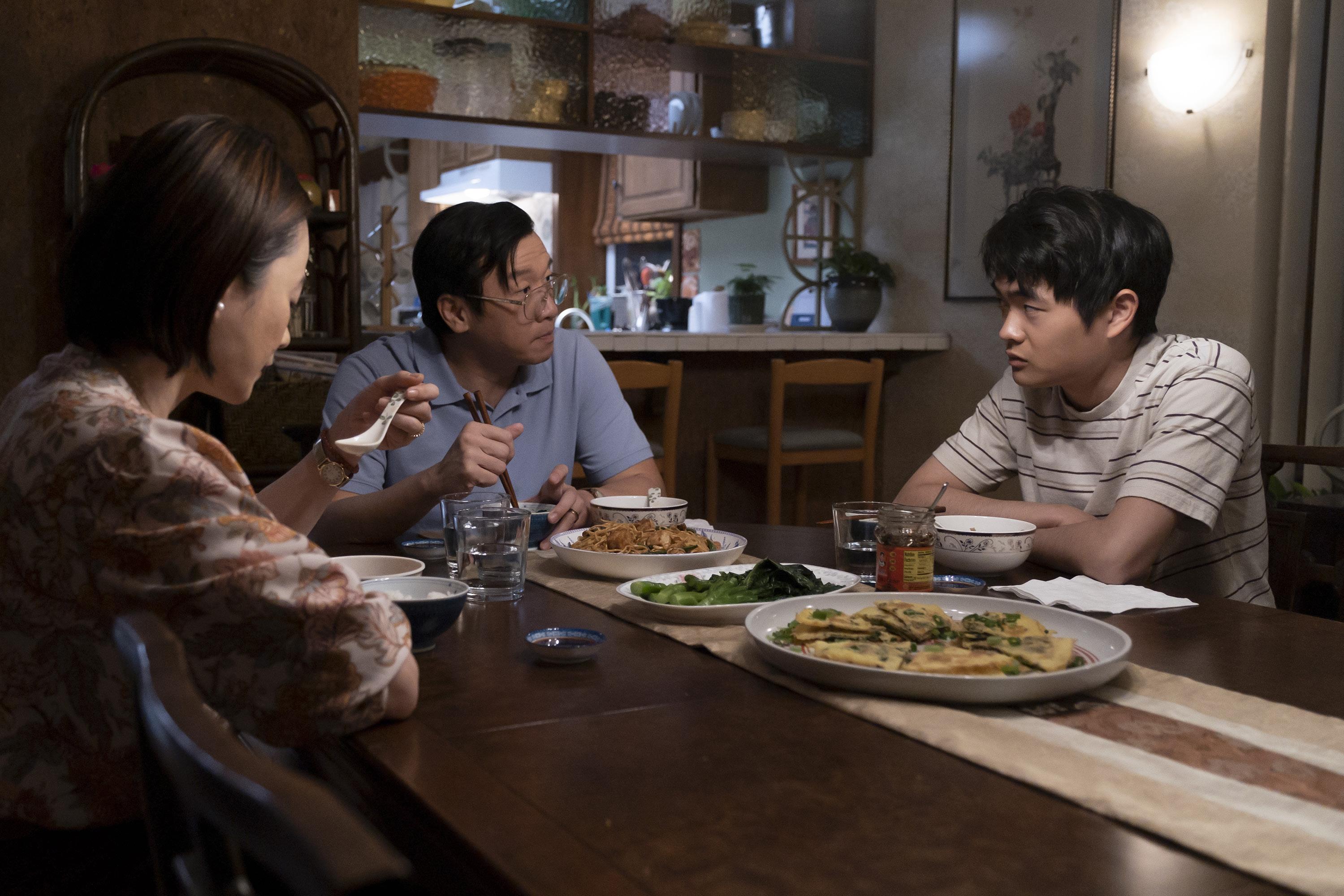

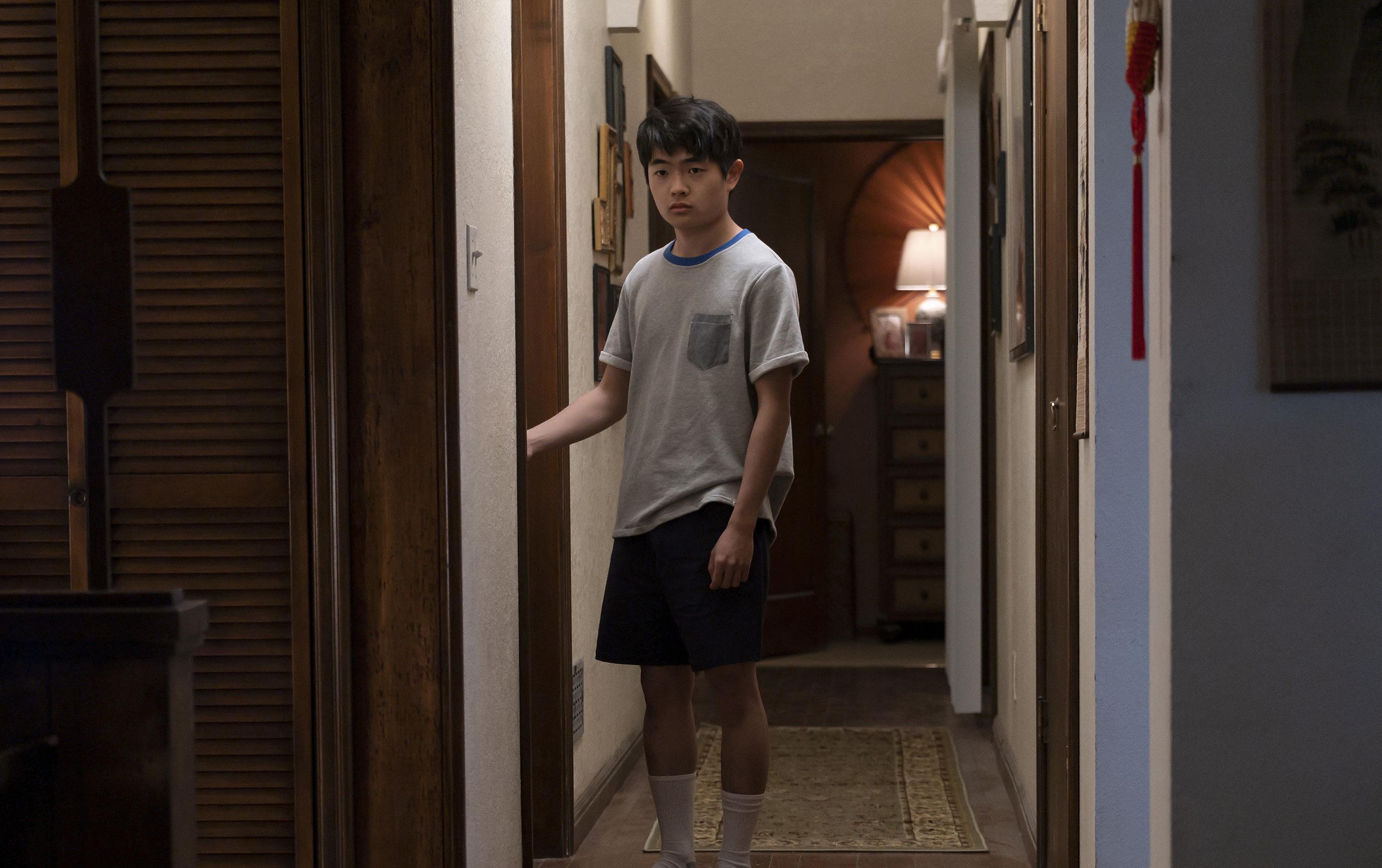

LEFT: CO-DP BRETT PAWLAK CREATED A LUT FOR THE MYTHOLOGICAL PORTIONS OF THE SHOW (ABOVE AND TOP, PAGE 27) BASED ON KODAK AEROCHROME INFRA-RED NEGATIVE. BUT, PAWLAK NOTES, THE AEROCHROME LUT RETAINED “THE SAME BUILDING BLOCKS AS THE LUT FOR JIN’S WORLD, (BOTTOM THIS PAGE AND PAGE 27), SO WHILE THEY DIVERGE IN COLOR AND TEXTURE, THEY OVERLAP IN DENSITY AND CONTRAST AND – HOPEFULLY – ARE CONNECTED WHEN EVERYTHING COMES TOGETHER LATER ON.”
would have other colors, plus vegetation. After I sent him those iPhone shots, we got together and looked at more Aerochrome images, as the reds can vary from firetruck red to hot fluorescent pink. I married that Aerochrome hue shift with other LUT’s from the vintage Kung fu films Brett and Destin wanted to evoke. The result was this combination that made the greens not only go pinkish red but also dark and textured.”
Pawlak says the LUT for Heaven retains “the same building blocks as the LUT for Jin’s world, so while they diverge in color and texture, they overlap in density and contrast and – hopefully – are connected when everything comes together later on. I did warn [all the other departments] that this LUT wasn’t without its challenges with regards to its effect on color and saturation.”
The Heaven LUT is best displayed in the pre-title sequences for Episodes 1 and 2. The first is a breathless chase where Wukong, trying to retrieve the Iron Staff from Wei-Chen, shape-shifts into different animals. The action covers various environments, from a vast red field to a forested pond to a spectacular rocky outcrop and waterfall, which Wei-Chen leaps across to escape his father. Second Unit Director of Photography Bruce McCleery, ASC (for Episodes 1-5) says “the production staff was initially perplexed by our unusual requests for Cable Cam, two Ronin heads, an off-road Pursuit Polaris tracking buggy, a 62foot MovieBird crane on an all-terrain base, and a heavy lifter drone, but the results were fantastic. The wire work is so unusual and the camera has so much energy – all that combined with Brett’s completely unique LUT made for a great opening sequence.”
Episode 2’s prologue shows Wei-Chen walking through a sea of wispy red trees with Guanyin (Oscar-winner Michelle Yeoh), aka the Goddess of Mercy, who was asked by Wukong to oversee his son’s Earthly quest. Vertovek adds that “one of the reasons why the scene looks so great is that it feels like it shouldn’t even be possible. Michelle Yeoh’s dress was actually green, so we had to do some very high-quality roto work for it not to shift red.” Like Pawlak, Vertovek says it was important to previsualize the Heaven LUT “to give Brett the ability to show Hair, Makeup, Costume, Production Design, even the actors how it was being captured in camera. You can tell everyone that everything you see green on set will shift red, but that’s not as good as showing them what you mean.”
Episode 1 establishes other visual cornerstones – the 1990s sitcom, Jin’s Southern California ranch home, and the first (of many) kung fu fights. Pawlak says he sourced a mixed bag of vintage prime lenses through Dan Sasaki at Panavision. “I’m not even sure where the anamorphic zooms came from,” he laughs, “as Dan is sort of an alchemist at piecing together older glass. For Jin’s world, which is all spherical and mainly primes, I was able to come in and look at their VA lenses, which were in prototype at the time. Like most of Panavision’s glass, they were very sharp and pleasing; the fall-off was great and rendered well for skin tones. And these [VA primes] were all fairly matching, which is not typical when using multiple sets of vintage lenses. There can be big shifts in color temperature, but both full sets were uniform and performed well.”
For the 90s TV show, Pawlak shot 4:3 on the VENICE with standard Panavision zooms. “The look for all the various worlds is heightened in one way or another,” he continues. “The TV show was a bit campy and not meant to duplicate a sitcom. But we did shoot on zooms and stopped down [for depth of field] so it wouldn’t feel cinematic. We made a separate LUT and added some noise and grain in post that was different from anything we did in Jin’s world.”
Regarding the sitcom look, Vertovec says that “when you intentionally want to degrade footage, it can be best to sharpen, then blur, then sharpen, then blur again, as lowresolution footage is not so much blurry as lacking detail. We did pull up reference stills from sitcoms of that era – Seinfeld, Friends, Full House – anything that was most likely shot in SD [standard definition] analog.”
Pawlak says his on-set process is to shoot as close as possible to what the final color will be. “It’s the best way for me to show the intention from set to dailies,” he describes. “I will shoot tests as early as I can and bring in the colorist to make a show LUT, which, hopefully, is ready on day one and will carry through the series. That way, if we want to warm something up, instead of changing things in the CDL [color decision list], I’ll just change the color temperature settings in the camera. That communication is important as the show moves through the pipeline into final color.”
Production designers Michele Yu and Cindy Chao, who, like Cretton and Pawlak, come from indie features, point to another key look, Jin’s home, as a stage build they did with
camera (and practical lighting) in mind. “We pitched Brett and Destin the idea of a midcentury-style ranch house – common to where Cindy and I grew up in Southern California,” describes Yu, who, like Chao, is of ChineseAmerican descent. “We saw this family as having chosen this house as it represents the American dream, even though it’s not quite working out as they may have hoped.”
For the build, Yu and Chao pored over period blueprints, mixing parts of different designs. “It was intentional that we create a direct eyeline from the living room to the kitchen, dining room, and hallway,” Yu adds. “We thought about where Brett’s camera might land and what it would see. That’s reflected in a great tracking shot [in episode one] where Jin’s parents are walking through all those different spaces.”
Pawlak says each of the show’s locations was treated like a character. “We tried to keep Jin’s home as practically lit as possible and light from the windows, or just augment what Cindy and Michele had inside. What [Chao and Yu] did with colors and textures gave the house a sense of weight relative to what Jin’s going through with his parents. They were so locked into authenticity, right down to the popcorn ceilings.”
The pair says the color palette for the series was inspired by the graphic novel. “Gene [Yang] created an entire deck of color references for each of the characters in his comic book, and we hung that up in our office for [the art department] to see,” Yu recalls. “We then spun that into our palettes, which share [with Yang’s work] colors that were muted and complex – not the primary reds, blues and yellows associated with comic books. We did a lot of greens and oranges and yellows and blues together, in keeping with how Heaven and Earth blend in the story.”
Chao adds, “We tried to mirror the themes in the graphic novel, about transformation and reflection. Jin’s school, in general, is not an inviting place for him. But his scenes with Amelia are different, as they reflect a kind of transformation, with more golden tones – oranges and blues – to connect with the golden hour of Heaven.”
School). Both Chao and Yu praise 2nd Unit Director Peng Zhang – working with McCleery – for his thorough preparation. “Peng’s way to previs is to shoot the entire sequence, with actors and minimal props,” Yu laughs. “We’d look at his previs and say, ‘Okay, the stunt person appears to jump 20 feet in the air, so we won’t need to build a ceiling into that set.”
For the “stunt hallway,” which gets destroyed in the fight, Chao and Yu rebuilt a section of the Grant High hallway on stage, scrupulously matching paint and textures. “We also built a mini-hallway within that hallway that was gimbaled at an angle, for a specific move Peng wanted in the scene,” notes Chao, who, along with Yu, had many conversations with Pawlak, Special Effects, VFX, McCleery, Props, Construction, etc. to isolate those moments in the sequence that would require added builds on stage. “We also built a trampoline runway for the hallway fight that Peng initially wanted for flips and stunts,” Chao adds. “But they ended up doing all that with wire work.”
Zhang, whose extensive work choreographing movie fights evolved out of his martial arts background, says the wire work/flying maneuvers were different from traditional Hong Kong cinema style. “Chinese and Chinese-Americans who grew up on martial arts films,” Zhang explains, “will recognize many traditional kung fu fighting moves in this show, but they’ll see they’re done with a new approach. Of course, each fight scene has to start with the characters and their journey at that moment; so, it was important to Destin that the fight in episode one be grounded in that father-son dynamic. We know the Monkey King is powerful, but in that fight, he’s playful as he’s testing his son’s limits with the Iron Staff.”
Unique to American Born Chinese was the close connection between 1st and 2nd units. McCleery, who had worked on a large Chinese film Zhang directed, says lensing for Zhang “is a delightful challenge. Peng is precise and focused, and demanding about the specifics of the fights, as they serve the storytelling in a vital way,” McCleery shares.
Jin’s school is also where the first kung fu fight takes place. Wukong, having come down to earth to take his son home, faces off with Wei-Chen in a hallway outside the biology lab (partially shot on location at L.A.’s Grant High

“On American Born Chinese , Peng and I worked closely with our A-Camera operator Dave Anglin, who is an expert with small gimbals,” McCleery continues. “We mostly relied on two Ronin heads, one outfitted with an ALEXA Mini LF and a V-series 1530mm zoom lens, the other a small singlehanded mini-Ronin gimbal paired with a RED
ABOVE/RIGHT: FOR THE FIRST BIG KUNG FU FIGHTING SEQUENCE IN EPISODE 1, 2ND UNIT DIRECTOR PENG ZHANG AND 2ND UNIT DP BRUCE MCCLEERY, ASC, RELIED ON A-CAMERA OPERATOR DAVE ANGLIN’S ATHLETIC PROWESS TO INTEGRATE THE CAMERA DIRECTLY INTO THE FIGHT CHOREOGRAPHY. “WE COULDN’T REMOVE SET WALLS AS THEY ARE MOSTLY SEEN IN THESE ACROBATIC MOMENTS,” MCCLEERY NOTES. “AT A CERTAIN POINT, THE SEQUENCE ALLOWED US TO GET SUPERNATURAL WITH THE LIGHTING. IT BECAME ATMOSPHERIC AND REALLY FUN.”

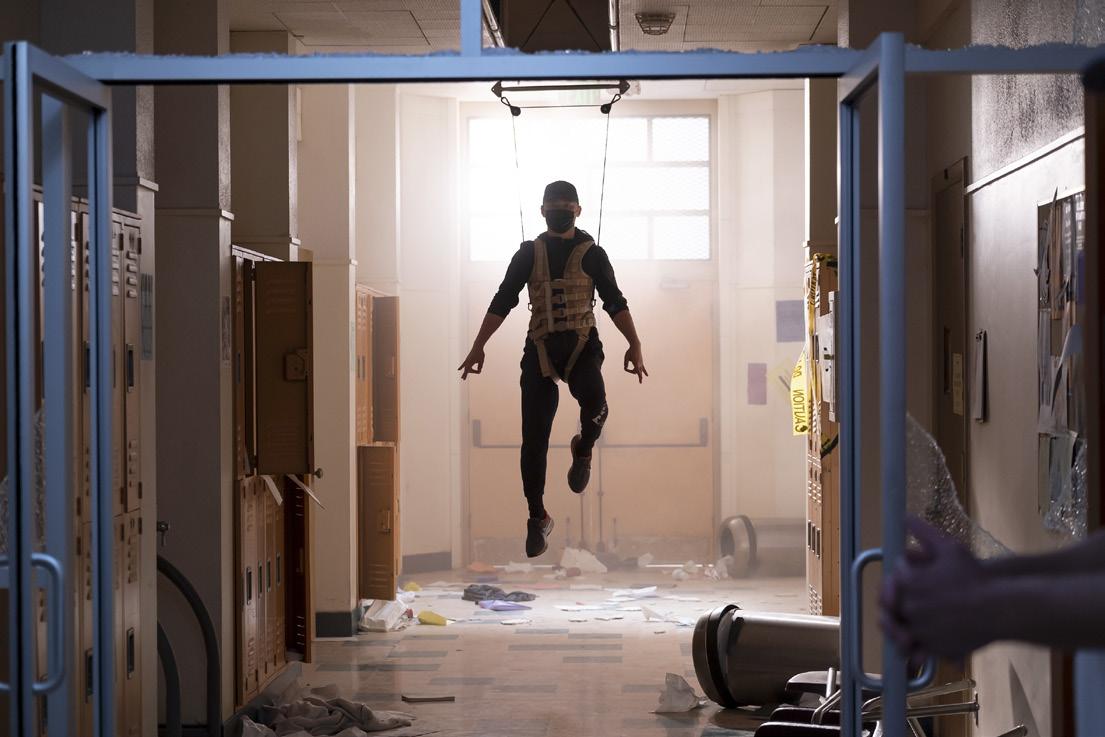
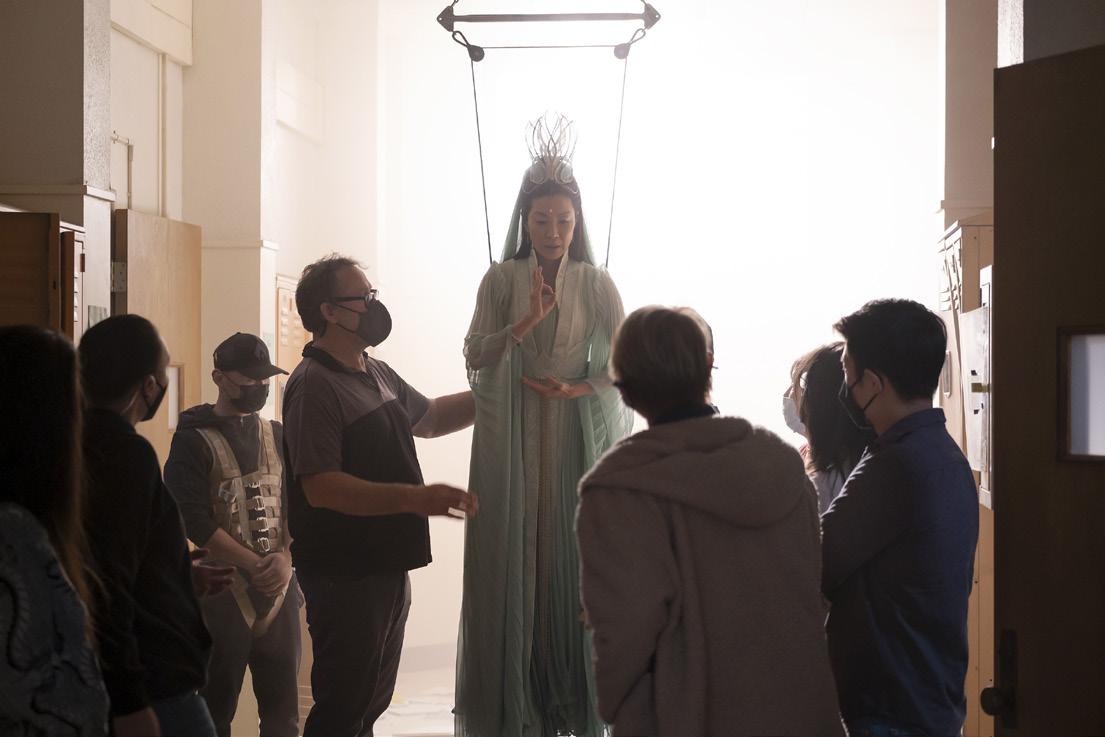
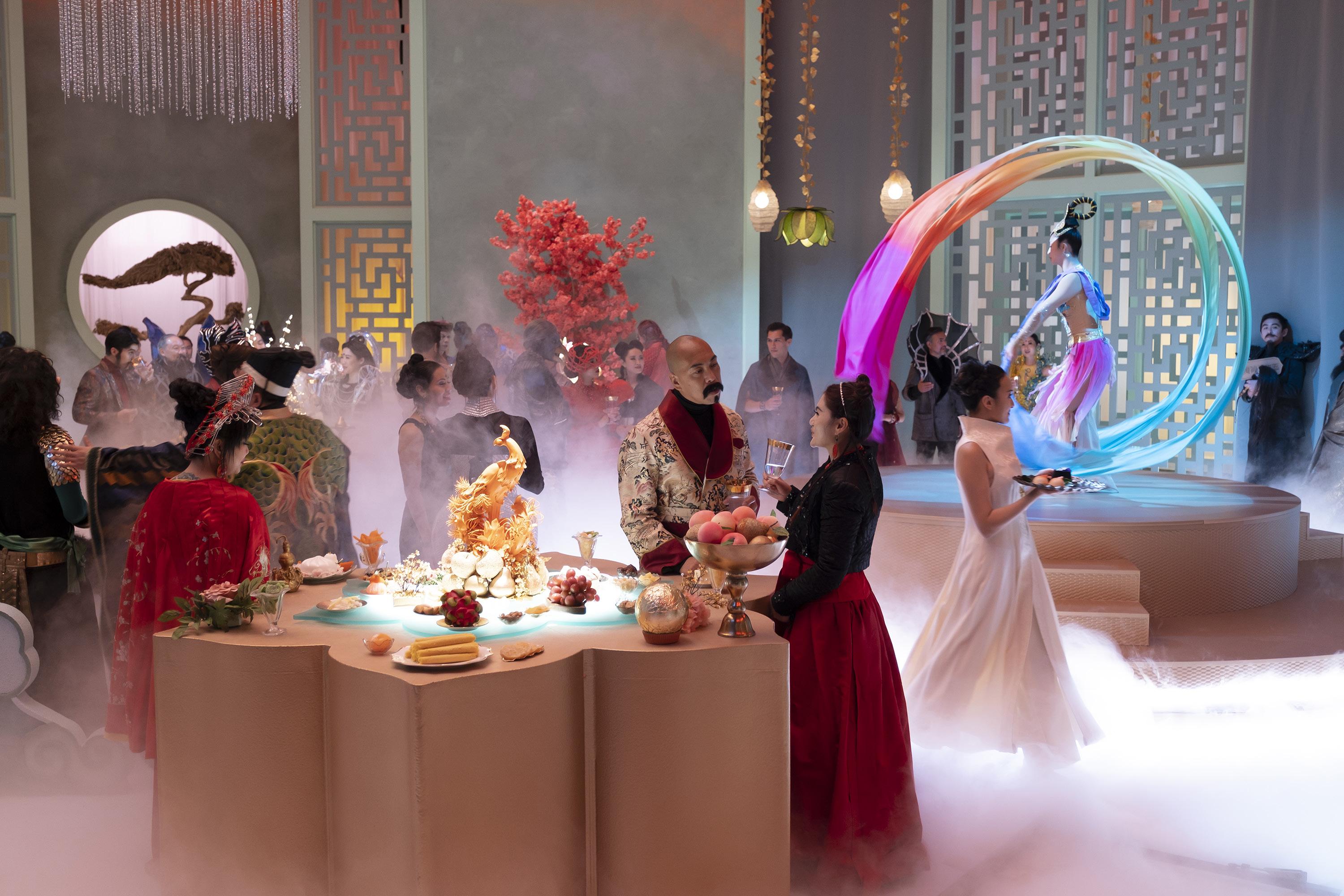
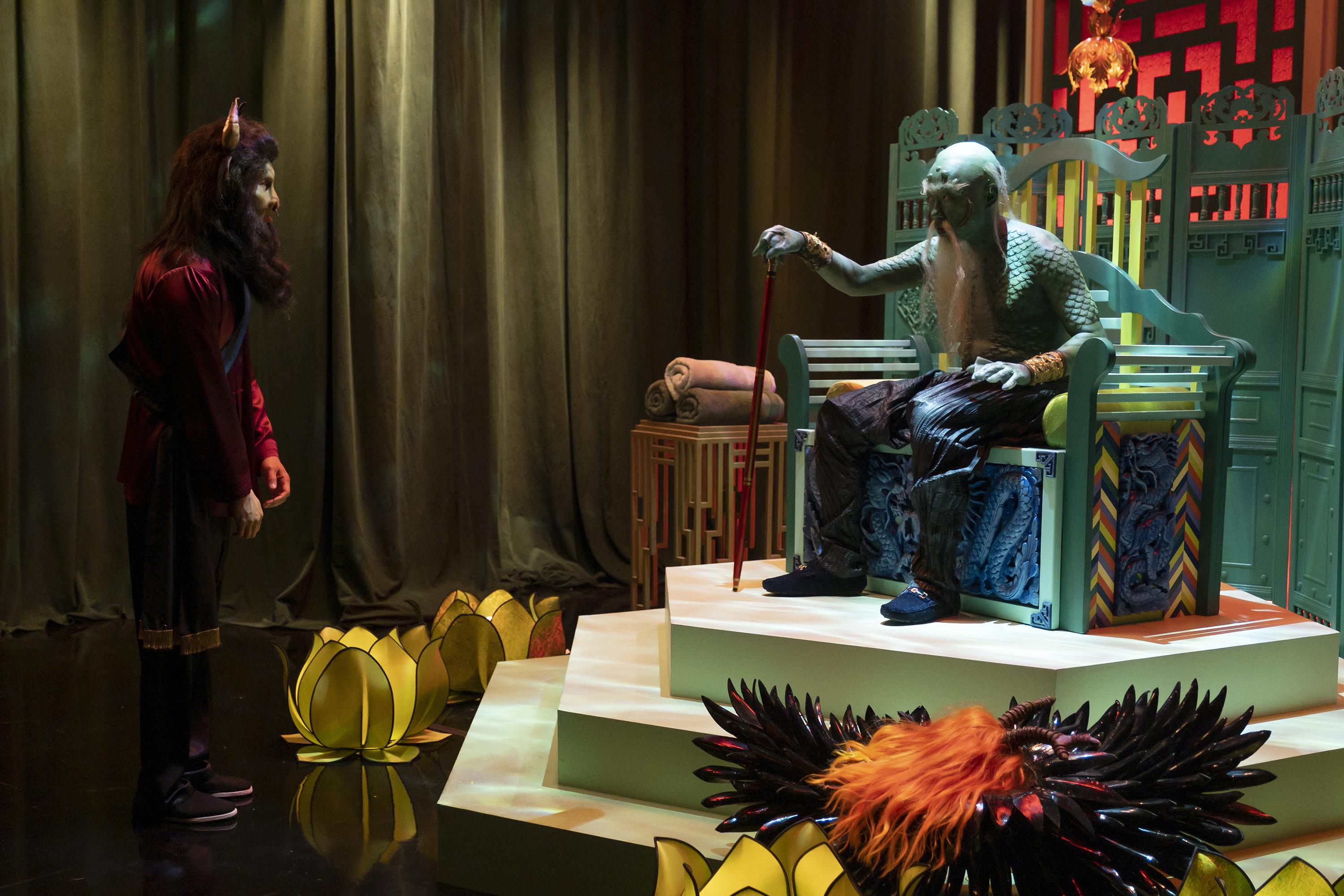
LEFT: FOR EPISODE 4, SET ENTIRELY IN “HEAVEN,” CODP ALAN POON, CSC, SAYS HE, DIRECTOR ZHANG, AND PRODUCTION DESIGNERS MICHELE YU AND CINDY CHAO LANDED ON A LOOK THAT WAS “ETERNAL TWLIGHT, MEANING THERE WAS NEVER ANY TIME PASSING OR DIFFERENTIATION BETWEEN DAY OR NIGHT,” POON EXPLAINS. “WE COULD LINGER IN THIS ETHEREAL PALETTE OF SOFT PINKS, PURPLES, AND ORANGES.”
KOMODO and a Tokina 11-20mm zoom lens. In the hallway, the tight space and the fluidity of the small Ronin package combined with Dave’s athletic prowess allowed us to integrate the camera directly into the fight choreography. We couldn’t remove set walls as they are mostly seen in these acrobatic moments. At a certain point, the sequence allowed us to get supernatural with the lighting. It became atmospheric and really fun.”
Pawlak agrees, adding that the many fight sequences (at least one per episode) was one of his favorite things about the show. “Peng’s animatic broke down all the fight choreo for each sequence,” Pawlak recalls. “So, First Unit could figure out everything to bring in, with regard to props; breakaway glass; and lighting pre-, mid-, and post-fight. We would shoot all the dialogue within each fight, which could be a lot, and then Peng and Bruce would come in to finish the fight portions. Some of the actors, like Daniel Wu [Monkey King], did their own stunts, so he’d be with us doing first unit and then stay on for second unit, with both units working simultaneously for every episode.”
Episode 4, which takes place entirely in Heaven, was an outlier for which Pawlak and Cretton gave Poon and Zhang (who also directed the episode) full creative freedom. Poon (another indie-world DP) says one advantage of episodic TV is the chance to work with different directors. “Brett and I shared images that spoke to us, and there were many overlapping ideas and themes,” he recounts. “Framing with a lot of headroom was one visual motif we both landed on. I kept my eye on the pilot dailies and felt there was a lot of trust, from both Brett and Destin, as well as our showrunner Kelvin Yu. They gave us the freedom to explore different approaches with each director. I was also able to lean on our [Guild] camera operators Chris Arata and Trey Clinesmith to help keep things consistent, as well as [Chief Lighting Technician] Eric Fahy, who was instrumental in bridging the lighting approach between episodes.”
With Episode 4 all on stage, Poon could switch up the lensing. “Brett shot the Heaven flashback exteriors [in the pilot] on Cooke Xtal Xpres lenses, but that was mainly singlecamera action sequences, which pushed a more stylized look,” Poon recalls. “After discussing this with Brett, and with the help of Mike Carter at Panavision Woodland Hills, I opted to shoot all the ‘Flashback Heaven’
scenes in episode four on expanded T Series and C Series Panavision lenses. The episode was very dialogue heavy, and because we ran two cameras almost all the time, the T’s seemed to be the best fit.”
The episode tells Wukong’s backstory, which begins outside the Heavenly Palace with his best friend, Niu Mowang, for the Sublime Banquet of the Immortal Peaches, an over-the-top party put on by the Gods. As the men enter the Palace, the camera executes a gliding oner that highlights Yu and Chao’s production design. Poon says the shot was originally even longer, “with the camera starting overhead and looking straight down onto our ribbon dancer. We had [B-Camera/ Steadicam Operator] Trey [Clinesmith] start on a crane that eventually leveled out as Wukong and Mowang enter through a moon gate. Peng, coming from his fight choreography background, was so inventive with how he wanted the camera to move, and this was an opportunity to see the full scope of the space.”
Zhang had a vision for the Chinese Heaven stairway as well as the Palace Banquet Hall. “But it was really [Chao and Yu] who were instrumental in bridging what Peng had in his head, with what could be executed in a timely manner,” Poon adds. “I regularly dropped into their office to talk about the look and help define and redefine what was possible. With Peng’s input, we decided on an atypical vision for this Chinese afterlife.”
“Eternal Twilight” was what the team landed on for the party, “meaning there was never any time passing or differentiation between day or night,” Poon explains. “We could linger in this ethereal palette of soft pinks, purples, and oranges. Inside the banquet hall, the palette became more vibrant with splashes of red, greens, yellow/orange and teal. Peng wanted the spaces to feel obviously theatrical, like a stage play; and with Cindy and Michele’s designs, in combination with lighting and dry ice, we achieved a unique look.”
Yu and Chao say they had many different iterations of Heaven in prep, including the idea to shoot on location at L.A.’s Skirball Center, where minimalist lines provided a link to contemporary Chinese architecture. “Ultimately, the conversation came around to a Heaven that was based on those older Chinese melodramas,” Yu recounts. “Kind of cheesy and theatrical – and requiring a built set with different backdrops and stations.”
Those included Penzai (or Bonsai) trees, pillars, a bamboo forest, a moon gate, and 20-plus-foot-high lattice screens built in the round to suggest an endless hallway.
“We put the stage in the center so the camera could always be seeing some kind of movement or action in the background,” Chao notes. “The Golden Lotus buffet tables had built-in LED ribbon lighting and were motorized to mirror the movement Peng and Alan wanted with the camera.” “We even sent reference photos of billowing chiffon fabric to [VFX Supervisor] Kaitlyn Yang, for the CG extensions they did when the camera looks up toward the ceiling,” Yu adds.
Later in the party, Wukong and Mowang steal the Iron Staff from the next “Great Sage” Ao Guang, aka the Dragon King (stand-up comic Jimmy O. Yang under a ton of prosthetic make-up). The action takes place in a slimy, wet “lounge room” (Guang is really a fish), where Poon says Chao and Yu “sourced a dark green velvety material that picked up light in an interesting way and was used as a backdrop. We installed a series of Rosco theatrical projector lights that had a ripple effect built in to create an animated water-like quality that washed over the billowing curtain as well as some of the set piece,” he notes.
To cover Wukong’s speech (which results in his becoming the Great Sage and sends Mowang off on a thousand-year rage), Zhang and Poon used a Technocrane to push through the moon gate for the widest possible angle, before moving in for coverage.
“The camera is looking up at [Wukong] as he descends from above, with slow drifts left and right to create some parallax and suspense,” Poon remembers. “For the reactions, we shot looking down as if we were on the stage. Each banquet table had an elaborate centerpiece that we hit with narrow-beam Source Four fixtures rigged into the grid above. Those lights became the sparkle in our backgrounds and motivating glow for any of the scenes around the tables. The stage was rigged with a semi-circle of large softboxes with SkyPanels, and a dozen LED theatrical moving lights – Solaframe 750s and SolaHyBeams. Eric and his team were key in helping to design the flexible lighting, and Rigging Gaffer Dave McGrory made it all look easy.”
Zhang says traditional Chinese stories of the Monkey King are all centered on action. “He’s beating up everybody in those stories – huge fighting scenes,” Zhang laughs. “But
episode four is all about the dialogue, and how Monkey King feels. It’s a very original take on Heaven, and the oner we do with Wukong and Niu Mowang shows that. The episode is not about the party – it’s about these two friends and what happens to their relationship – and the oner reveals the party, the guests, and the feelings of these two guys, all at once. The challenge in television, of course, is you don’t have a lot of prepping time for a long complex shot. But I think everyone did a great job.”
Poon teamed with another ChineseAmerican icon, Emmy-nominated Actress/ Director Lucy Liu, for Episode 6, which also features a one-off location – a bowling alley where Amelia throws a birthday party for Jin and a fierce battle ensues between Niu Mowang and Sun Wukong. Chao says they used a bowling alley in Eagle Rock “that was no longer functional and had a back area we could transform into the arcade [where Monkey King and Bull Demon fight]. We linked that space up with the prize area, thinking about how much destruction would happen so near where the kids are bowling.”
For the party/dance area, Poon says rows of Hyperion and Titan tubes were rigged “to glow the cascading ceiling over the lanes, as Lucy wanted to make sure it felt vibrant. Eric [Fahy] suggested we start with the color package we created for Heaven, and it looked so good on camera with Brett’s LUT, we just went with it.”
Yu says the design approach was the opposite of Jin’s house. “The sightlines in Jin’s house were clear but always had a screen or partition to shoot through. For the arcade, we needed to close down an open space into something more confining and include practical lighting that was contrasty and distracting. That’s easier said than done when you’re trying to figure out where you can put a neon tube that won’t get smashed by a stuntman!”
Poon notes that director Liu is “a fan” of oners, zoom lenses, and cross-coverage, all to keep the performances flowing. “That certainly required some foresight so we could move through the space without having fixtures on the floor,” the DP adds. “We mainly relied on practicals, neon lights, and rigging key lights into specific areas in the ceiling that we would avoid seeing. The first scene played out in a choreographed oner using a Technocrane with a Panavision 35-400 zoom, and racing alongside was a Steadicam
RIGHT: FOR AN EXTENDED BIRTHDAY PARTY/KUNG FU FIGHT SEQUENCE IN EPISODE 6, YU AND CHAO NEEDED TO “CLOSE DOWN AN OPEN SPACE INTO SOMETHING MORE CONFINING, AND INCLUDE PRACTICAL LIGHTING THAT WAS CONTRASTY AND DISTRACTING,” YU RECALLS. “THAT’S EASIER SAID THAN DONE WHEN YOU’RE TRYING TO FIGURE OUT WHERE YOU CAN PUT A NEON TUBE THAT WON’T GET SMASHED BY A STUNTMAN!”




profile shot, which would turn into closer coverage. It was a bit hairy to block out, but in the end, it saved a bunch of time and kept the performances alive.”
For a quiet dialogue scene with Jin’s parents at the end of Episode 6, Poon remembers he and Liu “trying to block it out in the dark with flashlights, as they were filming in the same stage! It’s tricky working around a kitchen sink and counter that has actors facing into walls. We finally decided to lens it through the opening that leads into the dining room. It allowed the actors to naturally open up to camera; the body positioning and the tension created between them looked so beautiful in the wide shot and illustrated their marital stress. Lucy decided to play it out in a wide with no coverage. I offered the slow push-in to help create some added tension and allow us to get in a bit closer for the second half. We dappled the background with some mixed color temperature lighting: soft cool with some hard tungsten to make it feel late afternoon.”
The tension ramps up in the final two episodes (both shot by Pawlak). Episode 7, directed by EP Erin O’Malley, features several key scenes, including the actor who played Beyond Repair’s Freddy Wong at a present-day cast reunion talking about racial typecasting, as well as the aftermath of Mowang’s clash with Wukong (in Ji Gong’s lair beneath the Golden Temple restaurant), with Wei-Chen trying to save his father.
When we first see Ke Huy Quan’s character, in a studio with a live audience, talking about his time playing Freddy Wong, it feels like a completely different series. Pawlak describes the opening of Episode 7 as a “meta moment, and probably the most real in the show as most of us had seen Everything Everywhere All At Once when we shot it. While Ke had not yet won the Oscar, we knew that monologue was about his journey as an Asian actor in Hollywood.” Pawlak says he based the look on the Friends reunion, starting wide on the studio and audience and then pushing in close as Ke starts the monologue. “Because Jin is watching the show on his phone, we wanted that close, personal feel,” he adds, “like Ke’s character is inspiring Jin to assert his identity. While the LUT and lensing are the same, the reunion scene was meant to feel completely different.”
Ji Gong (introduced in Episode 4 at the
Heavenly Gate) and his lair under the Golden Temple are seen in Episode 5, in a swirling, super slo-mo fight with Wei-Chen that reflects Ji Gong’s perpetually drunken state. Ji Gong’s lair, steeped in color, shadow and black light, feels like a brand-new space. When Wei-Chen returns there in Episode 7, seeing his father bested by Mowang in the most violent kung fu fight yet, it has a scary vibe.
“We had to reverse engineer when lighting Ji Gong’s lair,” Pawlak explains, “as we knew it would be a dark, fearful place by Episode 8 [when Jin’s parents find Wukong after the fight]. Series television is challenging in that way, in that you know you have key sets you will revisit over multiple episodes, with different directors, so how do you make the space feel new each time? Luckily, the narrative made it easier, with Mowang setting fire to Ji Gong’s paintings at the end of Episode 7 and turning his lair into a literal inferno.”
Chao says “the Golden Temple restaurant above Ji Gong’s lair was a San Gabriel Valley Chinese restaurant that we kept authentic save for changing out some signage and artwork. It was exciting for us to shoot in a place so grounded in that area’s local ChineseAmerican culture.” As Yu adds, Ji Gong’s lair was shot in a Downtown L.A. studio, “and we used references from artist friends who live in that area. Unlike the restaurant, meant to play as real as it is, Ji Gong’s lair is a fantasy space. Our incredible set decorator, Lizzie Boyle, and her team, brought in everything and our construction and paint teams had stunt pads seamlessly built into the walls. The practical lighting is more saturated than anything we’d seen before, and the space had to accommodate some practical fire effects.”
The season finale is where all the visual and narrative threads set up in the pilot pay off. “From the very beginning, when Destin and I were talking about using different formats,” Pawlak recounts, “the question was how to book-end the series so Heaven is anamorphic, Earth is spherical, and the final episode in Jin’s world connects the two? I still remember the moment when Destin and I were doing final color on Episode 8 and the opening, which is the old TV show in 4:3, cuts to Jin waking up at home, now shot in 2:40. Both of us let out this audible breath because seeing Jin’s world in anamorphic [for the entire episode] brought the two worlds together.”
Because the finale is so ambitious, with CGI, wire work, and multiple points of view, all meant as connective tissue between
myth and reality, Pawlak says the switch to anamorphic lensing made it feel cinematic, “like this big kung fu movie,” he states. “And reshooting all those sets in anamorphic was fun. Anamorphic is both epic and intimate at the same time, and that’s what makes it such a great format.”
Epic is the buzzword for the finale, which includes a cosplay performance on a temporary stage on the soccer field, an extended nighttime kung fu battle in the sky above, and bleachers packed with students, parents, and teachers, watching it all unfold.
For “the most challenging sequence in the series by far,” Pawlak describes, “we had three camera units on the soccer field shooting at the same time. Destin and I were doing the main action with dialogue, the cosplay performance on the stage, and other characters in the bleachers or nearby. We had a splinter unit trailing us and shooting crowd reactions, with Peng’s second unit [Andrew Rowlands took over as 2nd Unit DP from McCleery for Episodes 6-8] doing some of the stunt work. We only had the soccer field for a limited time and could not come back.”
Pawlak says he shaped the field’s fixed lighting as best he could. “Stadium lights are made up of individual globes, which throw lots of shadows and don’t look great, color-wise, on people’s faces,” he explains. “And we couldn’t turn them off because they would take 30 minutes to warm back up. So, we flagged them with fly swatters and augmented when we were in coverage.” They used practical lighting to help guide VFX in post. “The Iron Staff [that Bull Demon plunges into the field] was an eight-foot Titan tube that practically lit the characters. It was programmed to mirror the undulation of the light that goes up to the sky, as were the SkyPanels dimming slowly off-camera. That was all used to give VFX the intentionality as to what was happening with the staff.”
To emulate the stadium light during Bull Demon and Wei-Chen’s battle above the field, Pawlak had four Vortex units rigged on Condors above the stage where Zhang’s second unit was shooting wire work. Pawlak says Vertovec had to reproduce the show LUT the main unit used with the VENICE for a “plethora of other cameras Peng used for the fight scenes” – RED KOMODO and DRAGON, ARRI Mini, and LF among them.
“Shooting a huge kung fu fight in the sky is not that big a deal on a feature movie,
with the time and budget,” Zhang says with a smile. “In episodic TV it’s very hard! We had only two days. But, fortunately, I had developed many ideas for aerial fights with the same rigger on past films that we hadn’t used and could try here.”
Other limitations included the size of the stage (draped with blue screen). “With more space, you can make the moves much more dynamic,” Zhang adds. “But that wasn’t the case, so we had to rely more on VFX than normal. For me, VFX should only enhance an action sequence, never make or break it.” Zhang credits Cretton, “as there was so much less prep time than we’d have on a movie, and Destin was always so quick and confident with his decisions. Also, it was great to direct a whole episode [4] in Chinese!”
For many of the union filmmakers, American Born Chinese was more than just another TV series. The Chinese-Canadian Poon says he was proud to be part of a team “that had such terrific representation, and to be part of creating stories I could relate to on a deeper level,” he concludes. “I hope the series finds an audience, specifically within the Asian-American audience as well as resonating globally with a larger demographic.”
Yu adds that “because there are so few shows like this, culturally specific to the Chinese-American experience, there is added pressure to get it right. But that’s a good pressure, as the sets and story can only be enriched by Cindy’s and my common but different experiences growing up in ChineseAmerican families, in Southern California.
“My hope,” she continues, “is that when Asian-American folks are watching this, there’s at least one moment of joy at seeing something from their personal experiences on-screen. That was our greatest joy working on this show, as we’ve never been asked what it was like growing up where and how we did. Just being asked that question, and then being hired to portray it in our work made us really – happy!”
Chao agrees, concluding that “there are so many aspects to this series that ChineseAmericans will find recognizable, and that’s exciting to be a part of. It’s so nice to have an American TV show embrace authentic Chinese in the dialogue – both Cantonese and Mandarin. To experience this world, especially through Jin’s eyes, growing up where he does, with his parents who they are, speaks volumes.”
TOP/RIGHT: EPIC ACTION WAS THE BUZZWORD FOR THE FINAL EPISODE, WHICH INCLUDED A COS-PLAY PERFORMANCE ON A TEMPORARY STAGE ON THE SOCCER FIELD, AN EXTENDED NIGHTTIME KUNG FU BATTLE IN THE SKY ABOVE, AND BLEACHERS PACKED WITH STUDENTS, PARENTS, AND TEACHERS.”


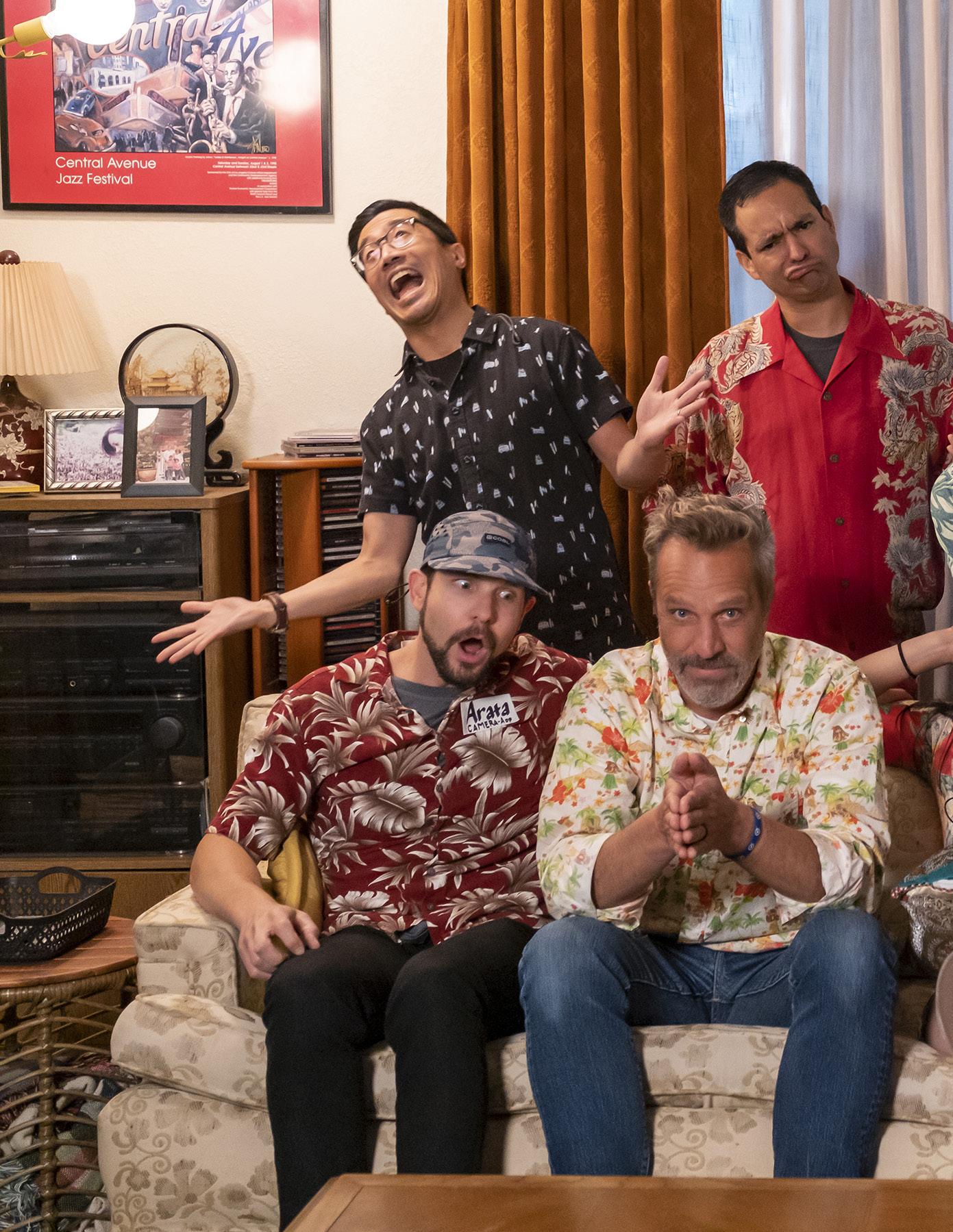
EP/DIRECTOR DESTIN DANIEL CRETTON SAYS “ONE OF THE THINGS I’M MOST PROUD OF WITH THIS CREW IS THEY KNOW IT’S MORE THAN JUST THE SKILLS THEY BRING AS CRAFTSPEOPLE. IT’S ALSO THE ENVIRONMENT THEY HELP TO CREATE FOR ALL THE OTHER ARTISTS ON THAT SET, ESPECIALLY THE ACTORS.”
 BY MARGOT LESTER
BY MARGOT LESTER

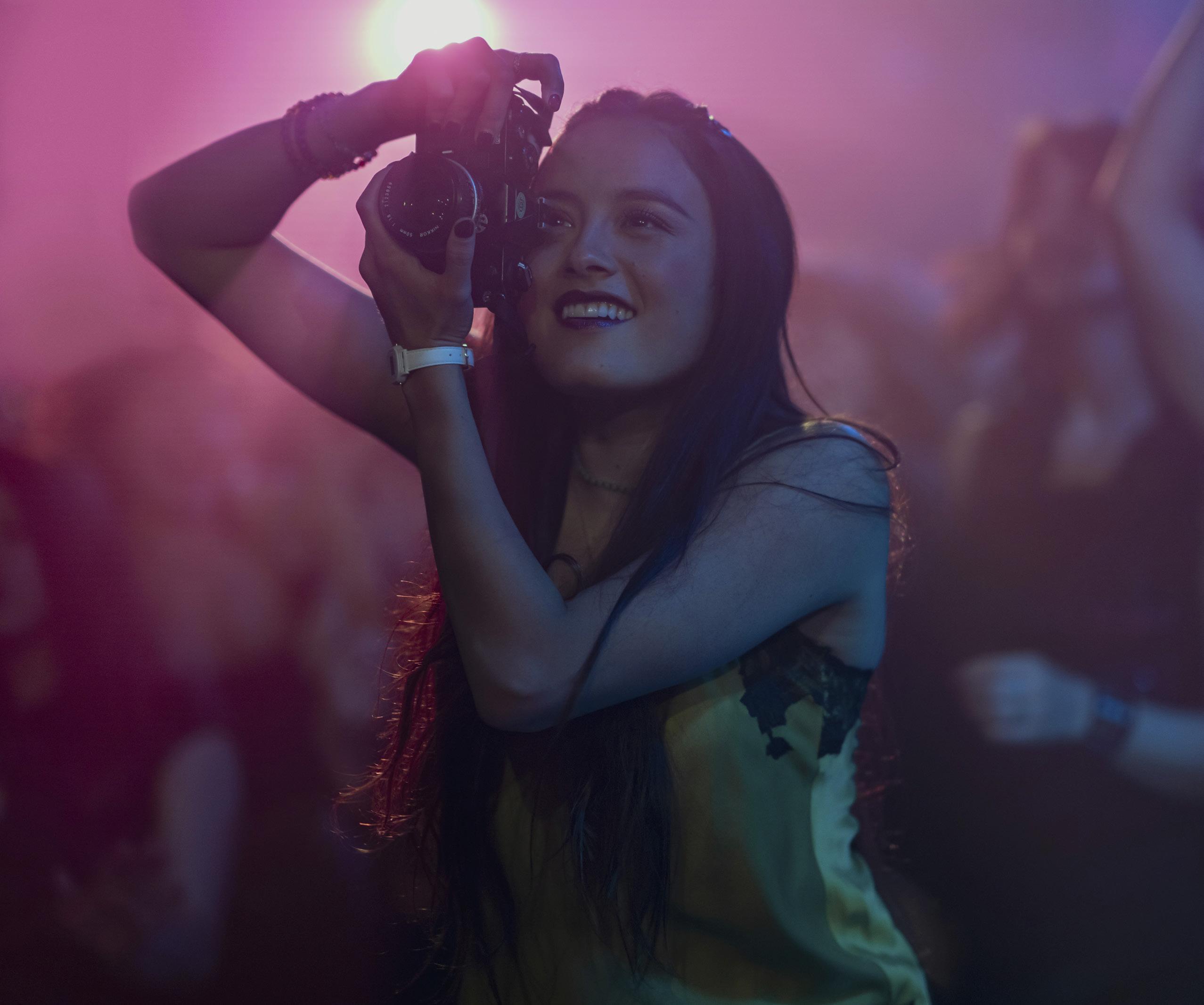 Guild Directors of Photography Carmen Cabana and Joe Collins turn up the heat for Apple TV+’s period New York City thriller, City on Fire
Guild Directors of Photography Carmen Cabana and Joe Collins turn up the heat for Apple TV+’s period New York City thriller, City on Fire
A certain thrum and buzz permeate New York City, creating a tension – sometimes creative, sometimes cantankerous – that filmmakers can’t find anywhere else. That frisson crackles throughout City on Fire, Apple TV+’s new episodic mystery thriller based on the eponymous novel by Garth Risk Hallberg and adapted and executive produced by Josh Schwartz and Stephanie Savage (Gossip Girl, The O.C.). The series, set in New York City circa 2003, revolves around NYU student Samantha (Chase Sui Wonders); the constellation of people in her orbit; including her love interest, Charlie (Wyatt Oleff); her all-time favorite band; her aspiring-anarchist acquaintances; and a mysteriously wealthy family. When Sam is murdered on July 4th, in Central Park at night, the connections between the disparate elements of her social circle are revealed.
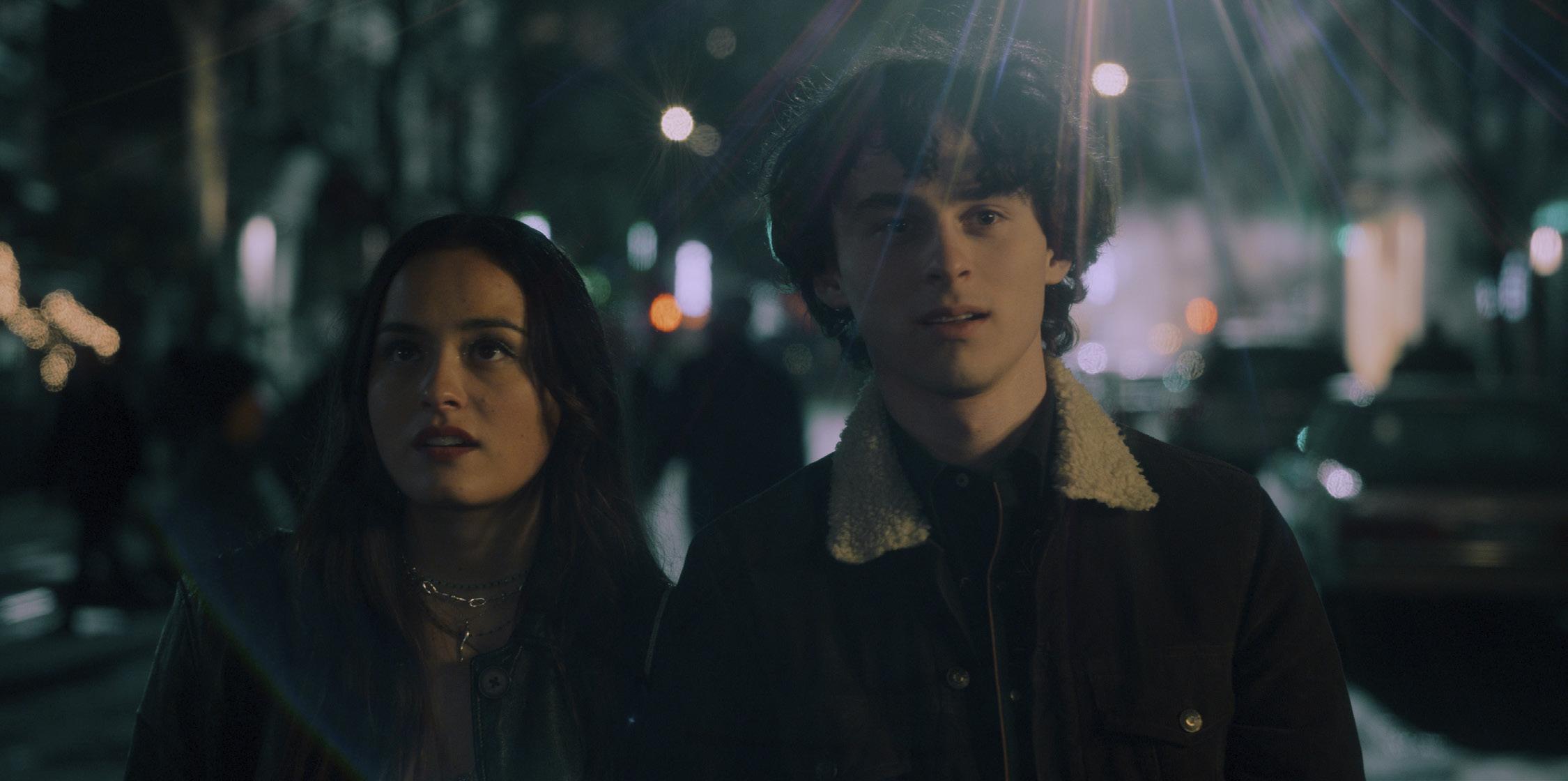
Executive Producer/Director Jesse Peretz ( Girls , GLOW ), who has lived in New York since 1990, says he wanted TV viewers to “feel [the city’s] raw tension from the get-go. We were trying to create a sense of the city that felt real but also heightened. We wanted audiences to feel the inherent dangers of the elements of the city,” he explains.
To achieve that, Peretz, who directed Episodes 101, 102, 107 and 108, turned to directors of photography Carmen Cabana ( Resident Evil , Ms. Marvel) and Joe Collins (Easter Sunday, Super Troopers 2), both of whom he worked with before – Cabana on Hulu’s High Fidelity and Collins on Showtime’s Nurse Jackie
“I was confident they would fall into quick sync,” adds Peretz, a noted still photographer of rock musicians in his own right. “I think a lot about images and have a strong point of view about lens choice and composition – and how it affects the storytelling. But even though I have a strong sense of what I like photographically, I wanted Carmen and Joe to challenge me – always trying to make this show more photographically compelling – whether that was in big sweeping cityscapes and action sequences, or in intimate scenes between two characters in a small, confined space.”
Cabana and Peretz developed the show’s
look and feel, and she lensed Block 1 (Episodes 101, 102, 105 and 106). Collins joined the two in prep and for some of the initial episodes before shooting the remaining installments. The trio shared references and images to ensure a consistent camera language to tell the story of Sam’s seemingly unrelated New York worlds –unique subcultures that afforded the production team license to design different looks.
“We wanted the show to feel rich, saturated, intense at times and playful at others; gritty and also sophisticated; contrived and also juvenile,” notes Cabana, who was raised in Colombia and Venezuela. “For me, it is very important to be sensorially accurate to the story we are telling. This is not a tonally one-note show, so the key was finding a unifying melody among all these different notes…to make sure that it felt like one show with New York as the backdrop for all these very different characters.”
Collins says the look was not a traditional episodic style. “We pushed for interesting framing and coverage” that was more of a “beautiful, gritty independent movie style,” he shares.
DIT Julio Saldarriaga, a frequent collaborator of Cabana’s, who created the base LUT’s and was the dailies colorist, says the plan was to have New York City encapsulated in the color palette.
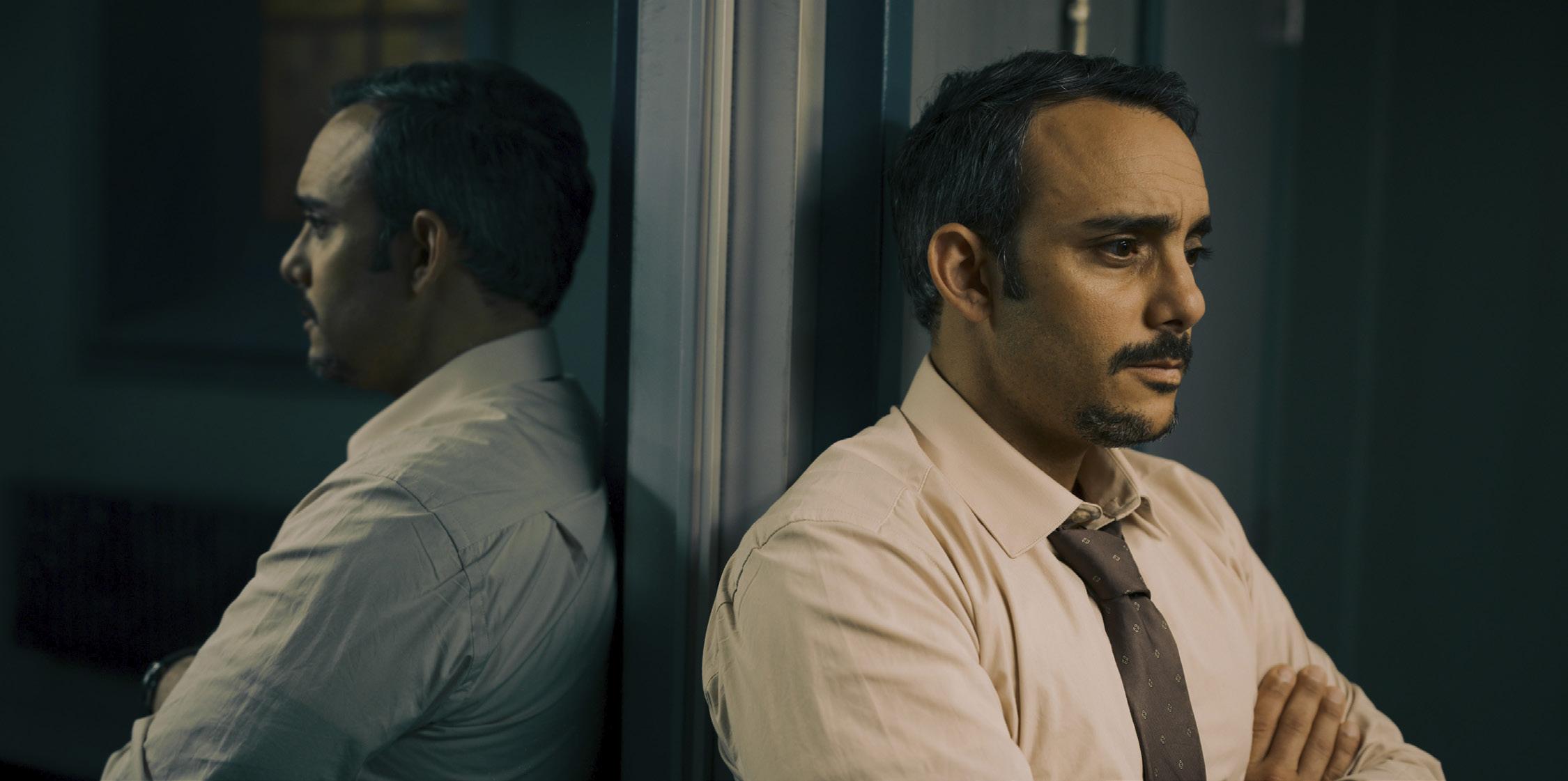
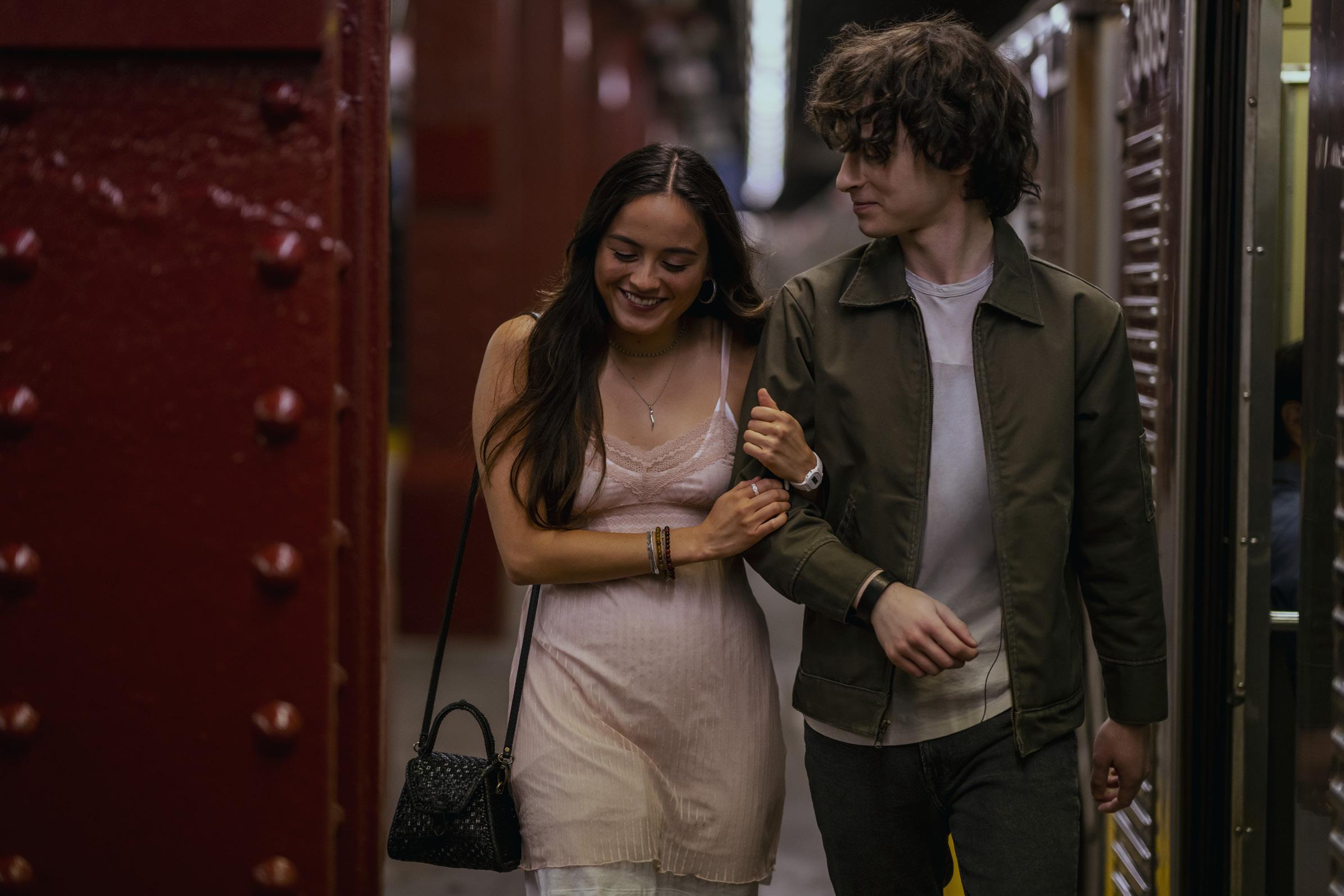

“The look needed to have an edgy, New York feel,” Saldarriaga explains, “which, of course, is very visceral.” Because the budget didn’t allow for a DIT on every episode, Saldarriaga had to create as many LUT’s as possible on the pilot so the DPs would have sufficient choices during shooting. After trying different approaches, Cabana and Saldarriaga settled on a robust set.
“Once you create a look for a show you have to be kind of generalist because each set will have its specific conditions and will need to be adjusted accordingly,” Saldarriaga notes. And without a DIT on set for most episodes, Saldarriaga’s work on dailies was imperative to stay true to the desired look and feel.
In addition to the two cinematographers, the show had three directors. Joining Peretz were Liz Garbus (What Happened, Miss Simone?, Becoming Cousteau ) and Haifaa Al-Mansour ( Mary Shelley , The Perfect Candidate), each of whom helmed two episodes.
“Having two DPs – a shooting DP and the other DP prepping with the next director –allowed us to prepare for the big sequences in each episode’s storyline. And there were many,” offers A-Camera/Steadicam Operator Francis Spieldenner.
Since Samantha’s late-night murder in Central Park, which appears interstitially in several episodes, is the driving plot point, Cabana wanted a camera system that would perform well in lower light situations. “I had shot Resident Evil on the Sony VENICE 1 and liked its performance,” she recounts.
The VENICE’s dual ISO, internal ND’s, and versatility – like the Rialto mode – were also important advantages. For lensing, Cabana chose a full set of Panavision Primo Artiste spherical primes (27 to 250 mm), which neither she nor Collins had used before. Both were impressed by the lenses’ performance, with Cabana especially pleased with the Artiste’s reaction to flares. They shot 6K and a 2:1 aspect ratio.
As A-Camera 1st AC Mark Ferguson recalls: “Being a period show, we wanted to create
something that had a vintage feel without sacrificing the advantages of more modern advances, such as full-frame cameras, a fully digital workflow, and lenses that remained consistent and performant throughout their iris range and across the lens set. The VENICE and the Artistes complemented each other beautifully in these regards. Carmen and Joe also utilized specialty lenses and a great deal of stylistic filtration – solid color filters, Smoques, Glimmerglass, True-Streaks, and more – to achieve certain looks and styles.”
Those included the warm, saturated world of the wealthy; the dark, humid, urban look of Central Park at night; the greener, more fluorescent look of the police precinct; and the grittier, darker, amber world of the firebombers. Ferguson says the team leaned on “Tiffen 1 Chocolate Solid Color filters to push the feeling of heat from the city in the summer scenes and used Smoques to push the effect of on-set atmosphere.” Tiffen Golds also enabled day-fornight exteriors.
More foundational beats occur in the tenement, The Phalanstery, where Sam’s pyromaniacal pals plot, scheme, and test-drive their incendiaries, establishing early on that the “fire” in the title is more than metaphorical. “Fire and flame was a motif for our show,” Collins states. “Fire is mesmerizing, beautiful, hypnotic, spiritual and extremely dangerous, much like the story and characters. And it was a great editorial transition.”
Production Designer Aaron Osborne and his art department built a three-story set at Silvercup Studios North, in the Bronx, to serve as The Phalanstery, which Cabana says was unlike anything she’d ever seen. “Aaron has a great sense of texture, and when he designs he does keep camera movement in mind, so his sets have a wonderful flow to them besides just depth,” she offers. “Every nook and corner of that set was interesting. It was like a gritty Candy Land for a DP. For inspiration, I combed through some of the still photography from Jesse and also a former director of mine, Chioke Nassor. They both have a candid style of still photography that
LEFT: DP CARMEN CABANA, WHO SET THE LOOK WITH DIRECTOR JESS PERETZ IN THE PILOT, NOTES THAT “THIS IS NOT A TONALLY ONE-NOTE SHOW, AND THE KEY WAS FINDING A UNIFYING MELODY AMONG ALL THESE DIFFERENT NOTES… TO MAKE SURE THAT IT FELT LIKE ONE SHOW WITH NEW YORK AS THE BACKDROP FOR ALL THESE VERY DIFFERENT CHARACTERS.”
inspired me.”
The Phalanstery is also where Sam and Charlie’s bond strengthens in a poignant New Year’s Eve sequence that both Peretz and Cabana count as a favorite. Charlie helps Samantha, who’s tripping on mushrooms, away from the party and into the basement to come down.
“They have such a lovely and intimate moment there and it’s a great juxtaposition to the energy of the party happening above them,” Cabana recounts. As Peretz adds: “He tells her he loves her, and she pretends she is asleep. The two of them did such a moving job delivering on the vulnerability of this moment.”
B-Camera/1st AC Blake Alcantara echoes the praise. “Every cast member was so exceptionally talented in and out of character: Wyatt playing piano during some downtime, Nico [Tortorella], Xavier [Clyde], Chase and Max [Milner] and Allie making us laugh. John Cameron Mitchell had fantastic stories and was a truly kind spirit. It was a blessing to have this cast.”
In stark contrast to the derelict surroundings of the Phalanstery stand the penthouses and opulent offices of the rich but troubled family. Cabana remembers how “the crowded scenes at luxurious locations were difficult because everyone had to look great, but we were limited in terms of rigging. We were in a real penthouse at a hotel, and the dimming system was way off. The hotel wouldn’t allow modifications, so we had to manually cover or diffuse every single light. We also couldn’t do wall spreaders, and I wasn’t fond of the available light created by the practicals, so it took some ingenuity with corner bounces and re-thinking our camera movements and composition so we could have a fighting chance with the lighting. [Chief Lighting Technician] Brian McLean and his team were great to work with. Brian is so sharp, and he came up with some great solutions.”
Another practical location was the infamous Don Hill’s, a tiny, slightly sketchy (in a good way) venue that was ground zero for New York’s rock scene in the early aughts. (The original club
closed years ago and now operates under a new name and management team.) Peretz says that “part of the magic of shooting in New York – besides all the insane characters you come across – is that there is a cultural awareness and history that is hard to top.”
Peretz and Collins were both part of New York’s club scene back in the day – Peretz as a musician (he’s an original member of The Lemonheads ) and documentary-style still photographer, and Collins as a fan who spent many nights downtown catching various acts.
“Shooting live bands performing at the nowshuttered, legendary Don Hill’s as if it were 2003 was an awesome throwback,” Collins laughs. “At one point Jesse turned to me between setups and asked, ‘You feel like you just popped out of a time machine, buddy?’ I sure did! It was a surreal opportunity to travel back in time to an influential period in my own life, though it did sting a bit to be shooting a ‘period piece’ about something that didn’t seem that long ago.”
And it wasn’t just the venue that delivered cinéma vérité . The live performances were instrumental in creating an authentic vibe and bringing the soundtrack of the period to life.
“I loved the Nicky Chaos concert because the music was so good and Max Milner (Nicky) truly put on a hell of a show,” Cabana says. “I wish the edit could have afforded to keep the full duration of the songs.”
Probably the most challenging sequence in the entire series spans the final two episodes and includes footage shot by both DP’s – at two locations and on the soundstage – with a full day of 2nd unit. The sequence featured three cameras (including handheld and Steadicam), and a 50-foot Technocrane with a Libra Head.
Because of the complexity of all the locations, including sequences shot during a simulated blackout, production secured an on-set DIT, Ilya Akiyoshi, for these installments,
The sequence begins during a bomb threat made by the guerillas. Charlie; Detective Ali Parsa (Omid Abtahi), who’s investigating Sam’s murder; and one of the firebombers, Sewer Girl (Alexandra Doke) are featured along with an
RIGHT: CO- DP JOE COLLINS SAYS THE LOOK WAS NOT A TRADITIONAL EPISODIC STYLE. “WE PUSHED FOR INTERESTING FRAMING AND COVERAGE” THAT WAS MORE OF A “BEAUTIFUL, GRITTY INDEPENDENT MOVIE STYLE,” HE SHARES.


armada of bomb squad, SWAT and NYPD units.
Cabana shot the arrival exteriors in the Financial District and captured the interiors of Sewer, Charlie, and Parsa entering the building. Collins’ unit shot the chase up the stairs and the office interiors. The latter was in a second location on a second day.
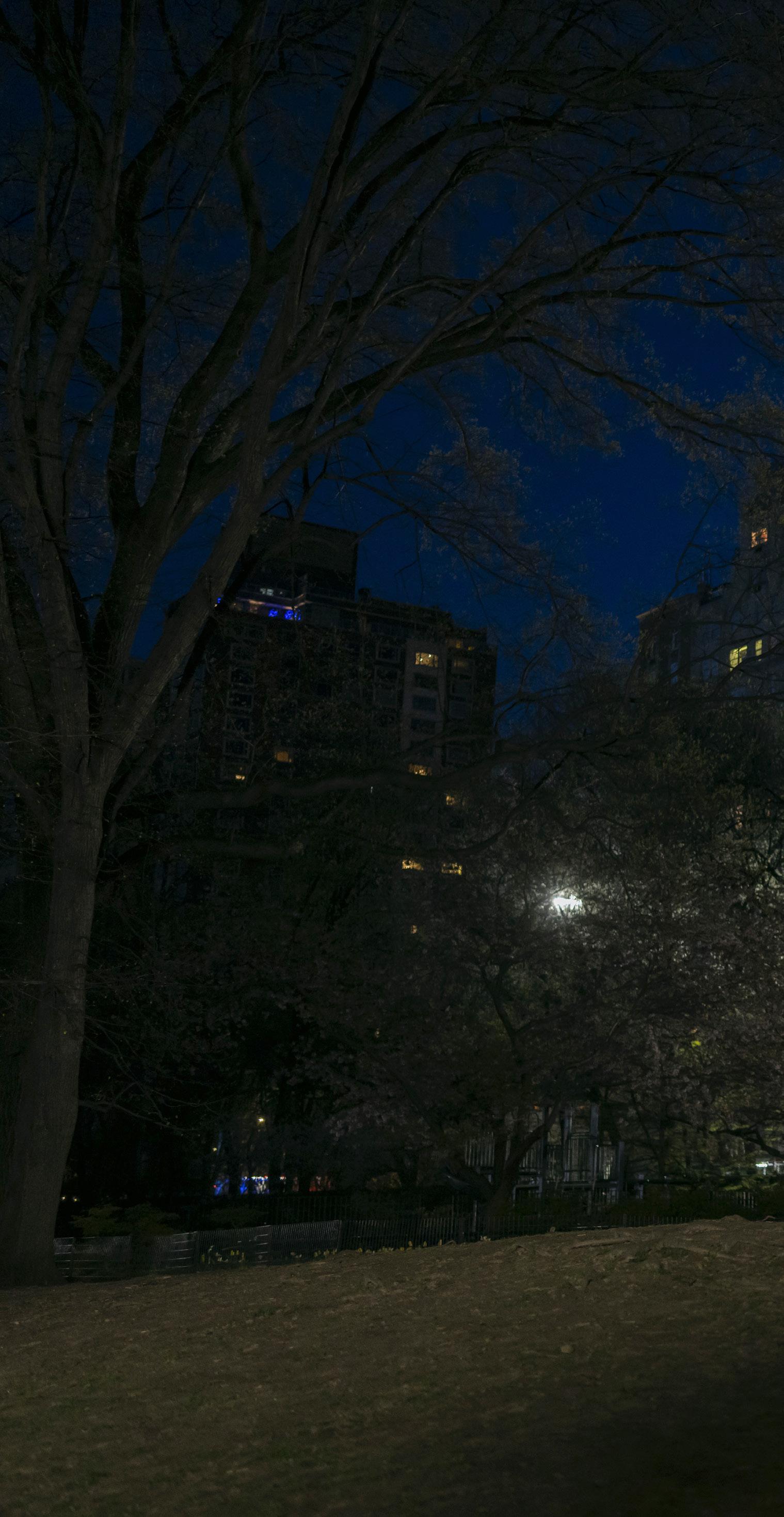
In this segment, Charlie stops Sewer for an emotional exchange discussing the explosive device perched on a window-washing skiff 70some stories up. Then he decides he must defuse the bomb.
As Collins explains: “Shooting on the 40 and 65 mm lenses at 6K, we were immersed with the characters, and felt more of what they were going through. Our close-ups weren’t on a 125-millimeter from across the room; we were right in there with our actors, experiencing the emotions with them.”
Charlie’s jump from the window to the window-washing cage was shot in a faithful recreation of the corner office that Osborne created on the top floor of the Phalanstery set.
As longtime New York City Key Grip George Patsos recalls: “We needed to create an exterior daylight look, and lighting was a challenge due to our restrictions on stage with the available space. Our actual set ran floor to ceiling, and we used every inch of our 40-foot-high structure. We covered the stage ceiling with approximately 70 LED Chroma-Q Space lights, then had a custom 50-foot by 70-foot silk fabricated to stretch under them to give us an overall feel of ambient daylight.”
The stage floor was painted green with plate
We were trying to create a sense of the city that felt real but also heightened. We wanted audiences to feel the inherent dangers of the city.”
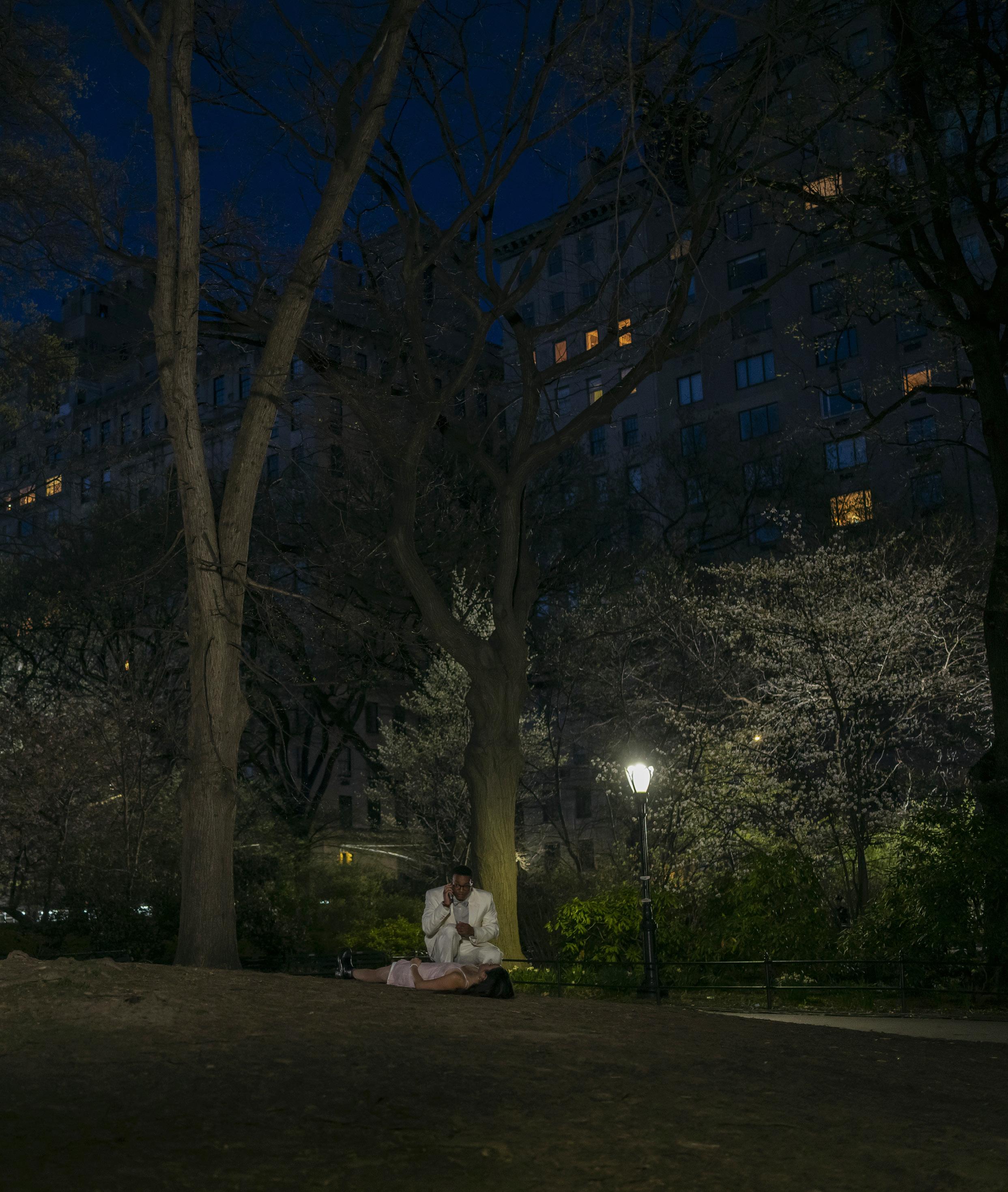
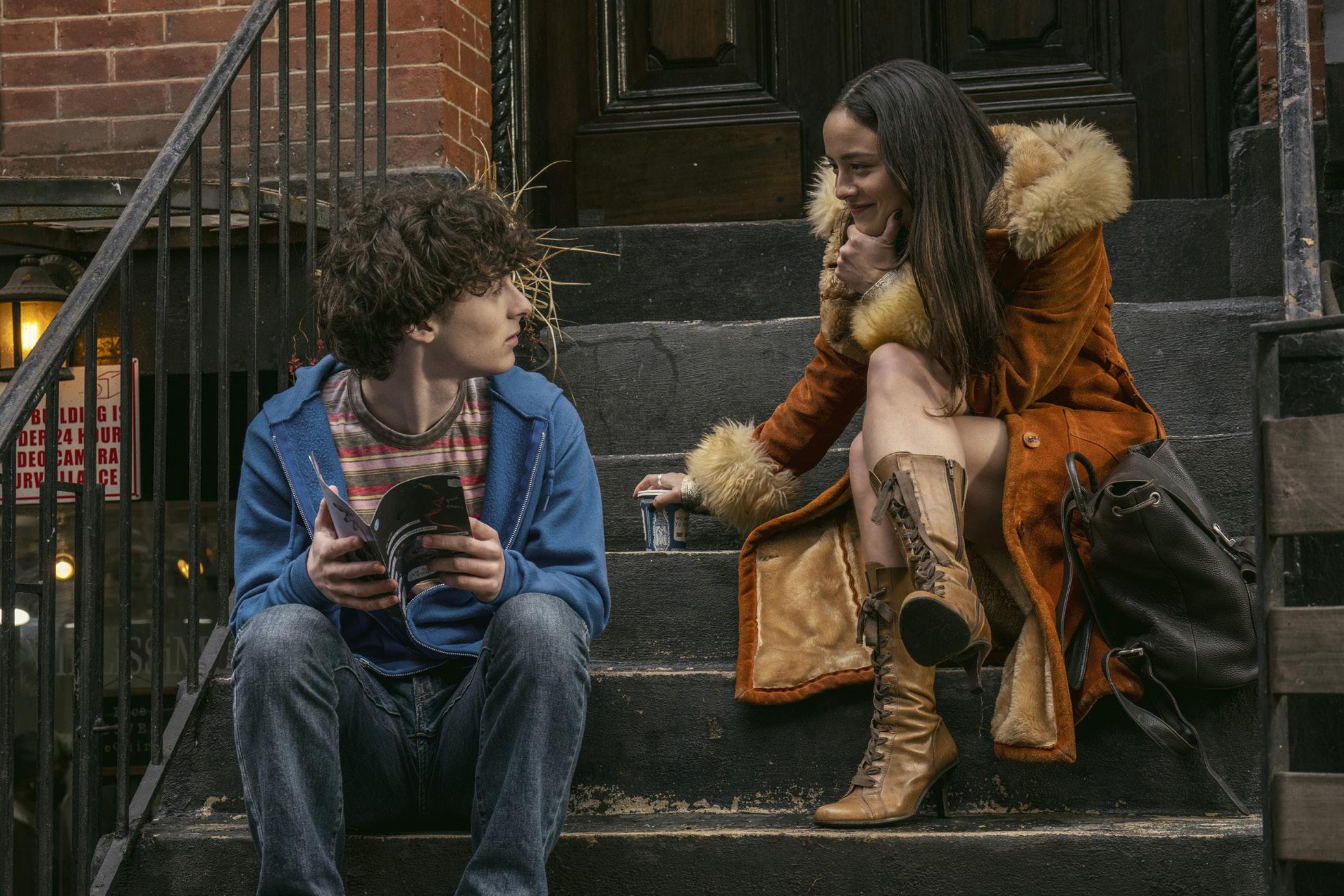



footage that looked down toward the street. Because the Rosco soft drop backing had to be reflected in the facade of the building set piece, the crew hung the 40-by-80-foot backing on an I-beam curtain track with a 12-foot-radius curved pipe on each end so it wrapped around the edges. It was lit by a ring of ARRI 120 SkyPanels. Patsos’ team rigged an ARRI 18K HMI in an aerial lift with a ½ CTO color frame to simulate sunlight.
Osborne’s team constructed the windowwashing rig that came apart in sections to accommodate various camera angles and stunt cable rigging, which was nestled among the SkyPanels and holes cut in the silk. VFX would remove the stunt cables and add the window washing cables in post.
As Charlie lands on the skiff, the city-wide blackout hits. Mirroring the real-life 2003 blackout, it begins in daylight and, as the tension rises in the different storylines at various locations, transitions into night. “We had a lot of discussions about how we should approach this technically,” recalls Collins, who was living in New York at the time of the 2003 blackout.
“Daytime blackout was not an issue,” he adds, “as we would need VFX help for traffic lights or storefronts. But for the night, it was too prohibitive to light and shoot night-for-night and then spend a gazillion dollars eliminating lights in post. We tested day-for-night filters with some success, but at the end of the day, we felt we could get the same results with LUT’s via Ilya, and have more freedom to work the image in post. Ilya crushed it with LUT’s and adjusted the color.”
Concludes B-Camera Operator Eric P. Robinson: “The camera department worked as a close team with mutual respect for every department across the board. Any challenge we came up against was solved through teamwork and collaboration. No egos on this job.”
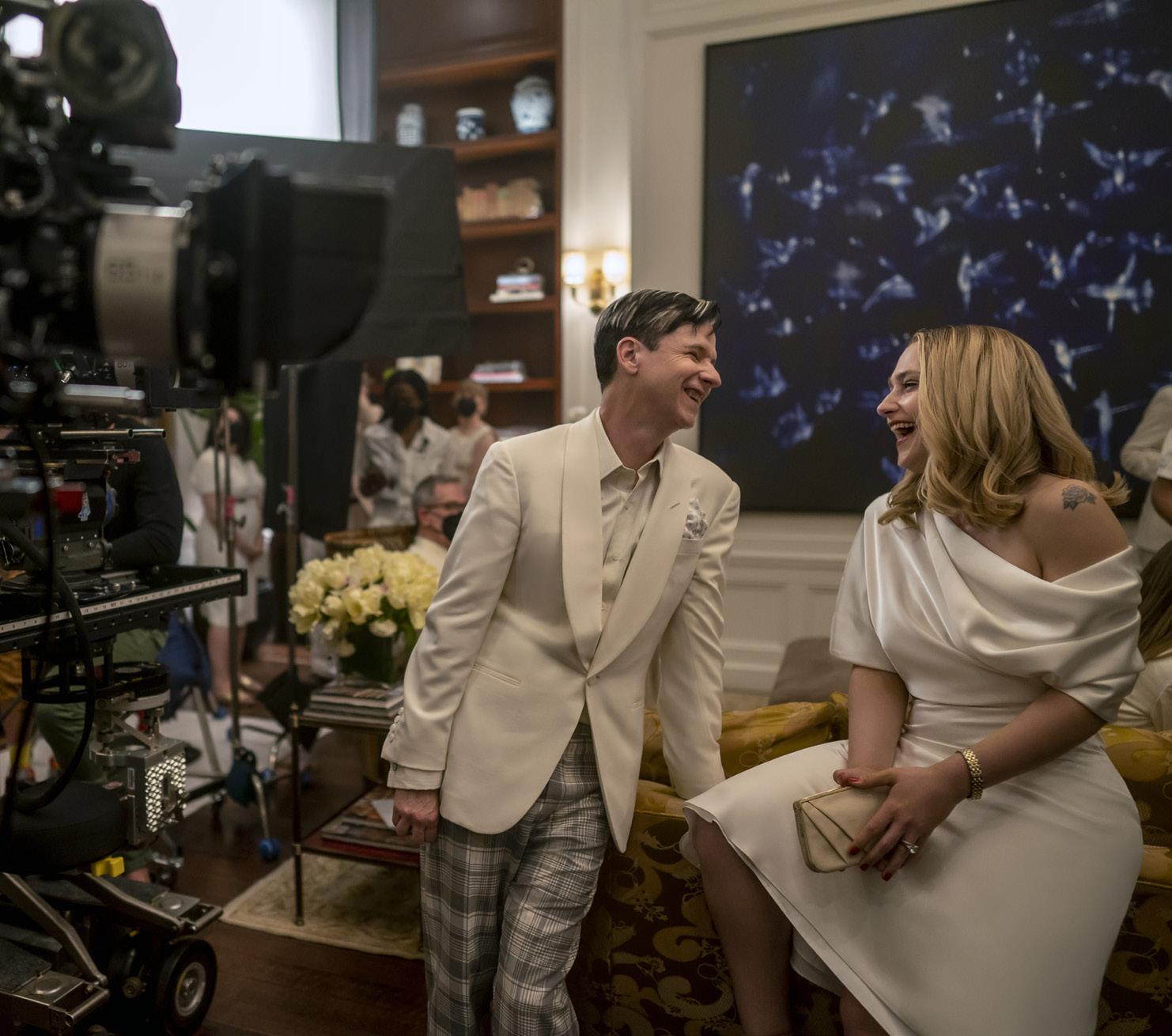
Cabana concurs. “We had such a strong group on this show. A wonderful aspect is that the camera team had a previous working relationship so there was great rapport and collaboration. I want Guild members to let the show take them on a journey.”
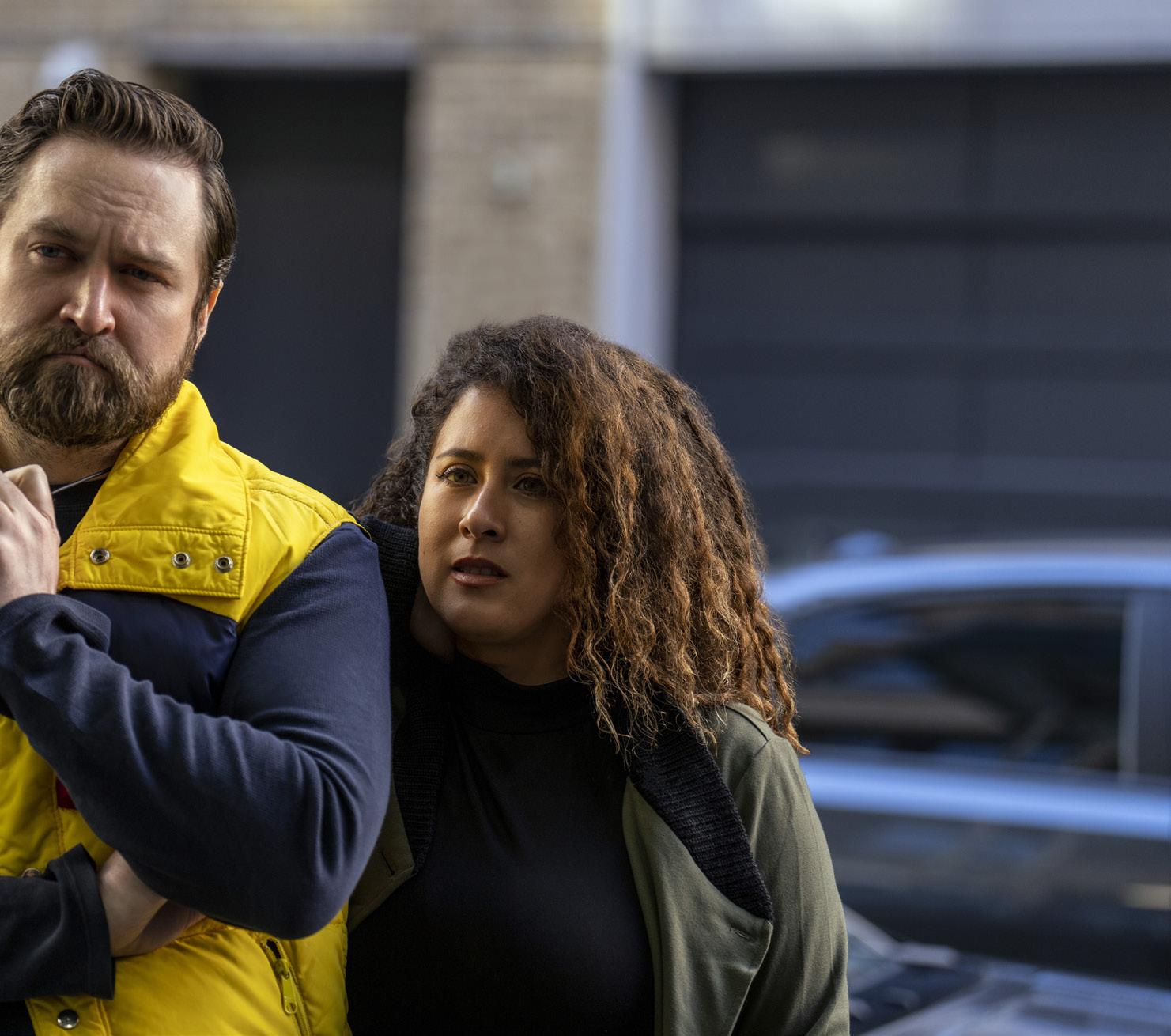

Directors of Photography
Carmen Cabana
Joe Collins
A-Camera Operator
Francis Spieldenner, SOC
A-Camera 1st AC
Mark Ferguson
A-Camera 2nd AC
Emily Deblasi
B-Camera Operator
Eric Robinson
B-Camera 1st AC
Blake Alcantara
B-Camera 2nd AC
Keith Anderson
DITs
Ilya Akiyoshi
Julio Saldarriaga
Loaders
Josh Munson
Kati Pérez
Still Photographer
Zach Dilgard
EP/DIRECTOR JESS PERETZ SAYS HE WANTED “CARMEN [CABANA] AND JOE [COLLINS] TO CHALLENGE ME – ALWAYS TRYING TO MAKE THIS SHOW MORE PHOTOGRAPHICALLY COMPELLING – WHETHER THAT WAS IN BIG SWEEPING CITYSCAPES AND ACTION SEQUENCES, OR IN INTIMATE SCENES BETWEEN TWO CHARACTERS IN A SMALL, CONFINED SPACE.”

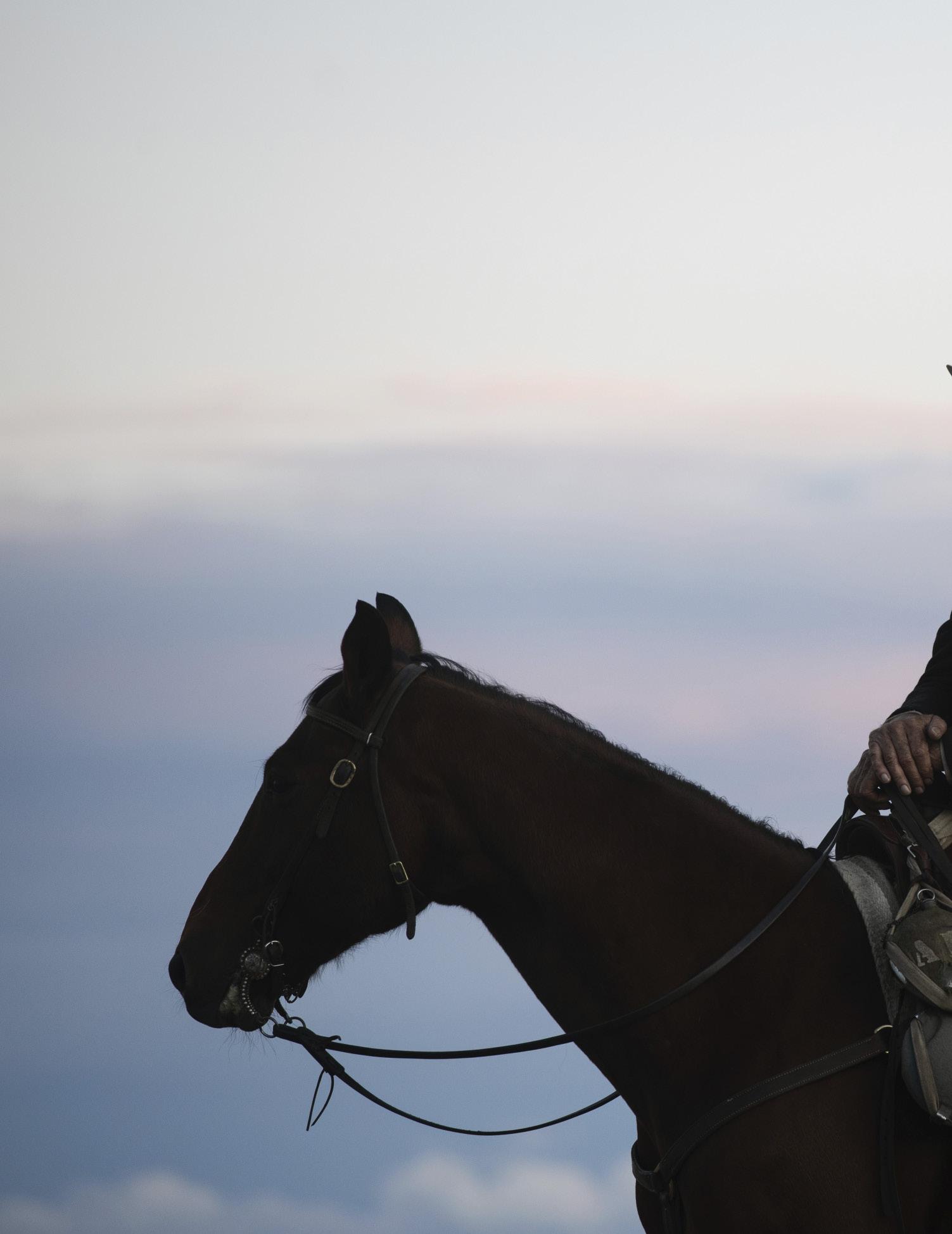
THE EPISODIC WESTERN HAS BEEN AROUND SINCE THE DAWN OF TELEVISION; SO GRAB THOSE SPURS, STETSON, (AND A LIGHT METER) AND LET’S HEAD OFF DOWN THE TRAIL.
 BY PAULINE ROGERS
BY PAULINE ROGERS
PHOTO FROM YELLOWSTONE: 1883 BY EMERSON MILLER / PARAMOUNT+
Last year, while on location, Director
Richard Crudo, ASC, found himself surrounded by film buffs with a new obsession – old TV Westerns. “There was a 24-hour dedicated channel where we could watch Gunsmoke, Maverick, Wagon Train, Bonanza, The Rifleman and others from the 1950s and ’60s running back-to-back on a local channel,” Crudo recounts with a smile. “They became our post-dinner viewing.”
The longtime ASC member adds that “although we often overlook the Western genre, the level of craftsmanship displayed in each episode was remarkable. Interesting staging and compositions were more common than not. And the photography –mostly in black and white but some in color – was generally sophisticated, especially when shooting on stages dressed to appear like the Great Plains. Also, keep in mind this work was being done during a period in which television production was considered a poor cousin to features. In retrospect, that was an unfair assessment. Dig into any of these shows, and you’ll find some incredible imagery, all accomplished on short budgets and schedules, no less.”
And that’s precisely what we decided to do for our June TV issue, focusing on key Western episodic series from the 1950s through today, with our choices colored as much as possible by the memories of Local 600 members who have worked in the genre.
But before we ride off into the sunset, it may be helpful to define what makes a show a Western. It’s good against evil, the little man against the untamed frontier. It’s the ability to escape from reality and adhere to a new moral code – where the cowboy with the broad-brimmed, high crowned Stetson; the bandana; the vest; and boots with spurs (the descendant of the knights-errant, so to speak) always does what’s right instead of what others tell him to do.
The TV Western first hit the screen in 1949, boomed in 1959, and faded into relative obscurity by the late 1960s. During that time, more than 100 series stampeded into America’s living rooms. And while Hopalong Cassidy and The Lone Ranger are often cited as the beginning of the TV Western, Death Valley Days provided the true seeds for growth.
Created in 1930 by Ruth Woodman as a radio show (and sponsored by detergent additive Borax), it ran until 1945. Then, in 1952, Death Valley Days morphed into an anthology that lasted through 452 episodes, ending in August 1975. It featured different characters and stories in each episode, often based on legends and the lore of the times. Each stand-alone was hosted by a Hollywood celebrity, including Dale Robertson, Robert Taylor, and Ronald Reagan (in his last acting job). The series was shot at Appalachia Studios in Arizona and Death Valley National Park on a short, three-day schedule – six times a year. What was unique about this precedent-setting Western is that it was distributed in syndication to local markets rather than nationally, becoming the most
As for TV’s most popular and longest-running Western, that crown goes to Gunsmoke , which aired from 1955 to 1975, with 233 half-hour and 400 one-hour episodes. The show was often called “the first adult Western.” Eschewing panoramic vistas, thundering herds of cattle, and massive charges on Indians by the U.S. cavalry, Gunsmoke concentrated on relationships and psychological drama. The characters become one of the bestknown television workplace families, representing a tight-knit ranching community that banded together in tough times.
As John Flinn II, ASC, who began on the show as a 1st AC, remembers, “We shot at CBS Studio Center with two Mitchell cameras on Kodak 5254. Lighting were the old carbon arc lights; when we were outside and on the huge stage inside, we captured many elements, even taking the shot from the interior through the stage and down the street.” For Mike O’Shea, ASC, working on Gunsmoke with BNC’s and NC’s with a blimp didn’t hamper the desire to add movement to the series. “There was a lot more action and crane work,” he recalls. “We did amazing stuff with what we had. Big sweeping shots with precise compositions.”
Another important moment in the genre’s development was Wagon Train (a television version of John Ford’s feature Wagon Master ), which debuted in 1957 and was led by Western star Ward Bond. The show’s themes covered classic Western iconography – people who abandoned civilization, knowing they would never see parents or friends again, journeying into hostile Indian territory, encountering swindlers, outlaws, cattle rustlers, and life-threatening weather. But, in true Old West lore, they clung to strength in numbers and the cowboy code. It ran for eight seasons, first on NBC and then
JOHN FLINN II, ASC, WHO BEGAN AS A 1ST AC ON GUNSMOKE , SAYS THEY SHOT AT CBS STUDIO CENTER WITH TWO MITCHELL CAMERAS ON KODAK 5254.

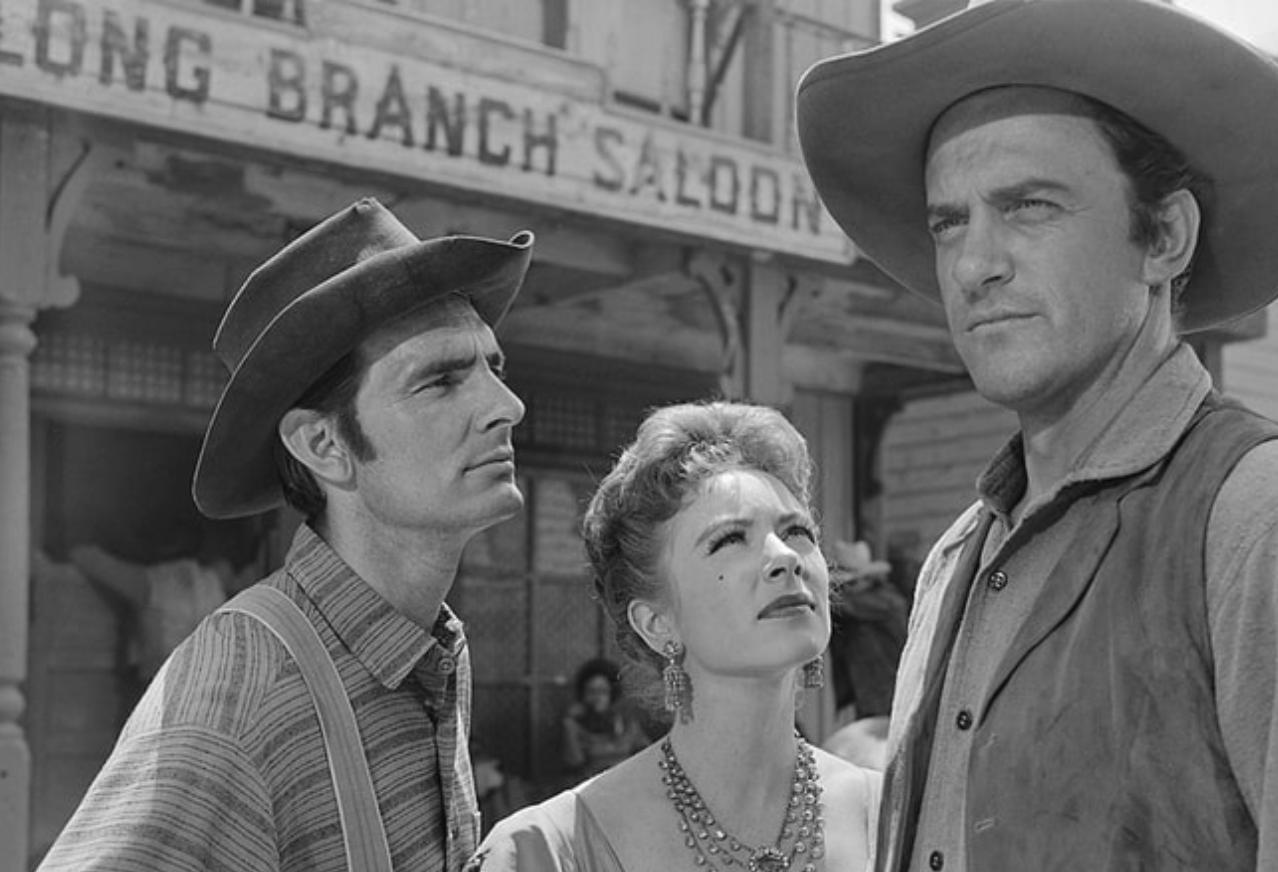
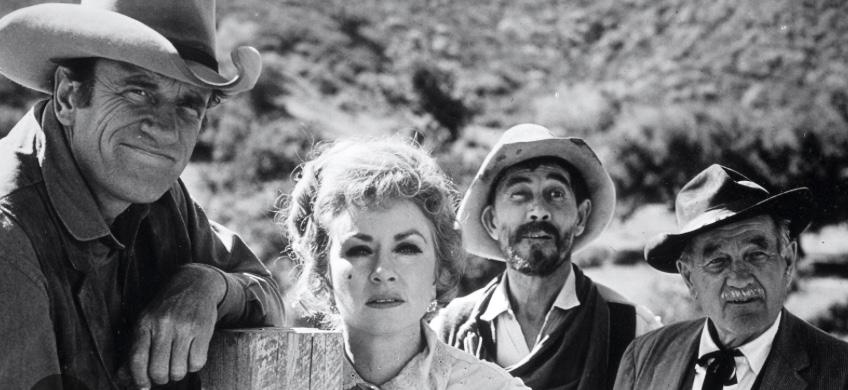
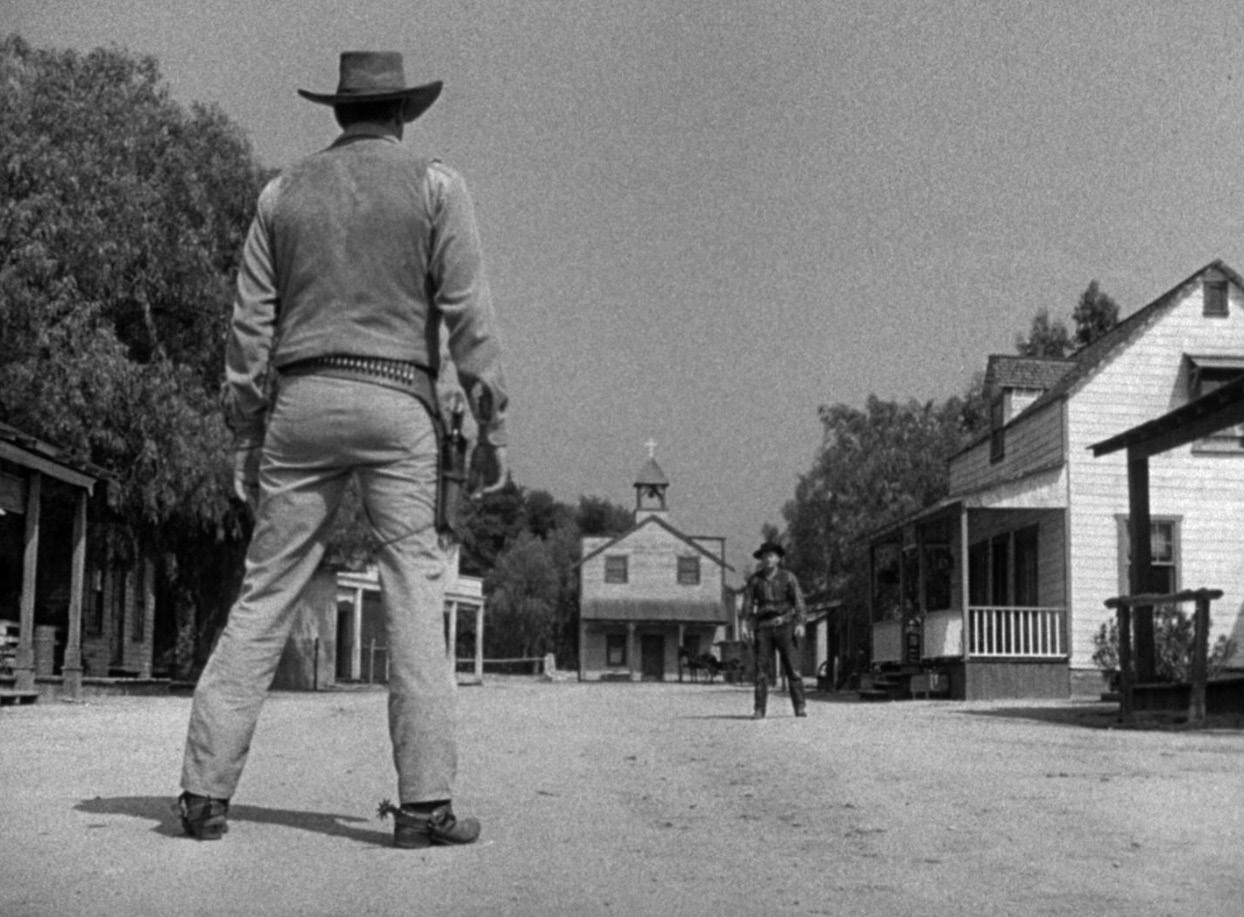

“LIGHTING WAS THE OLD ARC’S; WHEN WE WERE OUTSIDE AND ON THE HUGE STAGE INSIDE, WE CAPTURED MANY ELEMENTS, EVEN TAKING THE SHOT FROM THE INTERIOR THROUGH THE STAGE AND DOWN THE STREET,” FLINN REMEMBERS.

ABC, with an audience who turned in to watch stars from other mediums.
Written
by Western novelist Borden Chase (and future Western director Sam Peckinpah),
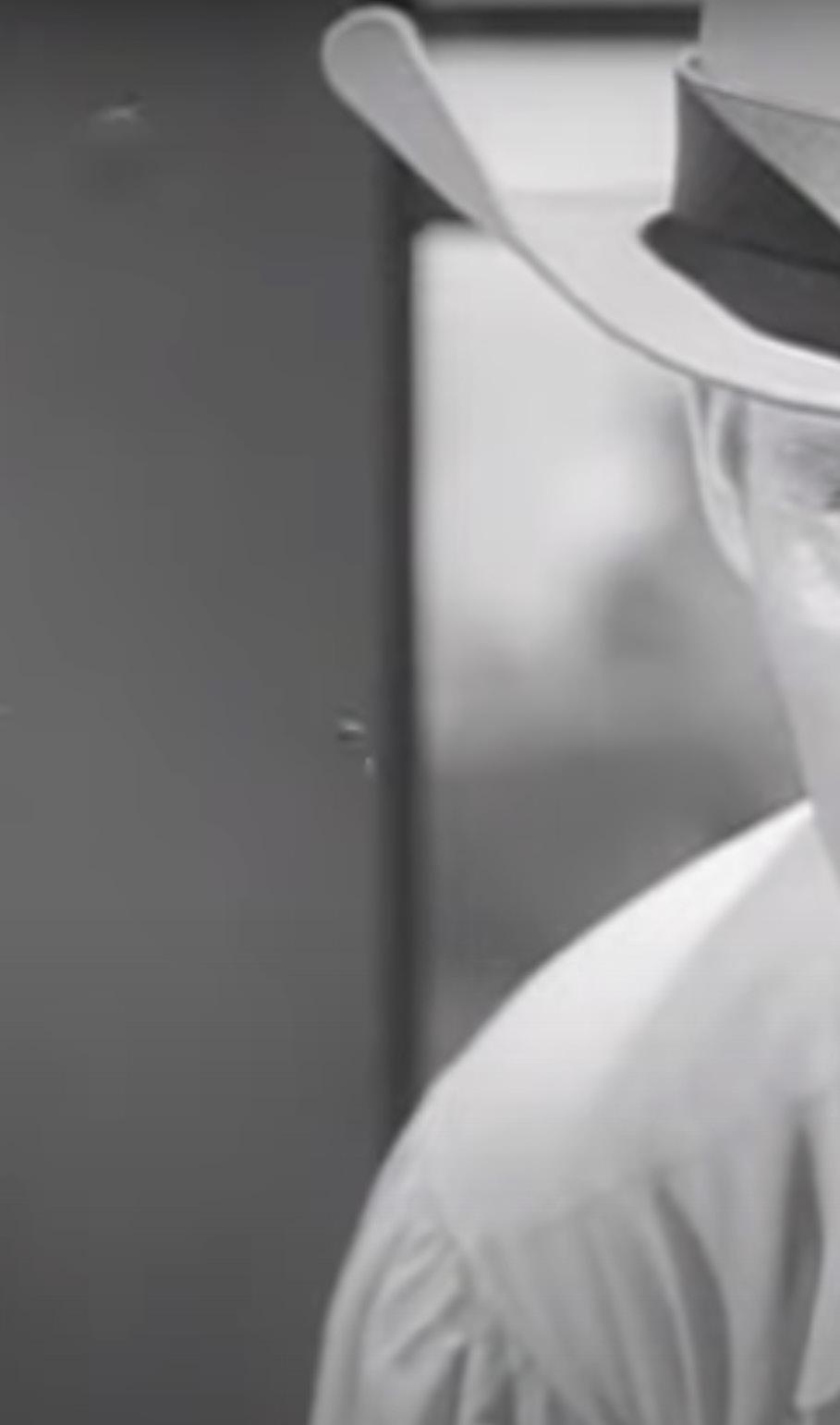
what began as black and white in 1963 was changed to an hour and a half and turned into color (to compete with The Virginian ). When that didn’t seem to work for the studio (Universal’s television arm), it went back to one-hour format and black and white, which drove the viewers away.
At the same time as Wagon Train came a show with a dark sense of humor that set traditional Western philosophy on its ear. While Maverick started as a straight drama, with a relatively unknown James Garner as the lead, it soon became a comedy when Marion Hargrove decided to liven up the scripts. Writer Roy Huggins developed the story with all the Western rules he could get away with breaking. They inverted the concept –no heroes in the traditional Western style. Instead, the “mavericks” were devious, cowardly cardsharps who exploited easy situations and quickly vanished when faced with potential violence. Audiences loved it – and “Pappyisms” became the word of the show. What also drew audiences were the wild parodies of other television programs of the period. They did a send-up of Gunsmoke , a spoof of Dragnet (with James Garner doing the deadpan voice), and even brought in characters from other shows – where Bart enlists Ty Hardin ( Bronco ), Will Hutchins ( Sugarfoot ) and Clint Walker ( Cheyenne ) in one of his schemes. Those chances paid off – and the series won an Emmy for Best Western Series in 1959.
“The camerawork on Maverick was different,” recalls John J. Connor, who DP’d 2nd Unit with the late Vilmos Zsigmond, ASC, handling 1st Unit. “The lighting was more cinematic, and so was the camera movement. I remember
shooting the opening scene, where we started on the second floor, came down across the buildings, and into the card game. The set was incredible – and expanded the show a lot.”
Rounding up the beginning of the TV Western is not complete without a nod to The Rifleman . Set in a small town in New Mexico territory (and shot at Malibu Creek State Park, Chatsworth, Iverson Ranch, Calabasas, and the Paramount Ranch, all in California), the series made its debut in 1958, with Sam Peckinpah as the first episode writer. The show’s memorable opening featured Chuck Connors as Lucas McCain firing his rapid-action Winchester rifle; it belied themes beyond gratuitous gunslinging, imbued with family values and heartwarming human relationships. The Rifleman ran for five seasons and also drew in audiences with guest stars, including John Carradine, Lon Chaney Jr., Royal Dano, Dabbs Greer, Agnes Moorehead, and up-and-coming actors like Dennis Hopper and Michael Landon.
The Rifleman also stood apart for its break with traditional camera work (most everything before was shot on Mitchell cameras and used Chapman cranes and dollies). Director Joseph H. Lewis (known for the noir classic Gun Crazy ) pushed for atmospheric lighting, unorthodox camera angles, and cinematic qualities with a brooding undertone. As Lloyd Ahern, ASC, recalls: “It was a great experience. It featured great stories and a strong character. We shot 30 episodes a year. I learned a lot about shooting a Western, which ultimately defined my career.”
In the late 1950s a show came along that vaulted the genre to the top of advertisers’ lists. Bonanza was the first TV Western written for color and became the second-longest-running in the genre (after Gunsmoke ), riding high for 14 seasons. Garnering a broad audience across all ages, Bonanza made its centerpiece location, the
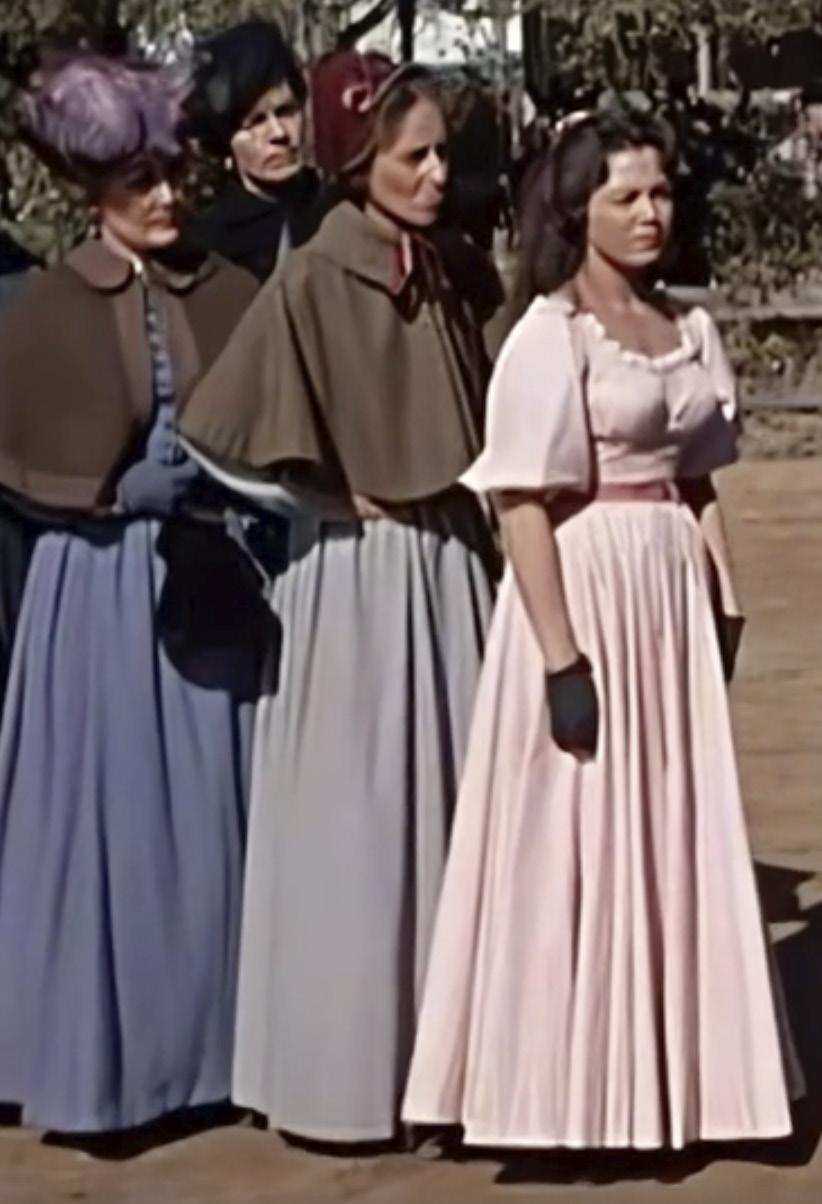

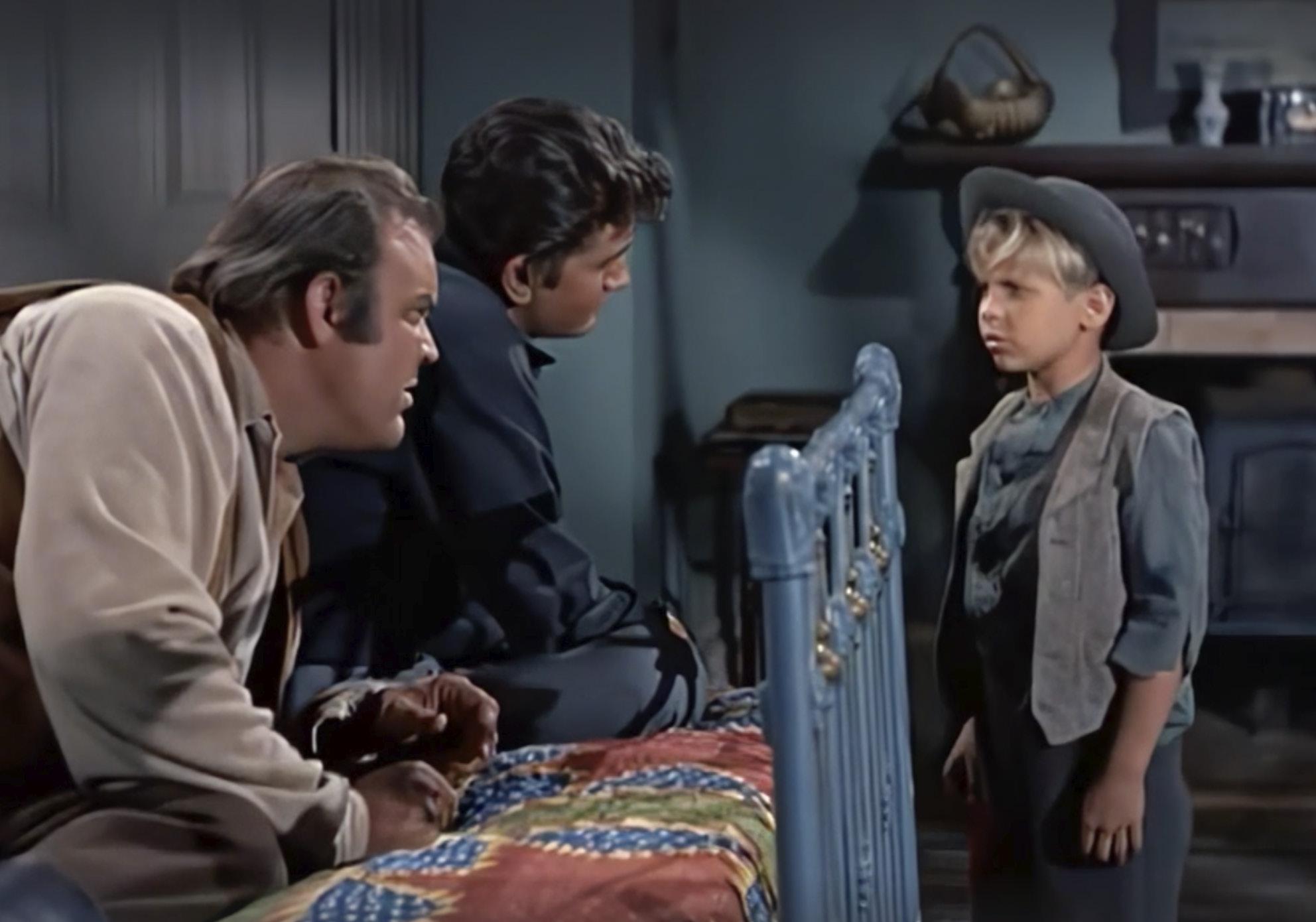
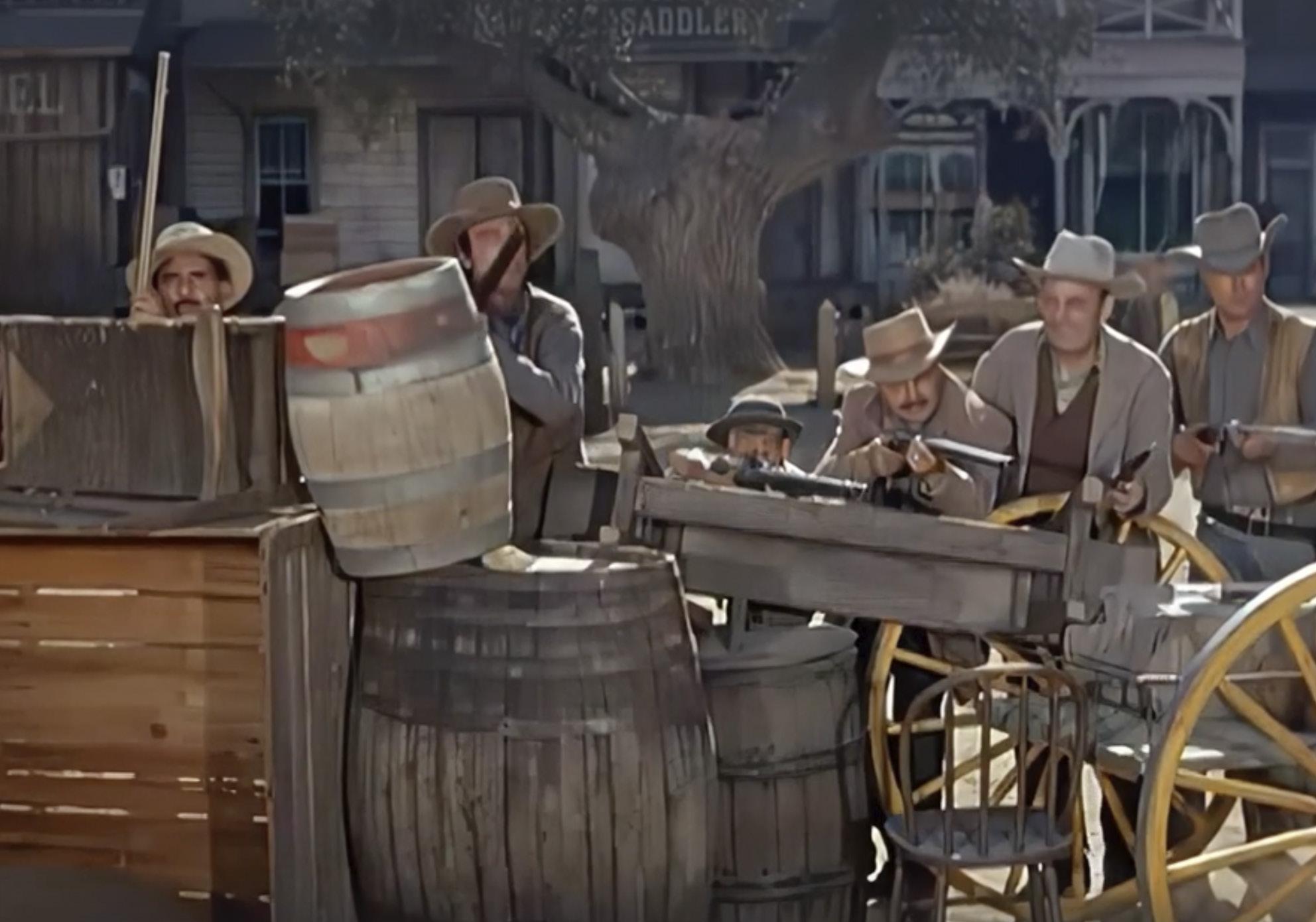
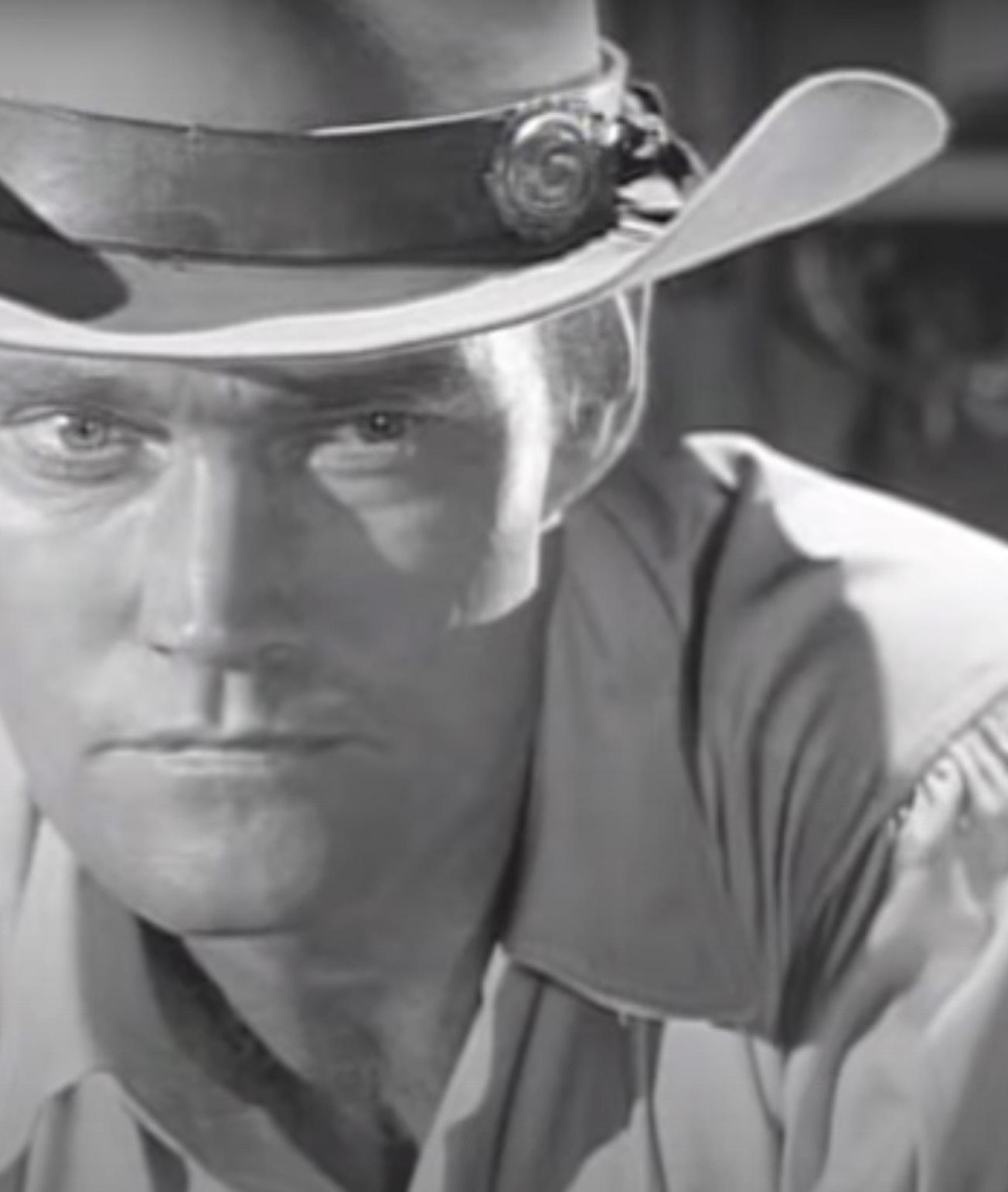
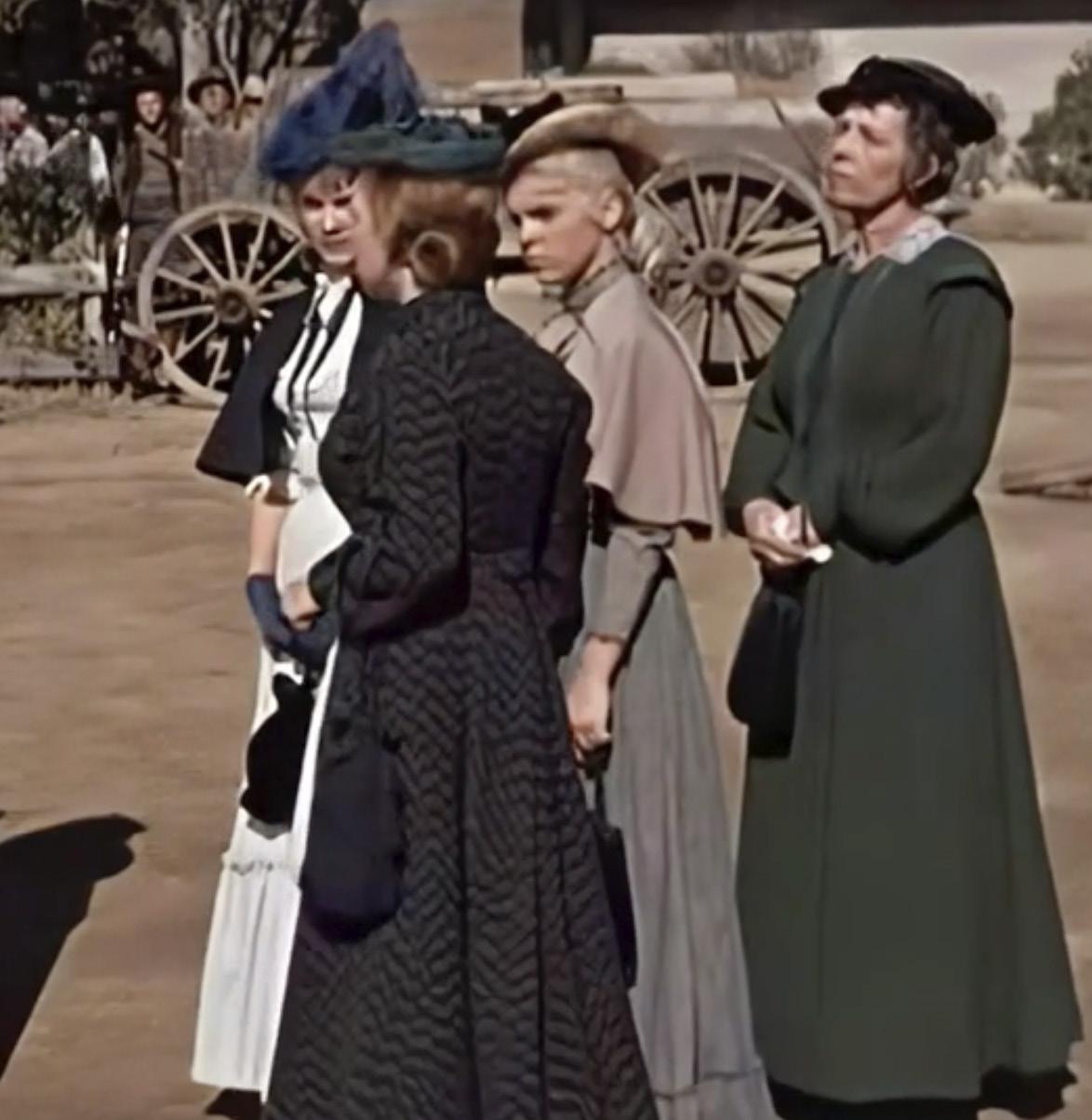

DIRECTED BY NOIR MASTER JOSEPH H. LEWIS, THE RIFLEMAN USED ATMOSPHERIC LIGHTING, UNORTHODOX CAMERA ANGLES, AND CINEMATIC QUALITIES WITH A BROODING UNDERTONE THAT LLOYD AHERN, ASC, SAYS “TAUGHT ME A LOT ABOUT SHOOTING A WESTERN, WHICH ULTIMATELY DEFINED MY CAREER.”


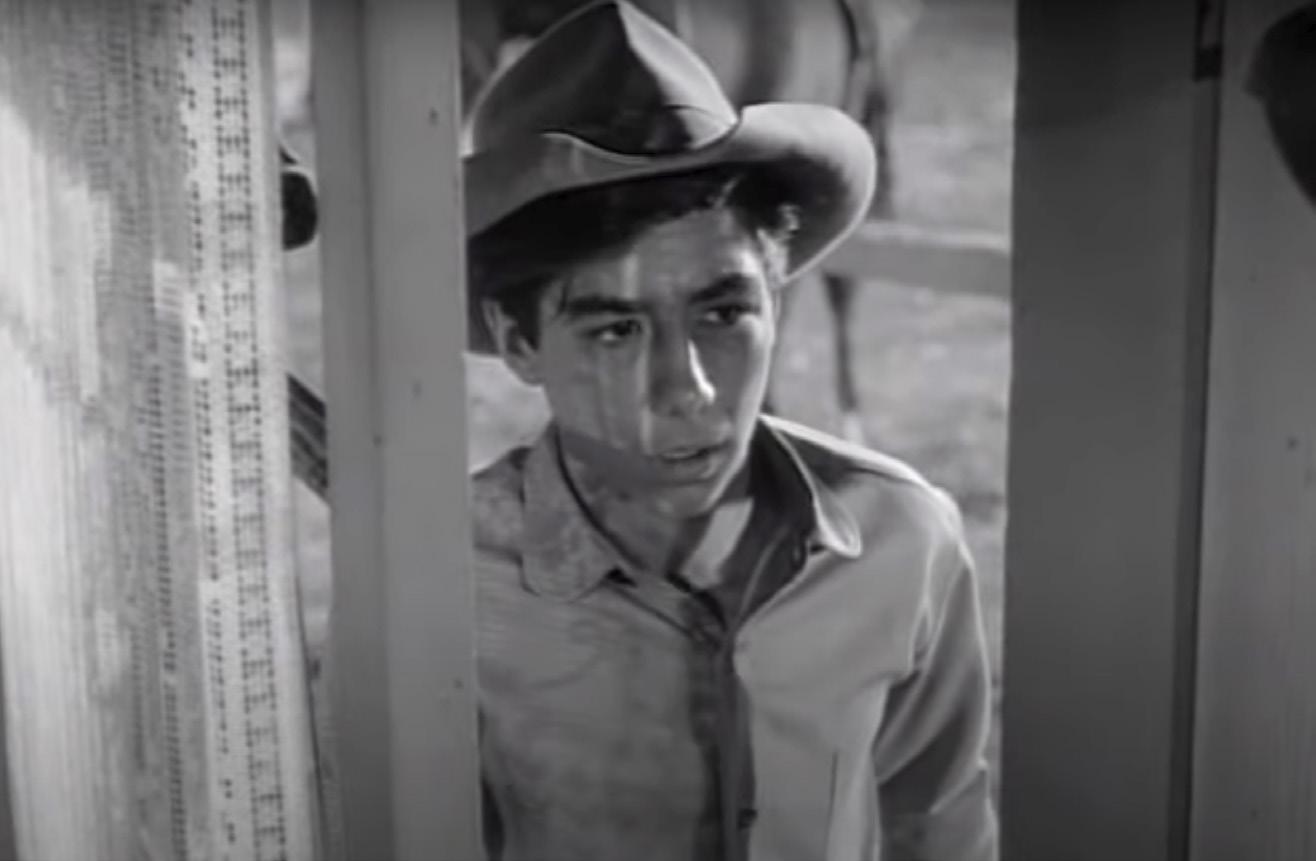

Ponderosa Ranch, a true character, while depicting a non-traditional nuclear family with a patriarch (Lorne Green as Ben Cartwright) who was a three-time widower with a son from each wife (Peter Breck, Dan Blocker, Michael Landon). Bonanza was different because it eschewed violence for topical family stories – and tackled everything from racial discrimination to voting rights and religion. One of the show’s main supporting characters, Chinese cook Hop Sing, wore traditional clothing and spoke with an accent; the writers were adamant about giving him equal status – even penning several episodes where the Cartwrights defended Hop Sing and his family from discrimination, unheard of on television but so prevalent in the real world.
Bonanza spanned 440 episodes and was lensed at Lake Hemet in Riverside County’s San Jacinto Mountains (where the iconic opening that set the western wilderness tone was shot), in Nevada’s Incline Village, the Warner Bros. backlot, and what were once the great open plains of Thousand Oaks, CA! An interesting tidbit was that Bonanza’s main characters wore the same clothes each episode – easier to match when editing and cutting and using doubles, not to mention using stock footage shot in those open-range locations.
By the mid-1960s, the TV Western had begun its decline. But ABC didn’t know that and debuted a series with
an ahead-of-its-time twist. Check the opening credit sequence for The Big Valley introducing Audra (a young Linda Evans) in jeans, i.e., a woman wearing men’s clothes! That, and Barbara Stanwyck’s determination to play Victoria Barkley as a strong woman who could take charge, ride a horse, fight, shoot, and wear anything she pleased made the show groundbreaking. (Stanwyck won a Lead Actress Emmy in 1966.) The Big Valley did adhere to the genre’s proven track record of attracting audiences via prominent guest stars, including Julie Adams, Claude Akins, Anne Baxter, Charles Bronson, Ellen Burstyn, Susan Strasberg, Fritz Weaver, Adam West and more. But the series was also fearless in its themes, attacking issues like rape (in one of the first episodes) head-on. Using Mitchell cameras, and Arriflex for complex handheld shots, The Big Valley helped to make Lloyd Ahern one of the most prolific Western cinematographers in the industry. He shot with primes or Angénieux 25-250 zoom lenses and Kodak 5254 stock. “Wilfred Cline was a wonderful cinematographer [associate cinematographer on Gone with the Wind ],” Ahern recalls. “There was a dignity about him that matched Stanwyck’s.”
In an ironic twist, the TV Western’s decline in the late 1960s was often attributed to the genre’s violence feeding violence in real life. That and the cost of renting dozens of horses at $100 a day and extras standing around
to the tune of about $25 a day made for inflated costs producers weren’t willing to pay. Still, as Crudo shared, many of the classic TV Westerns are finding new life on streaming channels.
They are also bringing back warm memories for the Guild members who worked them. Flinn, O’Shea, and Ahern all fondly recall the camaraderie on the Western sets, the sharing of shots – and, of course, “taking your life in your hands when walking out of a set into the narrow aisles between stages – where herds of horses ruled the way.”
In the 1970s, there was an attempt to keep the Western going. One that seemed to gain popularity in 1977 was How the West Was Won , a spin-off of the 1962 Cinerama film. It starred James Arness, Fionnula Flanagan, and Bruce Boxleitner and ran for 25 episodes, with much of its success found in Europe. It featured battles (the first Bull Run) and family drama. Arness’s character, Zeb Macahan, gathers his family to safe ground and then chases down a killer who murdered innocent Indians. The interesting casting included Mexican star Ricardo Montalban as chief of the Sioux Nation. Guest stars like Brian Keith, Cameron Mitchell and others helped attract an audience.
“We shot it entirely at Sony with a few exteriors in Canon City, Colorado,” recalls O’Shea. “Ed Plante Jr. was the DP, and he’d done a lot of Westerns. The big change I noticed as an operator was Ed’s precise lighting. He took time with it – made it more natural. We used standard Mitchell cameras with the
Angénieux 10-1 zoom outside. Primes for handheld. What made it stand out is that the more dramatic look supported the story’s drama.”
In the late 1980s, a new kind of TV Western emerged; Ed Spielman’s The Young Riders was based on the real legendary figures of the Old West, from Sweetwater Station in Nebraska Territory. The show’s draw was the cast: Josh Brolin as James Butler Hickok, Stephen Baldwin as William F. Cody, Gregg Rainwater as Buck Cross, and Don Franklin as Noah Dixon (who became the third AfricanAmerican actor to hold a starring role in a TV Western). The Young Riders ran 68 episodes and was shot in Tucson, Arizona. But even popular guest stars like Chris Penn, Lloyd Bochner, Ted Shackelford, and Roger Reese couldn’t hold a TV audience that was more interested in police dramas and sitcoms; the show garnered low ratings for the first season and made a slight turnaround with a new time slot in the second.
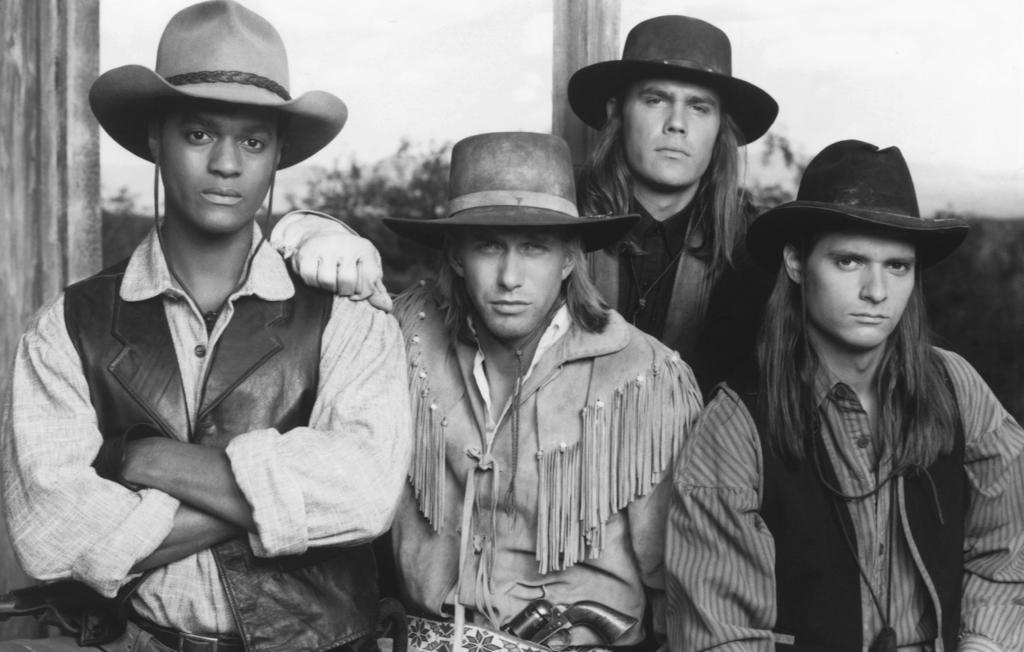
But The Young Riders did set a new standard for TV Westerns with its cinematography.
“It was a historically interesting time to shoot,” recalls Connor. “The Pony Express only lasted a few years, but it was a sign of the changing world. Even the heat in Arizona didn’t faze us. We couldn’t bring in lights until it started getting dark, so we
went for directional and dark – with Panavision Panaflex and lenses with the Chapman Crane. That crane got a workout – because we had the stagecoach, and we shot anyone driving the stagecoach across the front [or back] with that crane.”
In 1998, a feature-to-TV Western based on The Magnificent Seven ran for two seasons and starred Michael Biehn, Eric Close, Ron Perlman, and Robert Vaughn. Like others in that era, the show bent the Western credo, with seven different men – an infamous gunslinger, an ex-bounty hunter, a con artist, a young Eastern amateur, a womanizing gunman, a freed slave turned heeler, and a former preacher – banding together to form the law in a town that, for better or worse, needs their protection. Shot mainly in Newhall, CA, it was directed by Geoff Murphy and won an Emmy for costumes.

For Gordon Lonsdale, ASC, shooting The Magnificent Seven was a gift – he loved Westerns as a kid. “I remember when Hopalong Cassidy came to our elementary school and rode his horse around,” Lonsdale laughs. “We shot 16 millimeter with 100 ASA Kodak stock, capturing horses and stagecoaches – a kid’s dream. We’d have Michael Biehn driving, and the bad guys jump him and fight – then be trampled by the horses.
I remember using hard light to give it a period look. No Steadicam – we’d just hop on a horse with a 16-millimeter camera. And there was an edict we all had to follow – we couldn’t turn the camera on until every actor’s costume was dusty and dirty. We wanted it to feel real.”
Adds William Wages, ASC, who ironically wasn’t a fan of Westerns as a viewer but loved taking over for Lonsdale, “There is something about the [Western] aesthetic that people respond to. Small figures in a big landscape with simple but complex stories. We shot straightforward visuals with simple photographic storytelling, which is far more difficult than showing off. I loved that classic image of a man and a horse in a huge landscape putting everything in scale.”
In 2004, the TV Western moved into a new iteration with HBO’s Deadwood , with historical figures like Wild Bill Hickock, Sol Star, Calamity Jane, and Wyatt Earp, mixing historical truths and fictional elements. Deadwood certainly broke boundaries, with stories often taken from diaries and newspapers of the era to portray how the characters lived – and, most of all, spoke. The language in the show quickly became a character, representative of miningcamp people for whom obscenity came with the territory. It ran three seasons with 12 episodes each, and took its name from its location – Deadwood ,
THE YOUNG RIDERS , COURTESY OF ABC THE MAGNIFICENT SEVEN , COURTESY OF CBSAHERN CALLS HBO’S DEADWOOD (RIGHT)



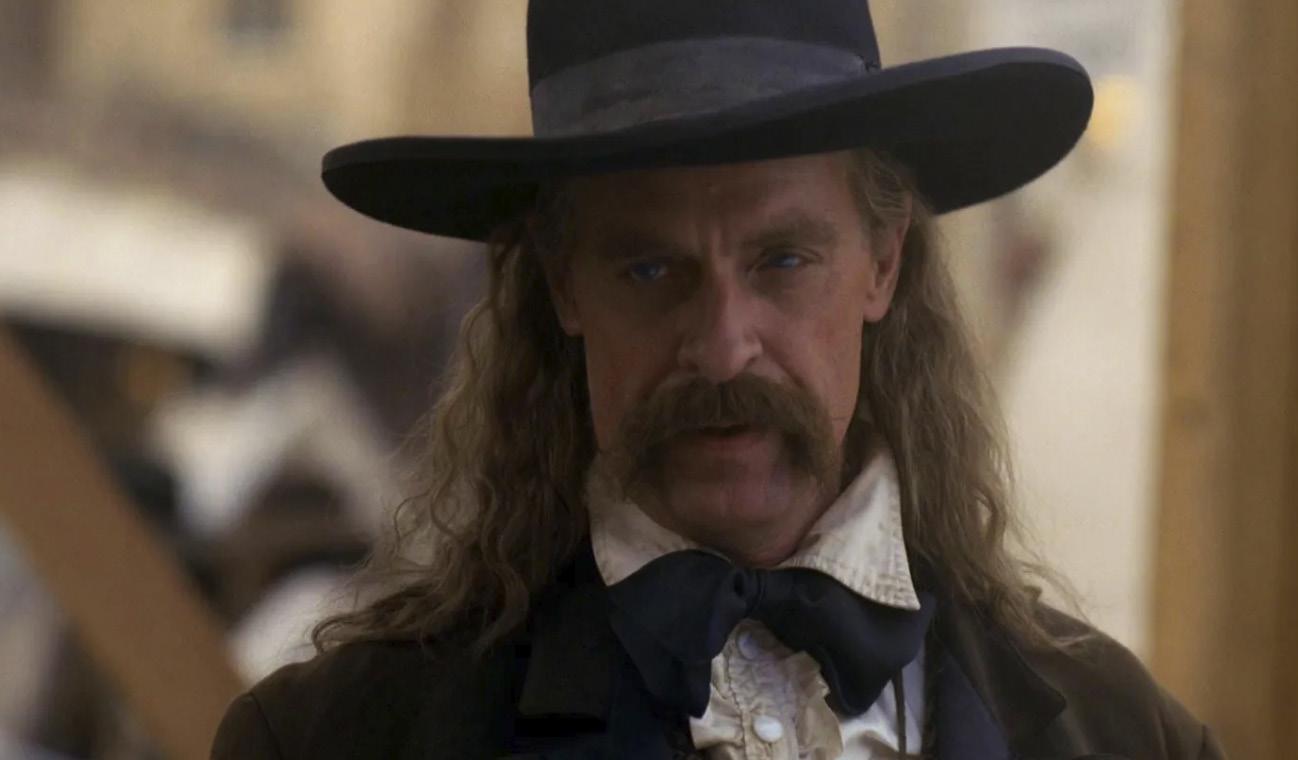
“REVOLUTIONARY. WE SHOT THE PILOT IN 19 DAYS AND THERE WERE NO RULES FOR THE CAMERA – IF WE DIDN’T LIKE A SCENE, WE’D DO IT OVER.” / FRAMEGRABS
COURTESY OF HBO
JUSTIFIED (TOP) LONGMIRE (MIDDLE) AND GODLESS (BOTTOM) ALL TOOK THE TV WESTERN INTO UNCHARTED TERRITORY. AS GODLESS DP STEVE MEIZLER NOTES: “THE RED CAMERAS, SHOT WITH A 2:40 ASPECT RATIO AND ZEISS SUPER SPEEDS, ALLOWED US TO EMBED OUR CHARACTERS IN THEIR ENVIRONMENT. WE COULD DO A 25-MILLIMETER CLOSEUP BUT STILL FEEL THE LANDSCAPE.” / JUSTIFIED PHOTO


 BY PRASHANT GUPTA / FX / LONGMIRE PHOTO BY JOHN GOLDEN BRITT / NETFLIX / GODLESS PHOTO BY URSULA COYOTE / NETFLIX
BY PRASHANT GUPTA / FX / LONGMIRE PHOTO BY JOHN GOLDEN BRITT / NETFLIX / GODLESS PHOTO BY URSULA COYOTE / NETFLIX
South Dakota, both before and after the area’s annexation by Dakota Territory – as it grew from camp to town with themes ranging from the formation of communities to Western capitalism.
“It was a revolutionary show, with adult-type language, nudity and violence,” describes pilot Director of Photography Ahern. “I remember Gunsmoke being shot in seven days –we did the Deadwood pilot in 19 days. There were no rules for the camera – if we didn’t like a scene, we’d do it over. Our director won an Emmy for this daring approach.”
In 2010, Justified , based on Elmore Leonard’s stories of the Appalachian Mountains of Eastern Kentucky, specifically Harlan County, brought the genre into a neo-crime drama. Starring Timothy Olyphant as Raylan Givens, a 19th-century style lawman living in modern times. Justified ran for six seasons on FX Networks and garnered eight primetime Emmy nominations and two wins for Margo Martindale and Jeremy Davis.
As series cinematographer Francis Kenny, ASC describes: “All Westerns are about setting regardless of their historical or geographical truth. Elmore Leonard wrote about Raylan Givens and the eastern coal mining towns. While technically the series isn’t a Western, the character has all the elements of the Western American hero – individualist, fearsome, gunslinging, quick-draw, hard-drinking, sexist and a cowboy hat. For me, Justified’s goal was to continue the Western genre and show the scale of man to his surroundings. We did travel to Harlan County for second unit plate work, but we shot in Southern California. As a result, the look is different – but it still works for the story.”
Justified also moved into modern times behind the camera, with Sony persuading the team to shoot with the RED EPIC, bringing a look that blends new technology with an old theme. The
pilot earned the highest debut for an FX show since The Shield
In 2012 another contemporary Western debuted on A&E Networks. To portray Walt Longmire, Australian Robert Taylor drew inspiration from Clint Eastwood and Harrison Ford. Inspired by a series of books – Longmire Days – set in Buffalo, Wyoming, Longmire became A&E’s highest-rated original drama. (The final three seasons ran on Netflix.) The show brought a new dimension to the genre, showing the tenuous jurisdictional authority (from Lou Diamond Phillips) over Native American life as it assimilates and stands alone in the modern world. The Wall Street Journal’s Nancy DeWolf called it “the best of two worlds: a modern crime drama with glorious settings… If it weren’t for a few modern conveniences, like cell phones and trucks, it might as well be 1875, so rugged and unspoiled does the scenery look.”
Notes Director of Photography
Cameron Duncan, “Like many kids, I was enamored with the Western. In college, I cut together Gunsmoke sequences for a film project. To shoot one, albeit in the modern world, was a gift.” Both Duncan and Jimmy Muro, approached supporting the Western style with modern tools. “Fluid dolly and handheld with small Optima Zooms,” Duncan shares. “We shot a lot in Santa Fe [standing in for Wyoming] and L.A. for the Midwest. Walt’s hat almost became another character, as our environmental lighting was perfect to hit its rim, and we often pushed lights [18K] up to, say, the second floor to capture the edge light from the ground.”
Muro, whose résumé included Dances with Wolves , Thunderheart and Young Guns , says Longmire was all about the “Western integrity. It is amazing what we can do to support this story with the new technology,”
he states. “It was one of the first Netflix shows to go 4K, and we embraced the technology of the RED camera systems. We chose the oldest set of Zeiss lenses and the oldest HR zoom and glass to counter the harsh sensors and give it the Longmire look. The early Westerns did some amazing things with cranes and dollies, but today, we could give this show more of a scope with little dollies we could push around with a jib arm that could go anywhere the story took us.”
Four years later, Scott Frank took the Western down a road first paved by The Big Valley (with strong female characters) but often ignored since. Godless , a limited series that garnered 12 Emmy nominations, featured big vistas and the graphic violence of its 1884 era. It featured a young outlaw on the run who ends up in a small New Mexico town populated almost entirely by women. These women did everything the traditional Western assigned to men.
To make the world as authentic as possible, researcher Mimi Munson brought 20 novels about mining and oral histories written by women to Frank. Production didn’t shy away from the mess – bodies, dead horses, violent fights – which the times were about.
“We didn’t approach it as a Western,” says Director of Photography Steve Meizler. “I was more interested in the color of the times and how to create our version of LaBelle [shot at various locations in New Mexico – Bonanza Creek Ranch and Santa Clara Pueblo.] It was the traditional man versus nature, good versus evil. The RED cameras, shot with a 2:40 aspect ratio and Zeiss Super Speeds, allowed us to embed our characters in their environment. We could do a 25-millimeter close-up but still feel the landscape.” Because everything was built on location, Meizler and his team could also dig into more traditional Westernisms. Got a hot chase going? Why not ride
the horses into the saloon and up the stairs?
AMC’s The Son introduced what is now a TV norm in all genres – the epic narrative. The story of Eli McCullough, who was kidnapped and raised by Comanches, begins in 1849 and plays out in present-day 1915, as Eli (Pierce Brosnan) turns from powerful and ruthless cattle baron to oilman, struggling to maintain his empire. Guild DP Todd McMullen calls the show an amazing experience. “A true Western that covered 150 years and three generations of ranchers in Texas,” he shares. “The themes centered around cattle ranchers, Comanche Indians, Texas Rangers, and newfound oil. The characters are flawed and as real as the studio would allow.
“Visually, it was rewarding because we could define looks for all periods,” McMullen adds. “From Comanche Indian flashbacks and pre-electricity to modern storylines with electricity. The goal is to frame shots wide enough to include the landscape’s character and geography that Westerns are known for.” The modern tools – drones, Steadicam and the Mōvi – added to the excitement. “Dynamic tracking shots of the many horse riding and chase scenes,” McMullen says. “While we have the advantage of these tools, they can’t replace how we tell the Western story. I always get a chuckle from seeing the tire tracks of an insert car or some rig they used to cover horseback riding in shows like Gunsmoke or Bonanza .”
Without question, Taylor Sheridan’s Yellowstone franchise [ICG Magazine December 2022], which debuted in 2018, defines today’s TV Western. With its core story of the Dutton family struggling to maintain their hold on the land they fought so hard to build, Paramount+’s mega-hit has given birth to a slew of spin-offs and prequels, including 1883 , 1923 , and the upcoming 6666 (pronounced “four sixes”) and the story of real-life legendary lawman
Bass Reeves, who became the West’s first Black U.S. Marshal, with David Oyelowo in the lead role.
As Season 2 Director of Photography Adam Suschitzky observes: “ Yellowstone is shot on location, with structure, themes, characters and conflicts straight out of the Western genre we all know and love. It’s inherently cinematic as it deals with universal concepts of what it means to live or die on this great Earth of ours. How we as filmmakers translate this to the screen today is the same as how John Ford, Sergio Leone, or Clint Eastwood would have done decades before. We make choices with each scene and setup about how best to immerse our audience into the drama alongside our characters.”
Suschitzky says the show is carefully planned, especially when shooting natural light. “It’s essential when working fast and having a big team to direct,” he continues. “Today, we have apps to tell us where the sun will be, and even for framing shots. Smaller cameras let us put the lens in previously impossible places. We move in ways other generations of Western filmmakers would have marveled at. We use the ALEXA Mini and as much available light as possible on location. The studio in Park City is rigged with an array of LiteGear products and LED’s. When we approach some iconic shots, I think about what early cinematographers tried to do with old arc and space lights that would have generated a huge amount of heat.”
William Wages adds that, “what I loved about working on Yellowstone was that this is still the story of the old Westerns and what cowboys do for a living. Operas don’t change. Kabuki doesn’t change. Taylor Sheridan knows we’d fail if we tried to change the Western concept.
“What has changed, as Adam notes, is how we tell the story,” Wages continues. “Taylor loves long lenses – and our iconic shots of the Duttons are easily captured. When I was on the
show, we did this with the Varicam, but now the ARRI cameras can do the same and more.”
Rob McLachlan, ASC, CSC, who shot episodes of the Yellowstone spin-off 1923 and the upcoming Bass Reeves , says 1883 ignited the Old West genre. “I think Taylor is using them not just to tell great stories but to right the multitude of historical wrongs visited by those original Westerns. These new shows expose how indigenous people were treated and also the role that former slaves had in the Old West. Bass Reeves is a prime example, telling the story of the first Black lawman, on whom The Lone Ranger was based. I think there’s a thirst for non-revisionist history, as well as a reminder to a new generation just what it took to build this country, who the people are who did it, and how heroically tough they must have been.”
In 2021, The CW brought back a version of the Chuck Norris series Walker, Texas Ranger . Though technically a police procedural, Walker (now in its third season) has the tone of the Western. Geared to a younger audience, it is the story of a broken widower and father who partners with one of the only women in Texas Ranger history (no martial arts, no massive shoutouts). “We shoot in and around Austin, Texas,” says DP Peter Kowalski, who has TV Westerns in his DNA from having been baby-sat by the cast and crew of shows like The Rifleman , Rawhide , Gunsmoke , and Bonanza , on which his father, director Bernie Kowalski, worked.
“I learned a lot about shooting Westerns from watching my father and working with people like John Flinn and Mike O’Shea,” Kowalski says. “Many of the things we managed to be successful with are the norm today, thanks to technology. Can you imagine what we could have done with a drone on those old shows? And what about VFX? When we blew up a barn on those early Westerns, we had to get it right the first time because we really blew it up. Today, we can use VFX to
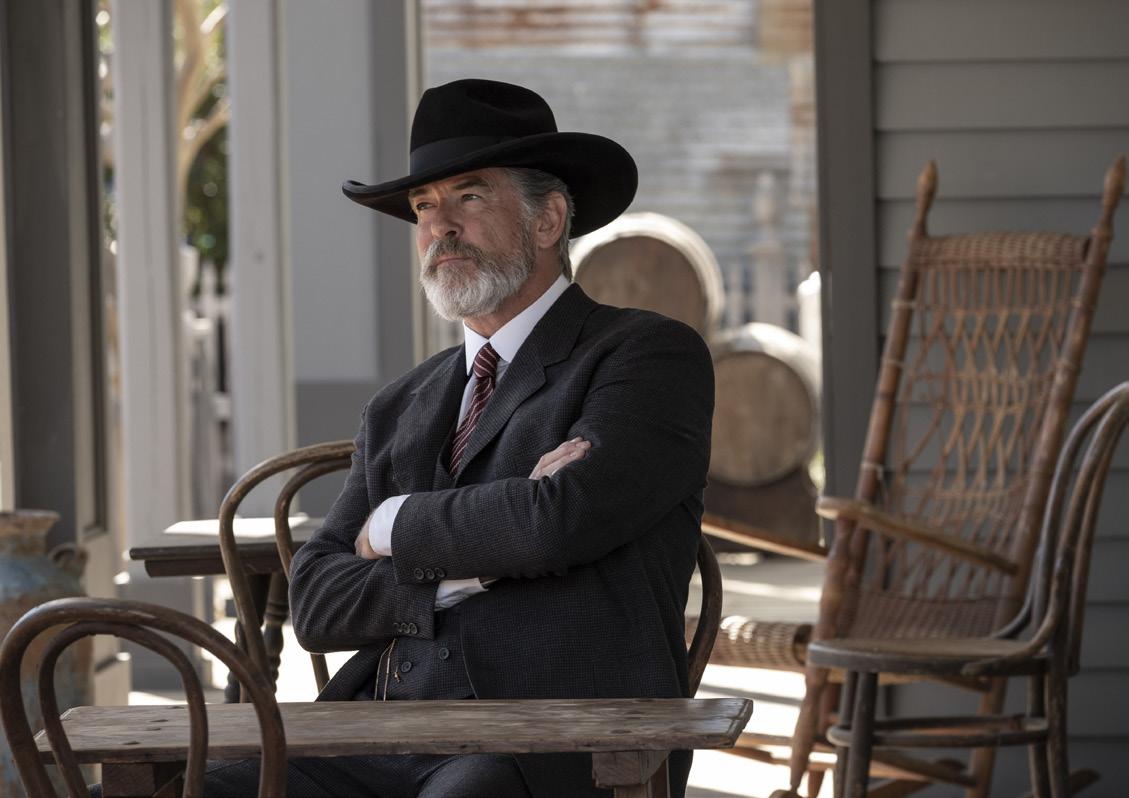
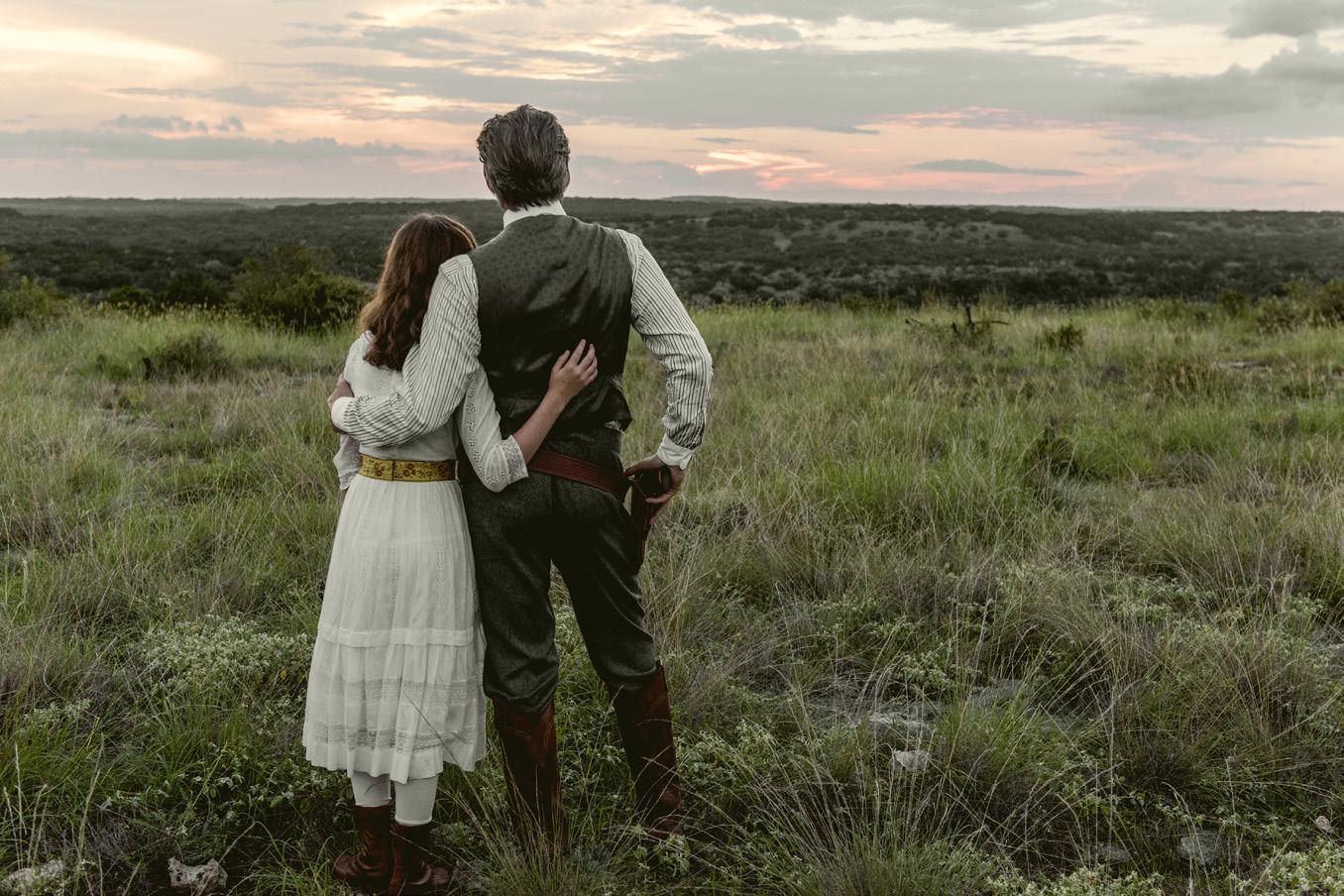



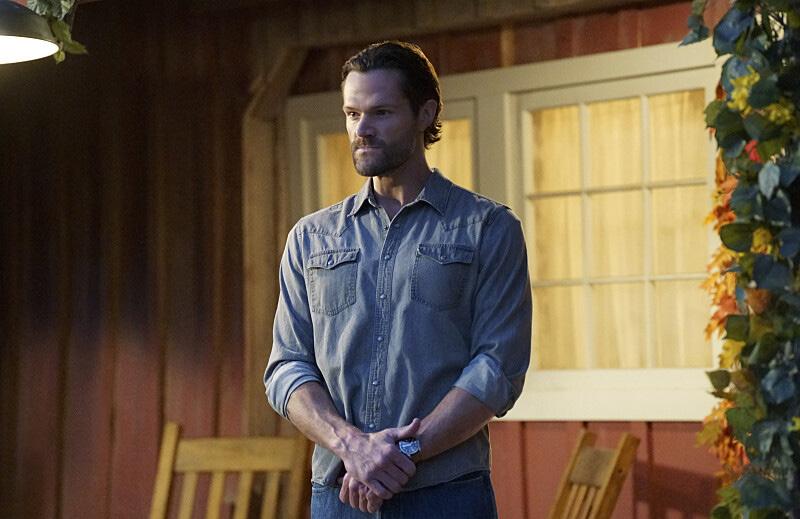
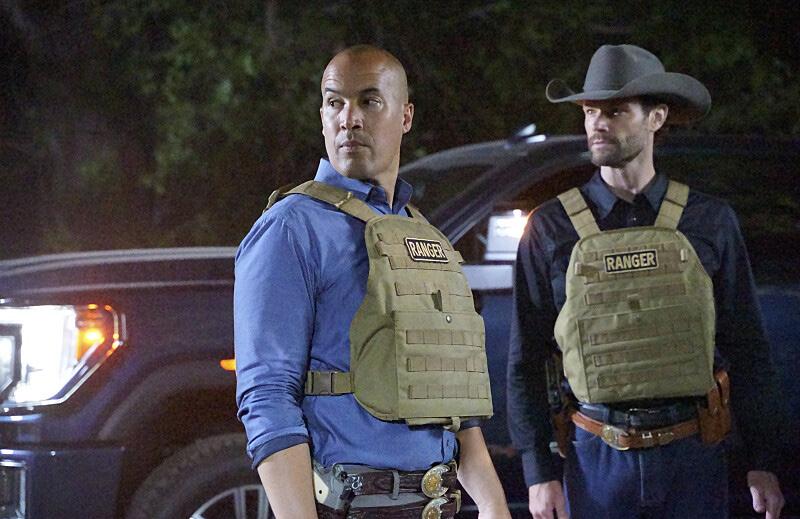
 THE SON PHOTOS BY VAN REDIN / AMC
WALKER PHOTOS BY REBECCA BRENNEMAN / THE CW
WALKER INDEPENDENCE PHOTOS BY ANNA KOORIS (L), RICHARD FOREMAN (R) / THE CW
THE SON PHOTOS BY VAN REDIN / AMC
WALKER PHOTOS BY REBECCA BRENNEMAN / THE CW
WALKER INDEPENDENCE PHOTOS BY ANNA KOORIS (L), RICHARD FOREMAN (R) / THE CW

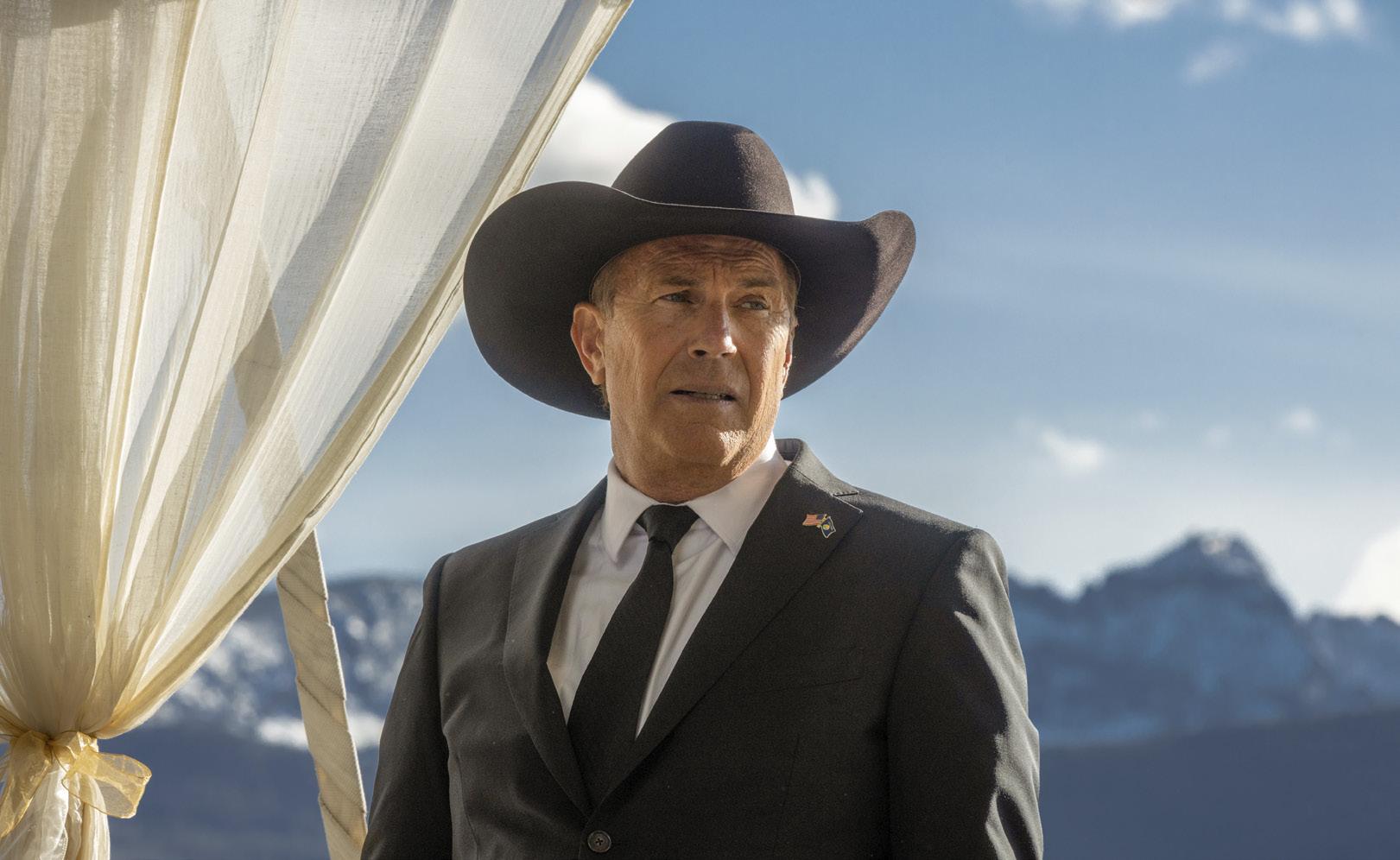

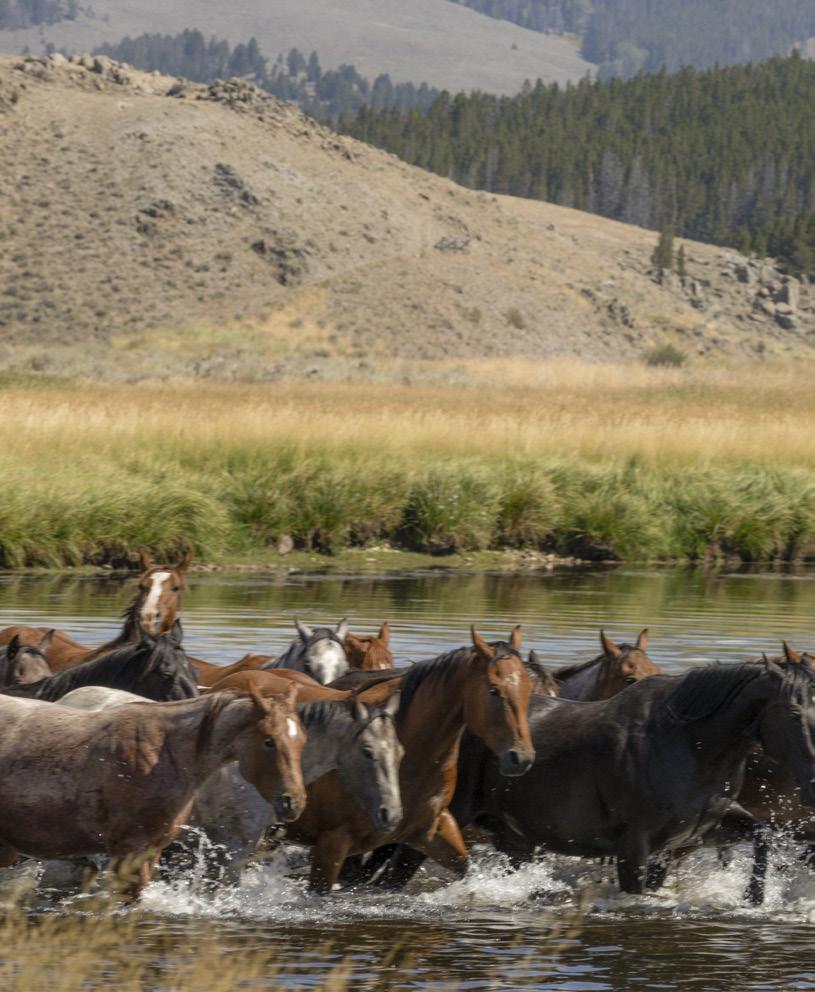
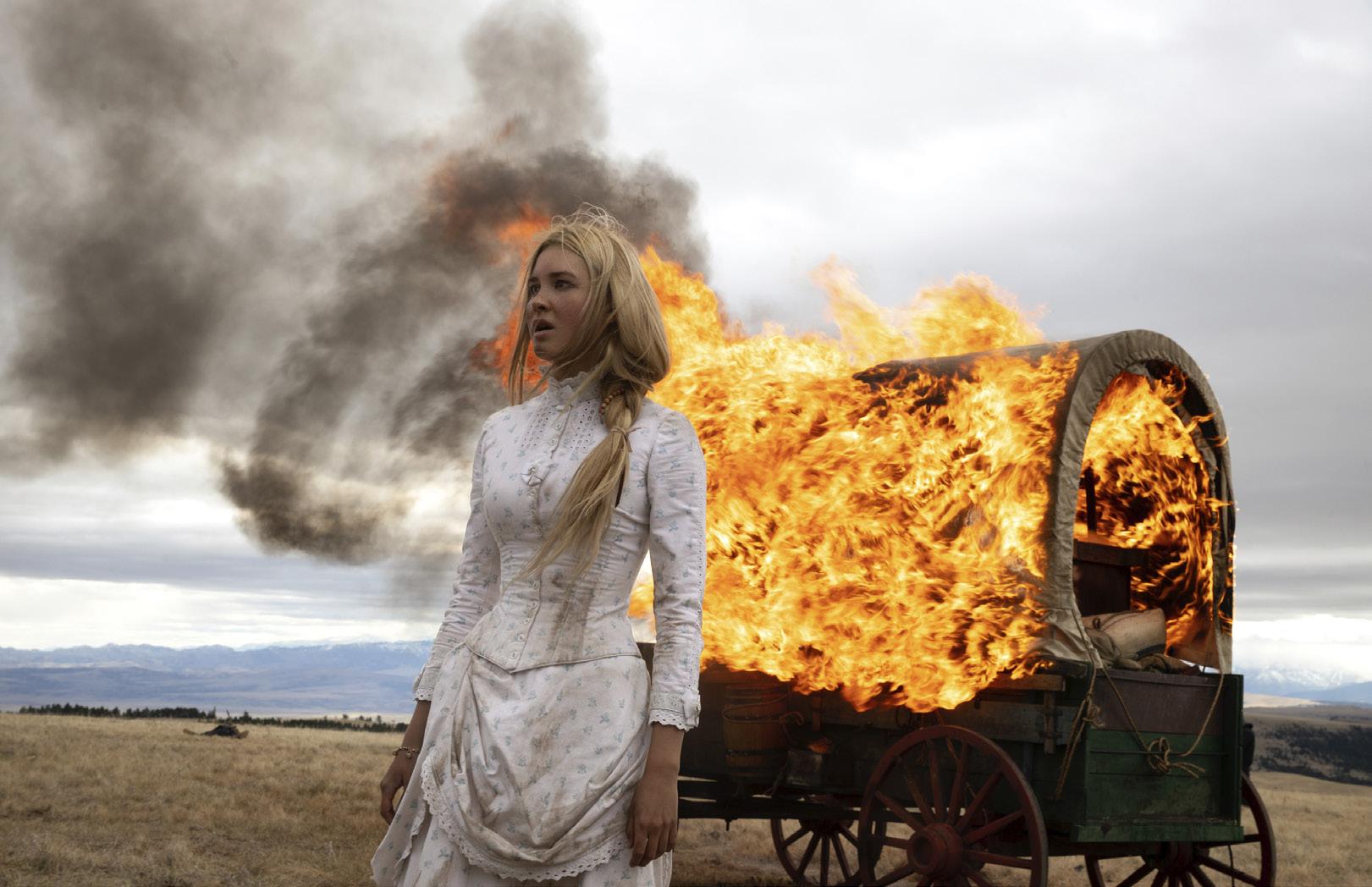




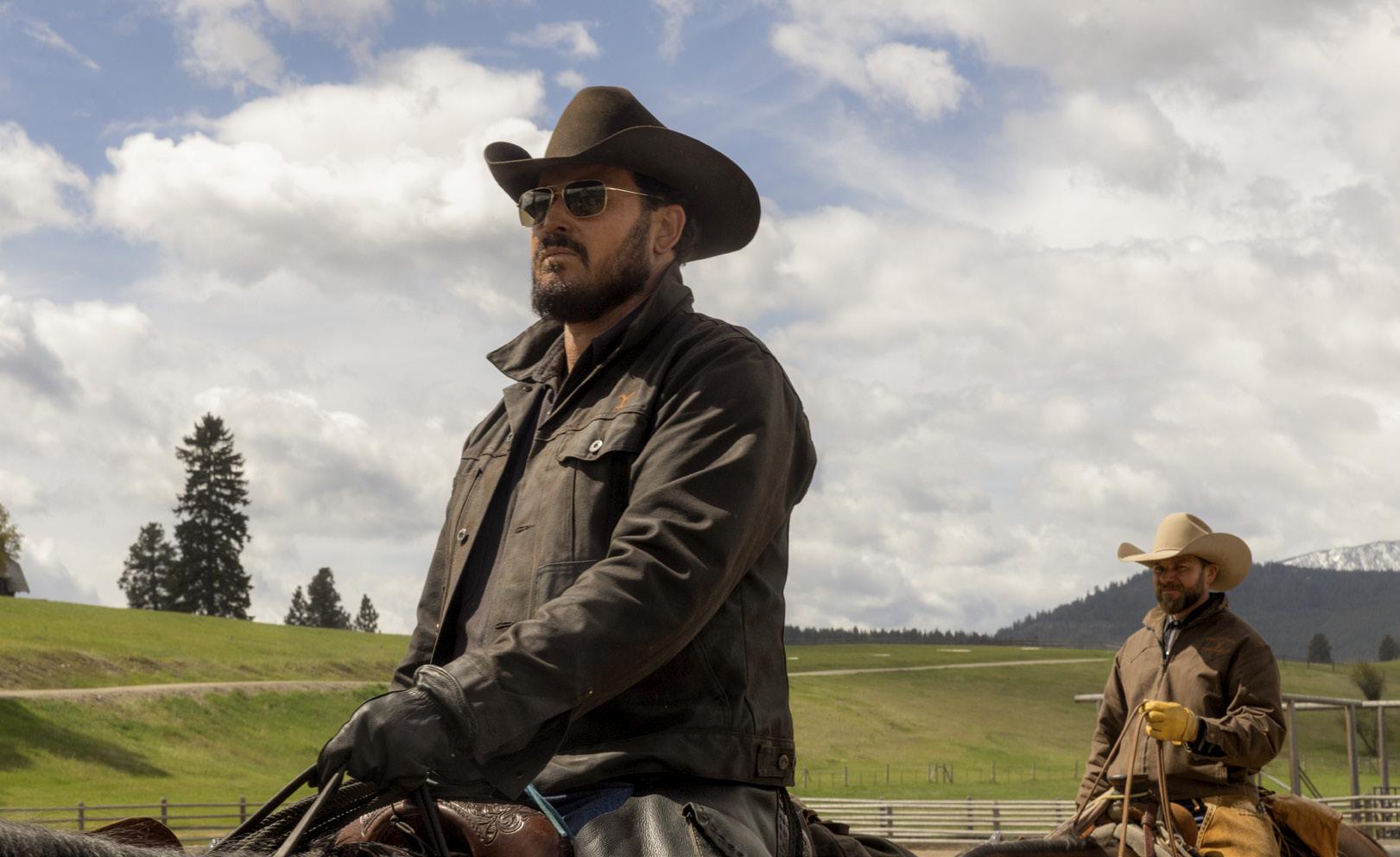

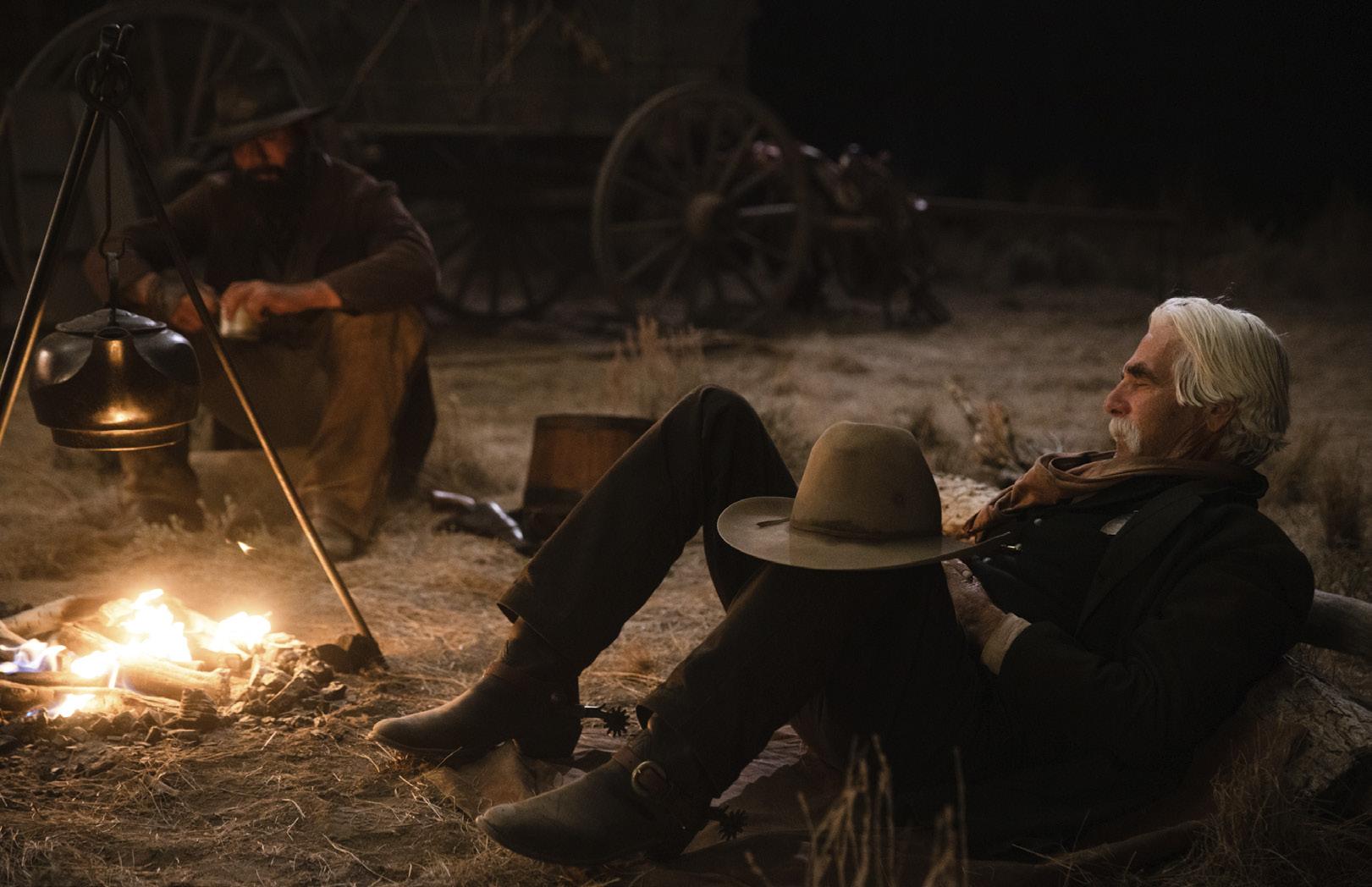
DP DREW DANIELS SAYS OUTER RANGE TAKES THE TV WESTERN INTO MODERN TIMES, WITH “BUZZING NEONS AND FLUORESCENTS OF SMALL-TOWN AMERICA,” ALL SUPPORTED BY NEW DIGITAL TECHNOLOGY.
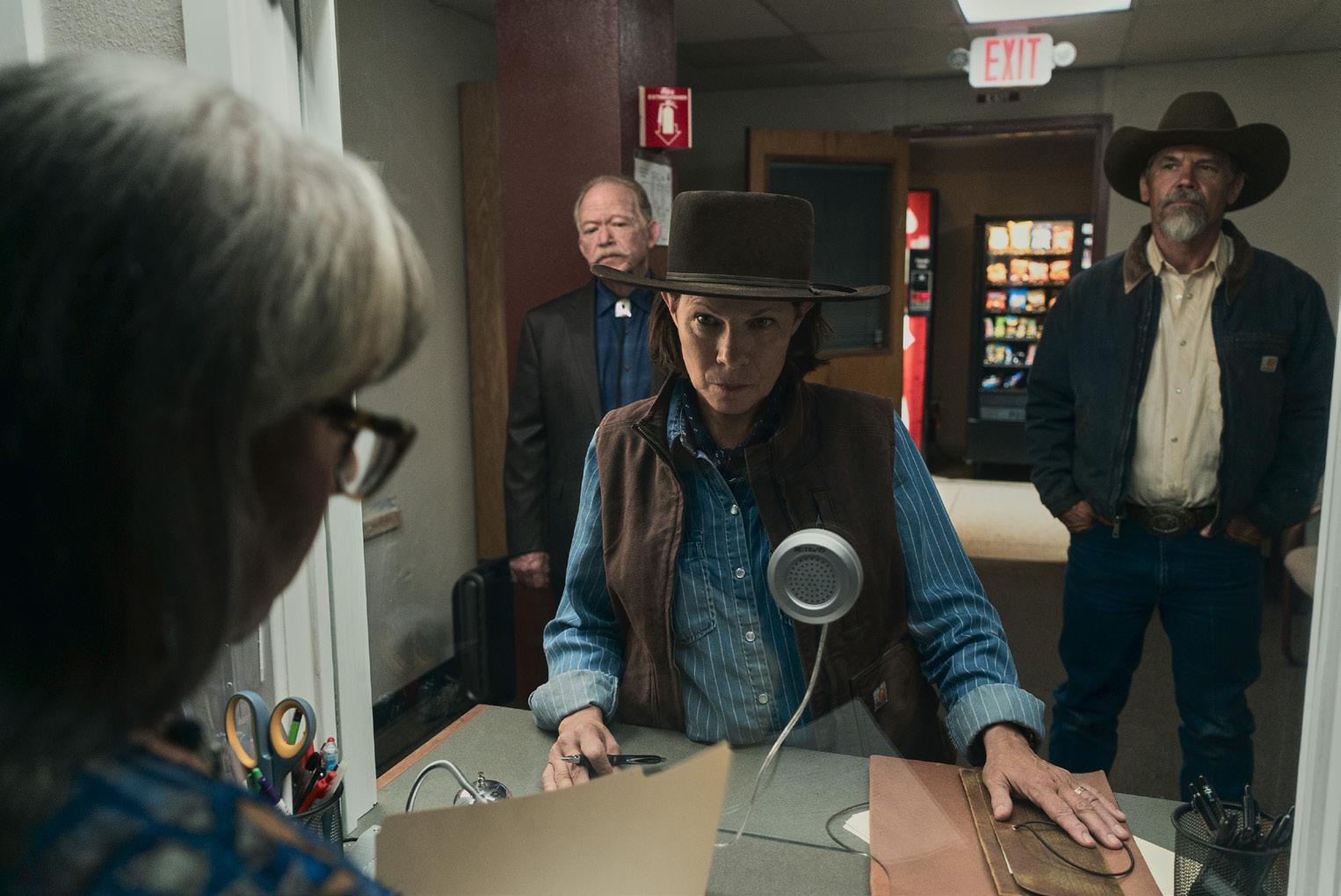
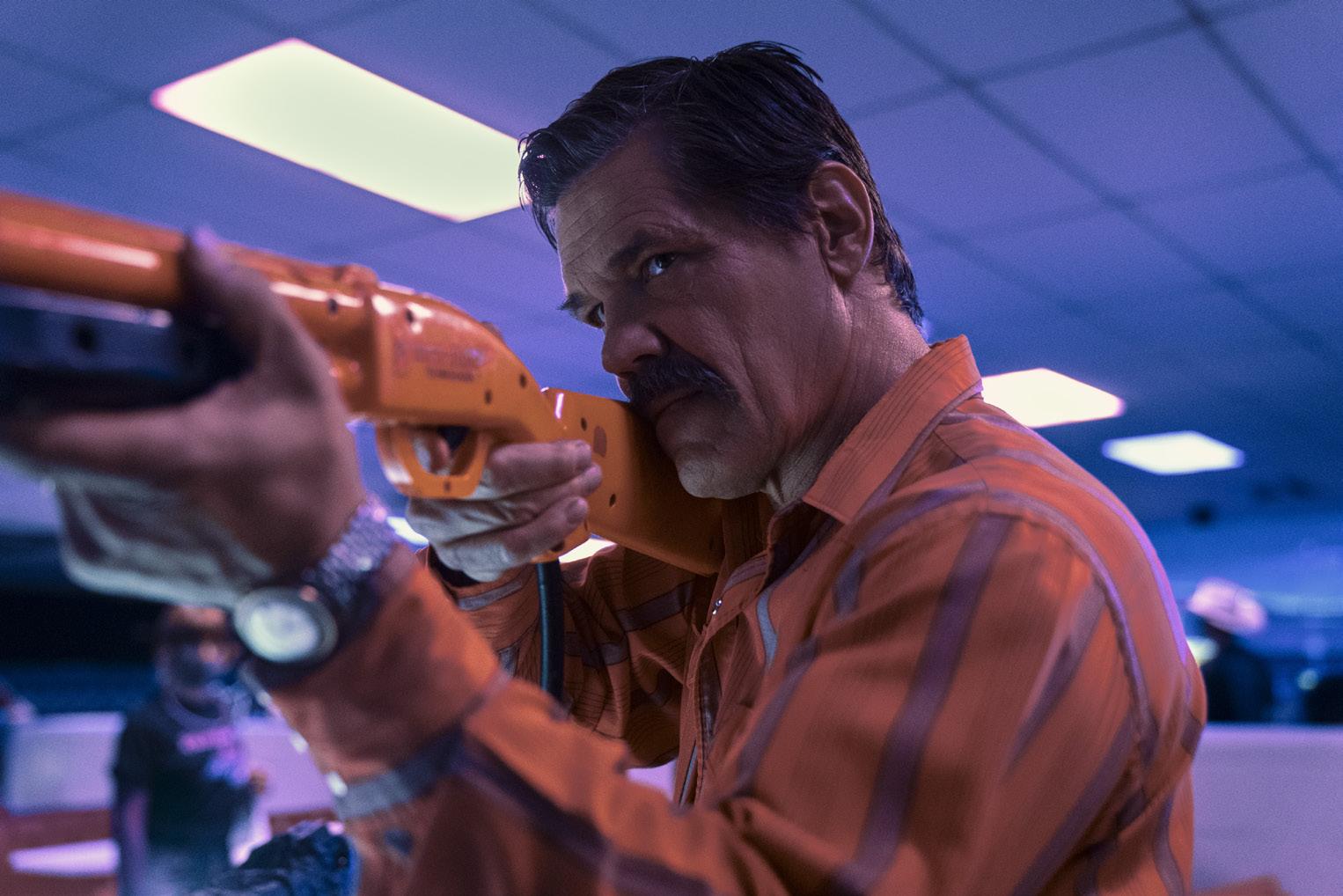
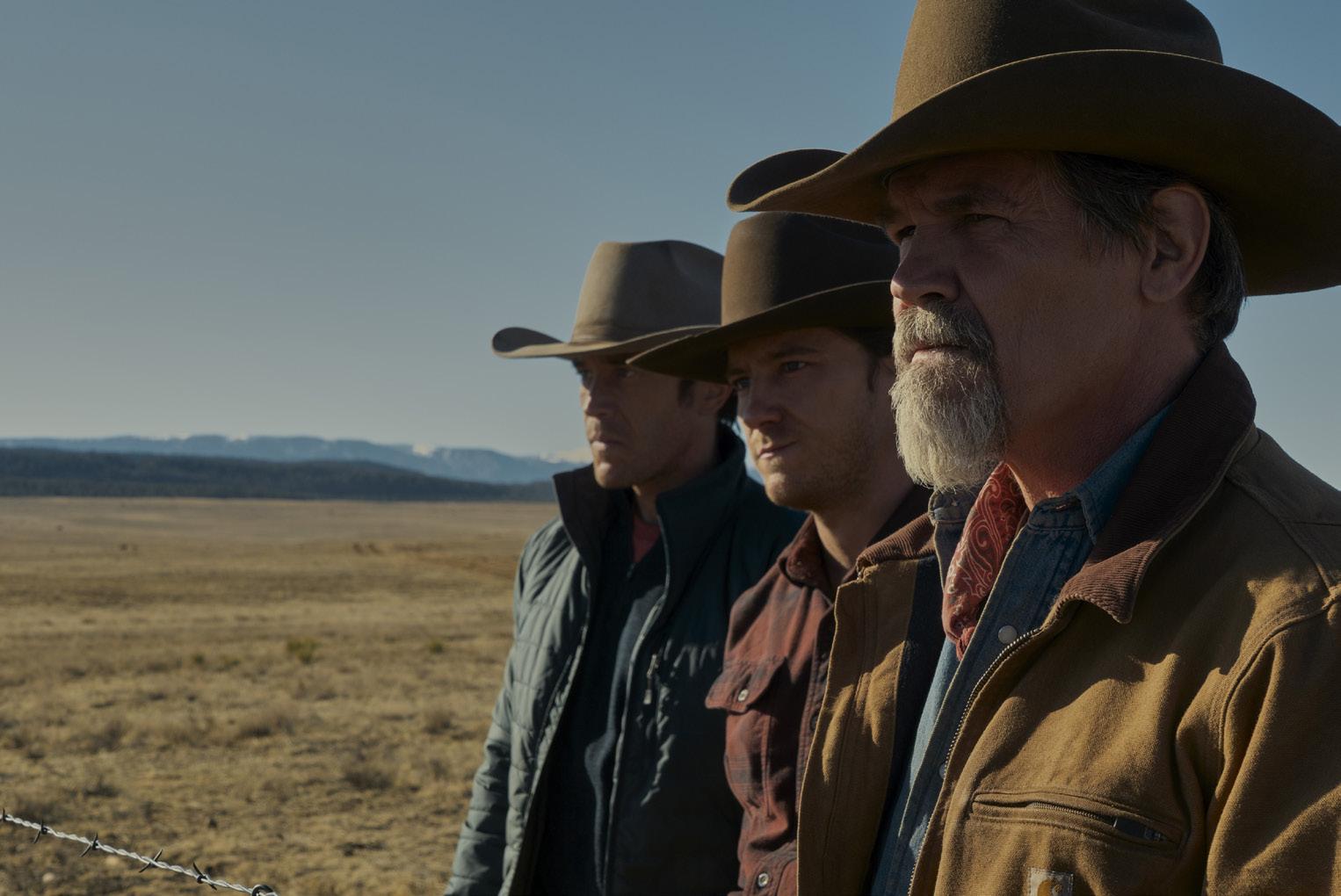
“WE SHOOT WITH THE ARRI MINI LF AND PANASPEEDS AND ULTRA SPEEDS AND EVERY KIND OF LIGHT AVAILABLE,”
DANIELS ADDS, “EVEN THE BEBEE LIGHT FOR NIGHT EXTERIORS –ALTHOUGH WE TRY TO GO FOR THE CLASSIC LOOK AS MUCH AS POSSIBLE.” / PHOTOS BY RICHARD FOREMAN (TOP, BOTTOM, OPPOSITE), KAREN KUEHN (MIDDLE) / AMAZON STUDIOS
get it done safely and often in a more exciting way. The Panavision Genesis with Panavision Zooms and three little Optimas can do just about everything we want. What is also different is that we can enhance our theme in the color timing – which I always attend. The sky and sunsets will pop. Do I use filters? Ironically, yes, the polarizers are the same that were used on Rawhide and Gunsmoke .”
While the 2022 Amazon series Outer Range naturally suggests a modernday Western, with Josh Brolin as the patriarch struggling to protect and preserve his family in a small western town, one reviewer called the show “ Dallas meets David Lynch, and like what Severance has done for Office Space . Like it or not – SciFi has invaded the Western.”

Director of Photography Drew Daniels observes that “in a way, Outer Range is a Western of sorts that relates to the past in that the discovery of this black hole is meant to be an allegory for the discovery and exploitation of the West. What the hole does to the people around it can stand in for wealth, oil, power, evil and the unknown. It’s also a show about two feuding families, each
representing different aspects of the West – the salt of the Earth versus the money-hungry and the greedy.”
Outer Range takes the TV Western into modern times, with, as Daniels describes, “buzzing neons and fluorescents of small-town America, and with a theme that seems to be invading so many shows – something mysterious and bigger than our characters. This is a ‘new Western’ that needs the support of new technology. We shoot with the ARRI Mini LF and Panaspeeds and Ultra Speeds and every kind of light available, even the BeBee light for night exteriors – although we try to go for the classic look as much as possible.”
Daniels says mixing classic Western motifs with the bizarre makes for an interesting set.
“In one episode, two characters meet outside the motel and kiss,” he recounts. “And then she carves her cult symbol on his chest! It’s so weird and heightened – but we still have the classic Western language.” Adds Director of Photography Jay Keitel, “It’s really about putting the characters’ emotions on the screen in a more subjective way. But we always keep in mind that we are shooting in a Western style – with all of the history that goes along with the genre.”
Chatting with Local 600 members who have worked (or are working) on TV Westerns often echo what Mike Frediani, SOC, shares: “Camera operating on Westerns isn’t markedly different from other genres. There are masters, over-the-shoulders and close-ups. And all types of equipment and filters. Images are crafted with care. Low hats, hi-hats, tripods, cranes, and an array of telephoto lenses. Not that different from most productions, but then add in snow, rain, mud, rivers and other environmental challenges, and you have a lot of logistics to capture great images. And with all those beautiful vista shots, fluid compositions, and back-lit shots, you’ve accomplished something magical.”
A fun anecdote that shows the lasting impact of the TV Western comes from legendary producer Gene Roddenberry, who first pitched Star Trek as “ Wagon Train to the Stars.” Today when people need to escape a world seemingly out of control, or are too exhausted to be pulled into highly dynamic visual effects and other-worldly dramas, they may surf the various streamers for the classics – Maverick or The Rifleman or Bonanza – where right and wrong are clearly defined against a big, open country, and the good guys always come out on top.
The input of Local 600 members is of the utmost importance, and we rely on our membership as the prime (and often the only) source of information in compiling this section. In order for us to continue to provide this service, we ask that Guild members submitting information take note of the following requests:
Please provide up-to-date and complete crew information (including Still Photographers, Publicists, Additional Units, etc.). Please note that the deadline for the Production Credits is on the first of the preceding cover month (excluding weekends & holidays).

Submit your jobs online by visiting: www.icg600.com/MY600/Report-Your-Job
Any questions regarding the Production Credits should be addressed to Teresa Muñoz at teresa@icgmagazine.com
20TH CENTURY FOX
“AMERICAN HORROR STORIES: HAMPTONS” SEASON 12
DIRECTORS OF PHOTOGRAPHY: TIM NORMAN, ANDREI SCHWARTZ
OPERATORS: AILEEN TAYLOR, GERARD SAVA
ASSISTANTS: BRADEN BELMONTE, JOHN REEVES, CAROLYN WILLS, SARAH SCRIVENER
DIGITAL IMAGING TECH: GUILLERMO TUNON
LOADER: OFELIA CHAVEZ, VINCE FERRARI
TECHNOCRANE TECH: CRAIG STRIANO
STILL PHOTOGRAPHERS: MICHAEL PARMELEE, ERIC LIEBOWITZ
“AMERICAN HORROR STORIES” AKA
“THRILLER” SEASON 3
DIRECTOR OF PHOTOGRAPHY: MICHAEL BAUMAN
OPERATORS: REBECCA ARNDT, FERDINAND LE GRANGE
ASSISTANTS: HAMILTON LONGYEAR, SARAH
HENDRICK, PAT MCKEOWN, KATIE WAALKES
DIGITAL IMAGING TECH: MATTHEW SELKIRK
LOADERS: AARON CHAMPAGNE, CHRIS MENDEZ, CLAIRE SNODE
“AMERICAN SPORTS STORY: GLADIATOR”
DIRECTOR OF PHOTOGRAPHY: ELIE SMOLKIN
OPERATORS: CHRIS ARAN, KYLE WULLSCHLEGER
ASSISTANTS: RANDY MALDONADO GALARZA, CODY SCHROCK, RANDY SCHWARTZ, FRANCES DE RUBERTIS
DIGITAL IMAGING TECH: LOIC DE LAME
LOADERS: ALESSANDRA CIRENZA, ADAM KIM
STILL PHOTOGRAPHERS: ERIC LIEBOWITZ, VANESSA CLIFTON
ABC STUDIOS
“JIMMY KIMMEL LIVE!” SEASON 21
LIGHTING DIRECTOR: CHRISTIAN HIBBARD
OPERATORS: GREG GROUWINKEL, PARKER BARTLETT, GARRETT HURT, MARK GONZALES
STEADICAM OPERATOR: KRIS WILSON
JIB OPERATORS: MARC HUNTER, RANDY GOMEZ, JR., NICK GOMEZ
CAMERA UTILITIES: CHARLES FERNANDEZ, SCOTT SPIEGEL, TRAVIS WILSON, DAVID FERNANDEZ, ADAM BARKER
VIDEO CONTROLLER: GUY JONES
STILL PHOTOGRAPHERS: KAREN NEAL, MICHAEL DESMOND
2ND UNIT
DIRECTORS OF PHOTOGRAPHY: BERND REINBARDT, STEVE GARRETT
“GROWN-ISH” SEASON 6
DIRECTOR OF PHOTOGRAPHY: MARK DOERINGPOWELL, ASC
OPERATORS: JESSE EVANS, ROBIN PABELLO
ASSISTANTS: ROBERT SCHIERER, MICHAEL KLEIMAN, TOMMY IZUMI, ROCIO MEDA
LOADER: ANDREW OLIVER
DIGITAL UTILITY: LAUREN VANDERWERKEN STILL PHOTOGRAPHER: RON JAFFE
ALRIGHT PRODUCTIONS, INC.
“RELAY”
DIRECTOR OF PHOTOGRAPHY: GILES NUTTGENS
OPERATORS: JEFFREY DUTEMPLE, BRADLEY GRANT, CHRIS HAYES
ASSISTANTS: ROB KOCH, VANESSA VIERA, JANICE BURGESS, TANEICE MCFADDEN
DIGITAL IMAGING TECH: MATTHEW JENSEN
LOADERS: DAVID CARLOS DIAZ, CLINT PORTE, ANGEL VASZQUEZ
STILL PHOTOGRAPHER: HEIDI HARTWIG
AMERICAN HIGH, LLC
“PROM DATES”
DIRECTOR OF PHOTOGRAPHY: BRADFORD LIPSON
OPERATORS: BRENDAN POUTIER, LISA SENE
ASSISTANTS: SYMON MINK, DAVID MASLYN, NOTES KAEWBAIDHOON, JOSIAH WEINHOLD
DIGITAL IMAGING TECH: ROSS CITRIN
STILL PHOTOGRAPHER: BRETT ROEDEL
APPLE STUDIOS, LLC
“WILDVALE”
DIRECTOR OF PHOTOGRAPHY: BENJAMIN KRACUN
OPERATOR: JENNIE JEDDRY
ASSISTANTS: JASON RIHALY, ERIC SWANEK, KELSEY MIDDLETON, TYLER SWANEK
DIGITAL IMAGING TECH: DOUGLAS HORTON
LOADER: NAIMA NOGUERA
STILL PHOTOGRAPHER: ATSUSHI NISHIJIMA
UNIT PUBLICIST: FRANCES FIORE
BEACHWOOD SERVICES
“DAYS OF OUR LIVES” SEASON 59
DIRECTOR OF PHOTOGRAPHY: DAVID MEAGHER
OPERATORS: MARK WARSHAW, MICHAEL J. DENTON, JOHNNY BROMBEREK, STEVE CLARK
CAMERA UTILITY: GARY CYPHER
VIDEO CONTROLLER: ALEXIS DELLAR HANSON
BLIND FAITH PRODUCTIONS, LLC
“DAREDEVIL: BORN AGAIN” SEASON 4
DIRECTOR OF PHOTOGRAPHY: HILLARY FYFE SPERA
OPERATORS: THOMAS SCHNAIDT, BLAKE JOHNSON
ASSISTANTS: ALEXANDER WORSTER, OLGA
ABRAMSON, YALE GROPMAN, ANGJELA COVIAUX
DIGITAL IMAGING TECH: PATRICK CECILIAN
LOADERS: MCKENZIE RAYCROFT, BRIANNA MCCARTHY
STILL PHOTOGRAPHER: GIOVANNI RUFINO
UNIT PUBLICIST: NICOLE KALISH
“ENTERTAINMENT TONIGHT”
SEASON 42 LIGHTING DESIGNER: DARREN
LANGER
DIRECTOR OF PHOTOGRAPHY: KURT BRAUN
OPERATORS: JAMES B. PATRICK, ALLEN VOSS, ED SARTORI, BOB CAMPI,
RODNEY MCMAHON, ANTHONY SALERNO
JIB OPERATOR: JAIMIE CANTRELL
CAMERA UTILITY: TERRY AHERN
VIDEO CONTROLLERS: MIKE DOYLE, PETER STENDAL
“EVIL” SEASON 4
DIRECTORS OF PHOTOGRAPHY: PETR HLINOMAZ, FRED MURPHY
OPERATORS: KATE LAROSE, PARRIS MAYHEW
ASSISTANTS: ROBERT BECCHIO, RENE CROUT, ALISA COLLEY, VINCENT LARAWAY
LOADERS: FAITH EMMOLO-JOHNSON, HOLDEN HLINOMAZ, ROBERT STACHOWICZ, DENIZE SZALMA
STILL PHOTOGRAPHER: ELIZABETH FISHER
“THE TALK” SEASON 13
LIGHTING DIRECTOR: MARISA DAVIS
PED OPERATORS: ART TAYLOR, MARK GONZALES, ED STAEBLER
HANDHELD OPERATORS: RON BARNES, KEVIN MICHEL, JEFF JOHNSON
JIB OPERATOR: RANDY GOMEZ
HEAD UTILITY: CHARLES FERNANDEZ
UTILITIES: MIKE BUSHNER, DOUG BAIN, DEAN FRIZZEL, BILL GREINER, JON ZUCCARO
VIDEO CONTROLLER: RICHARD STROCK STILL PHOTOGRAPHER: RON JAFFE
CHUCK LORRE PRODUCTIONS
“HOW TO BE A BOOKIE”
DIRECTOR OF PHOTOGRAPHY: JAIME REYNOSO, AMC
OPERATORS: MIKAEL LEVIN, APRIL RUANE CROWLEY, ILAN LEVIN, JOEL PERKAL
ASSISTANTS: ROBERT MUTHAMIA, MATTHEW G. FISHER, RYAN PILON, ROSE LICAVOLI, CAMERON OWEN, NATHAN CRUM
GHOST PRODUCTIONS, INC.
“POWER BOOK II: GHOST” SEASON 4
DIRECTORS OF PHOTOGRAPHY: AARON MEDICK, DANIEL PATTERSON
OPERATORS: JAY SILVER, GARETH MANWARING, PHILIP MARTINEZ
ASSISTANTS: MICHAEL GAROFALO, RODRIGO MILLAN GARCE, TREVOR WOLFSON, KATHERINE RIVERA
DIGITAL IMAGING TECH: ROB MUIA
LOADERS: BRENDAN CRILLEY, FAY EMMOLO-JOHNSON STILL PHOTOGRAPHERS: PAUL SCHIRALDI, MATTHEW INFANTE, CARA HOWE
UNIT PUBLICIST: SABRINA LAUFER
LINEAR PRODUCTIONS, LLC
“UNTITLED JOSH AND LAUREN
PROJECT” SEASON 1
DIRECTORS OF PHOTOGRAPHY: TIM ORR, MICHAEL DALLATORRE
OPERATORS: MATTHEW DOLL, MICHAEL REPETA
ASSISTANTS: PATRICK BOROWIAK, ELI WALLACE-JOHANSSON, ROY KNAUF, JILL AUTRY
DIGITAL IMAGING TECH: ANDY BADER
LOADER: PAIGE ELIZABETH MARSICANO
DIGITAL UTILITY: ANTHONY RICHARD SCOPINO
STILL PHOTOGRAPHER: DANA HAWLEY
UNIT PUBLICIST: BRANDEE BROOKS
MAIN LOT PRODUCTIONS, LLC
“PRETTY LITTLE LIARS: SUMMER
SCHOOL” SEASON 2
DIRECTORS OF PHOTOGRAPHY: STANLEY FERNANDEZ, CARMEN CABANA
OPERATORS: CARLOS GUERRA, MICHELLE MARRION
ASSISTANTS: GAVIN FERNANDEZ, NICALENA IOVINO
DIGITAL IMAGING TECH: LEWIS ROTHENBERG
UNIT PUBLICIST: KELLEY POPHAM
MESQUITE PRODUCTIONS
“COBRA KAI” SEASON 6
DIRECTOR OF PHOTOGRAPHY: ABE MARTINEZ
OPERATORS: BRIAN NORDHEIM, BRIAN DAVIS
ASSISTANTS: WARREN BRACE, GRACE PRELLER CHAMBERS, KANE PEARSON, DANIEL BUBB
LOADER: ALESSANDRA MACI
DIGITAL UTILITY: MARIELA PINA-NAVA
STILL PHOTOGRAPHER: CURTIS BAKER
NBC UNIVERSAL TELEVISION, LLC
“GIRLS5EVA” SEASON 3
DIRECTOR OF PHOTOGRAPHY: JOHN INWOOD
OPERATORS: DAVID TAICHER, ROBERT PAGLIARO
ASSISTANTS: DOUGLAS FOOTE, CAI HALL, DONALD GAMBLE, PATRICK BRACEY
DIGITAL IMAGING TECH: GUILLERMO TUNON
LOADERS: LISA CHIN, SAVANNAH ROSE LESLIE
STILL PHOTOGRAPHERS: EMILY ARAGONES, MATT INFANTE, MICHAEL PARMELEE
NETFLIX PRODUCTIONS, LLC
“THE PERFECT COUPLE”
DIRECTORS OF PHOTOGRAPHY: ROBERTO DE ANGELIS, SHANE HURLBUT, ASC
OPERATOR: CHRISTOPHER MOSELEY
ASSISTANTS: EJ MISISCO, GREGORY WIMER, MATTHEW HEDGES, RICHELLE TOPPING
DIGITAL IMAGING TECH: MATTHEW LOVE
LOADER: GABRIELLA PEZZELLI
DIGITAL UTILITY: EMILY BARONE
STILL PHOTOGRAPHER: SEACIA PAVAO
“THE PENGUIN”
DIRECTOR OF PHOTOGRAPHY: DARRAN TIERNAN
OPERATORS: SAM ELLISON, ELI ARONOFF
ASSISTANTS: KALI RILEY, DEAN MARTINEZ, ADAM RUSSELL, BRIAN GRANT
STEADICAM OPERATOR: ELI ARONOFF
DIGITAL IMAGING TECH: ANTHONY HECHANOVA
LOADER: TAYLOR PRINZIVALLI
CAMERA UTILITY: MOXIE HARFELD
STILL PHOTOGRAPHER: MACALL POLAY
NV PRODUCTIONS, LLC
“CINCO ESTRELLAS”
DIRECTOR OF PHOTOGRAPHY: HECTOR SANTOS
OPERATOR: RAUL ROSADO MALDONADO
ASSISTANT: JORGE RODRIGUEZ MALDONADO
LOADER: ARIEL FERRER
PARK AVE MOVIE, LLC
“PARK AVENUE”
DIRECTOR OF PHOTOGRAPHY: DAVID JOHNSON
OPERATOR: DAVID QUATEMAN
ASSISTANTS: JAY KIDD, TREVOR BRENDEN
LOADERS: EMMETT FERRER, THOMAS FOY
STILL PHOTOGRAPHERS: MATTHEW INFANTE, SPENCER PAZER
“JEOPARDY!” SEASON 39
DIRECTOR OF PHOTOGRAPHY: JEFF ENGEL
OPERATORS: DIANE L. FARRELL, SOC, MIKE TRIBBLE, JEFF SCHUSTER, L. DAVID IRETE
JIB ARM OPERATOR: MARC HUNTER
HEAD UTILITY: TINO MARQUEZ
CAMERA UTILITY: RAY THOMPSON
VIDEO CONTROLLER: JEFF MESSENGER
VIDEO UTILITIES: MICHAEL CORWIN, JEFF KLIMUCK
STILL PHOTOGRAPHER: CAROL KAELSON
“WHEEL OF FORTUNE” SEASON 40
DIRECTOR OF PHOTOGRAPHY: JEFF ENGEL
OPERATORS: DIANE L. FARRELL, SOC, L.DAVID IRETE, RAY GONZALES, MIKE TRIBBLE
HEAD UTILITY: TINO MARQUEZ
CAMERA UTILITY: RAY THOMPSON
VIDEO CONTROLLER: JEFF MESSENGER
VIDEO UTILITIES: MICHAEL CORWIN, JEFF KLIMUCK
JIB ARM OPERATOR: STEVE SIMMONS
STILL PHOTOGRAPHER: CAROL KAELSON
“SUMMER CAMP”
DIRECTOR OF PHOTOGRAPHY: KARSTEN GOPINATH
OPERATORS: COLIN HUDSON, JAMES MARKHAM HALL
ASSISTANTS: TAYLOR FENNO, JOSEPH PROVENZANO, LEVI MLINAR, JAKE SCHNEIDERMAN
DIGITAL IMAGING TECHS: DEAN GEORGOPOULOS,
FELIX ARCENEAUX
STILL PHOTOGRAPHERS: QUANTRELL COLBERT, KENT SMITH
“HORIZON: AN AMERICAN SAGA”
DIRECTOR OF PHOTOGRAPHY: J. MICHAEL MURO
OPERATORS: ALAN JACOBY, MICHAEL ALBA
ASSISTANTS: ROGER SPAIN, FARISAI KAMBARAMI, STEPHANIE SAATHOFF, NOAH MURO, BEN HASKIN, GRANT WILLIAMS, TED BUERKLE
LOADER: LANDON HILL
DIGITAL UTILITY: DILLON MURO
DIGITAL IMAGING TECH: TIM BALCOMB
UNIT PUBLICIST: DIANE SLATTERY
WARNER BROS PICTURES
“JULIET AKA JOKER 2”
DIRECTOR OF PHOTOGRAPHY: LAWRENCE SHER, ASC
OPERATOR: COLIN ANDERSON
ASSISTANTS: JARED JORDAN, GREGORY IRWIN, MICHELLE CLAYTON SAMARAS, JAMES PAIR, JERRY PATTON
DIGITAL IMAGING TECH: NICHOLAS KAY
LOADER: NAIMA NOGUERA
DIGITAL UTILITY: HELAINA ANDERSON
STILL PHOTOGRAPHER: NIKO TAVERNISE
UNIT PUBLICIST: HEIDI FALCONER
WAYFARER/SONY PICTURES
“IT ENDS WITH US”
DIRECTOR OF PHOTOGRAPHY: BARRY PETERSON
OPERATORS: BILLY GREEN, SOC, SEBASTIAN SLAYTER
ASSISTANTS: EVAN WALSH, SHAUN MALKOVICH, AMANDA URIBE, CHARLOTTE SKUTCH
STEADICAM OPERATOR: BILLY GREEN, SOC
DIGITAL IMAGING TECH: ZACK SAINZ
LOADERS: EMILY O’LEARY, OLIVER RICHARDS
STILL PHOTOGRAPHER: JOJO WHILDEN
UNIT PUBLICIST: EVELYN SANTANA
BARK BARK
“AMEX NYC”
DIRECTOR OF PHOTOGRAPHY: ANDRES SANCHEZ
ASSISTANTS: WALTER RODRIGUEZ, MATT DEGREFF
DIGITAL IMAGING TECH: THOMAS FOY
BISCUIT
“LITTLE CAESARS”
DIRECTOR OF PHOTOGRAPHY: LOWELL A. MEYER
ASSISTANTS: BRYAN DELORENZO, CLAUDIO BANKS
DIGITAL IMAGING TECH: RAFFAELE VESCO
“DOLBY”
DIRECTOR OF PHOTOGRAPHY: JEFF POWERS
OPERATORS: MARTIM VIAN, STEPHEN BUCKINGHAM, CAITLIN MACHAK
ASSISTANTS: WILLIAM DAUEL, SHANNON BRINGHAM, PATRICK MCARDLE, SYDNEY COX, MARK REILLY, ANNE LEE, THERESA WONG
STEADICAM OPERATOR: DREW DORSEY
DIGITAL IMAGING TECH: BRYAN PERIDO
“FTB”
OPERATOR: MARC WIERCIOCH
ASSISTANTS: SCOTT GARRISON, STEPHEN LING, CHRISTINE KELLY, COLE KOEHLER
DIGITAL IMAGING TECH: CJ MILLER
“FANATICS”
DIRECTOR OF PHOTOGRAPHY: NATHAN SWINGLE
ASSISTANT: JILL TUFTS
DIGITAL IMAGING TECH: NICK PASQUARIELLO
PARK PICTURES
“CAMPBELL’S”
DIRECTORS OF PHOTOGRAPHY: JEFF KIM, DONAVAN SELL
OPERATOR: COLLIN WELCH
ASSISTANTS: JAMES MAYFIELD, TOM GRECO, MIKE TOLAND, DUSTIN RAYSIK, MONICA MEJIA
DIGITAL IMAGING TECH: JACOB WESTPHAL
STILL PHOTOGRAPHER: RYAN SIMPSON
PIECE MILL
“SHIPT”
DIRECTOR OF PHOTOGRAPHY: KAI SAUL
OPERATOR: GREG ARCH
ASSISTANTS: NICOLAS MARTIN, MICHAELA ANGELIQUE
DIGITAL IMAGING TECH: KYLE HOLLAR
“HONDA”
DIRECTOR OF PHOTOGRAPHY: ERIC SCHMIDT
OPERATORS: COLLIN DAVIS, REMI TOURNOIS
ASSISTANTS: LILA BYALL, CARRIE LAZAR, GAVIN GROSSI
DIGITAL IMAGING TECH: JOHN SPELLMAN
RSA FILMS, INC.
“HERS”
DIRECTOR OF PHOTOGRAPHY: PATRICK GOLAN
ASSISTANTS: CHEVY ANDERSON, WYATT MAKER
DIGITAL IMAGING TECH: AJ STRAUMAN-SCOTT
THE CORNER SHOP
“FARMERS INSURANCE”
DIRECTOR OF PHOTOGRAPHY: JOOST VAN GELDER
ASSISTANTS: JONAS STEADMAN, CRAIG GROSSMUELLER, EDGAR GONZALEZ, HOLDEN MILLER
DIGITAL IMAGING TECH: TEDDY PHUTHANHDANH
SCORPIO HEAD TECH: JAY SHEVECK
SCORPIO TELESCOPING CRANE: DAVID HAEUSSLER
CRANE TECH: BRIAN LOVE
TOOL OF NORTH OF AMERICA
“FISHER INVESTMENTS”
DIRECTOR OF PHOTOGRAPHY: ERIC SCHMIDT
OPERATOR: HENRY TIRL
ASSISTANTS: LILA BYALL, BOB SMATHERS, GAVIN GROSSI
STEADICAM OPERATOR: HENRY TIRL
DIGITAL IMAGING TECH: TEDDY PHUTHANHDANH
CRANE OPERATOR: BOGDAN IOFCIULESCU
REMOTE HEAD TECH/OPERATOR: SHAWN FOSSEN
VAGRANTS, INC.
“EZCATER”
DIRECTOR OF PHOTOGRAPHY: NATHAN SWINGLE
ASSISTANTS: JILL TUFTS, TALIA KROHMAL
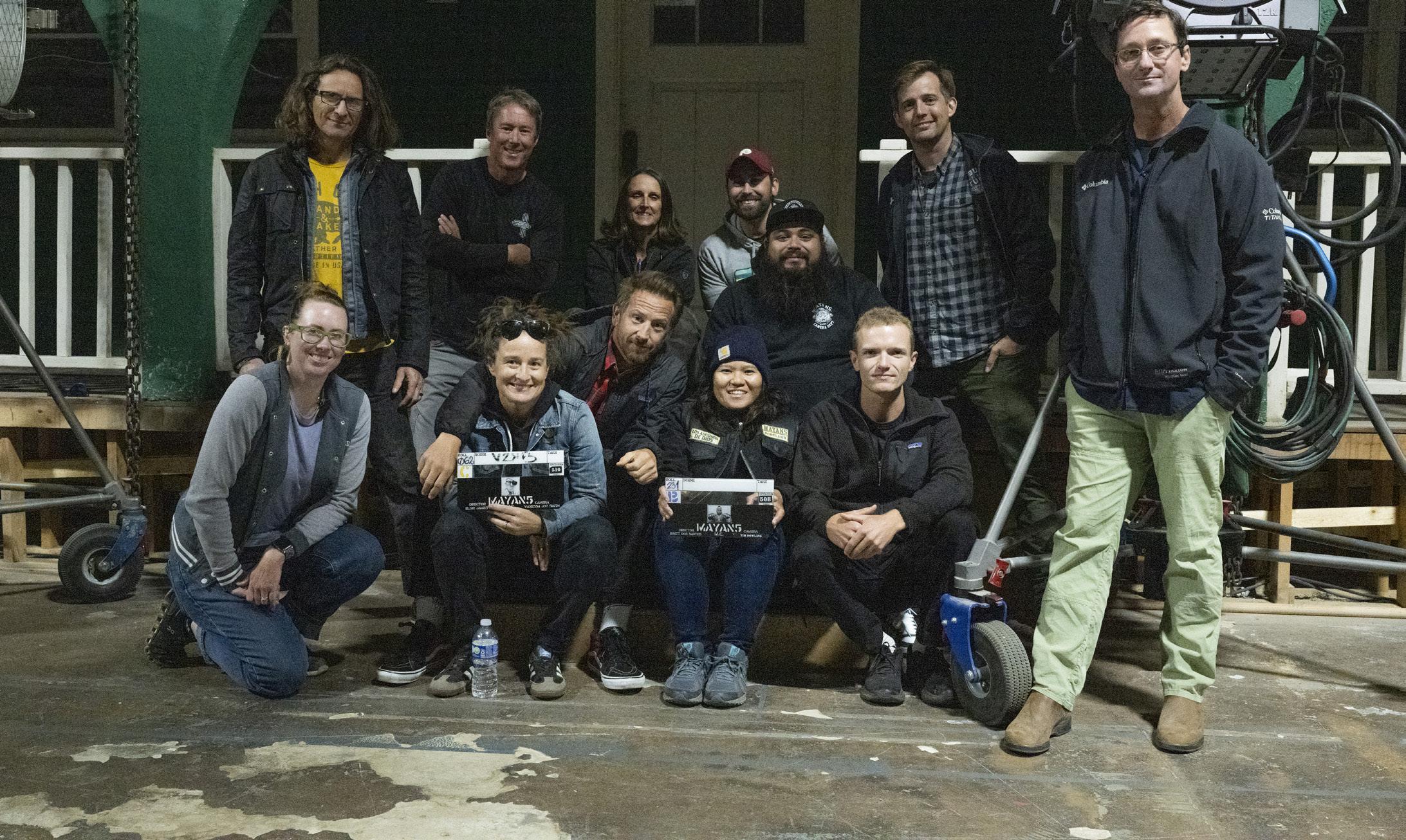
MAYANS SEASON 5
COMPANY PAGE URL
ASTERA 7 WWW.ASTERA-LED.COM/FRESNEL
CHAPMAN LEONARD 11 WWW.CHAPMAN-LEONARD.COM
ECA 4 WWW.ECAWARDS.NET
IBC SHOW 2 WWW.IBC.ORG
NETFLIX 3, 5 WWW.FYC.NETFLIX.COM
RED 13 WWW.RED.COM
SONY CINEMA 9 WWW.SONYCINE.COM
TIFF 79 WWW.TIFF.NET/INDUSTRY
BACK ROW : TIM DOWLING (B OPERATOR), GRETCHEN WARTHEN (C OPERATOR), BRYAN JONES (C 2ND)
MIDDLE ROW : MATTHEW PEARCE (A OPERATOR), MATTHEW KING (A 1ST), ENRIQUE “JR” GARCIA (UTILITY), DAN BOWER (UTILITY)
FRONT ROW : KELSEY CASTELLITTO (A 2ND), VANESSA JOY SMITH (CINEMATOGRAPHER), MICHAELA ANGELIQUE (B 2ND), MASON HARRELSON (DIT), TROY BLISCHOK (B 1ST)
ADVERTISING REPRESENTATIVES
WEST COAST & CANADA
ROMBEAU INC.
Sharon Rombeau
Tel: (818) 762-6020
Fax: (818) 760-0860
Email: sharonrombeau@gmail.com
EAST COAST & EUROPE
ALAN BRADEN INC.
Alan Braden Tel: (818) 850-9398
Email: alanbradenmedia@gmail.com

In describing New York City-based ICG member Doug Hart’s lifelong commitment to trade labor, Director of Photography Tom Weston says Hart was “outspoken, fearless, honest to a fault and devoted to precepts of unionism. He had an unwaveringly strong moral compass,” Weston shares. “He was unshakable, often exasperating, and almost always right, even when being right was not the politically prudent thing to do. That is why those of us who knew him well loved him.” Hart, who served as an officer in IATSE Local 644 and then, after the national merger, in IATSE Local 600, was also a perennial National Executive Board member (NEB) who came from a union family. His brother, Randy, and his father, Robert, were IATSE Local 52 grips, and Hart, who worked as a camera technician on more than 50 features (including 10 movies as an A-Camera 1st AC for
two-time Oscar nominee Gordon Willis, ASC) walked the walk.
“Doug was most proud of his mentorship to younger filmmakers,” Weston adds. “He taught hundreds of eager young cinematographers throughout the years on the sets of his projects, in classes he designed at the Maine Photographic Seminars and the many workshops he initiated that were sponsored by our union.” He was also an author, with published works that included The Camera Assistant: A Complete Professional Handbook , a guide to motion picture camera techniques that Weston says “many of us considered a Bible.” Retired Guild member Kristin Glover, who served with Hart for many years on the NEB, calls Hart “a true union man. Doug was uncompromising when it came to standing up for transparency, fairness and union democracy.”

TORONTO IS WAITING FOR YOU
SEPT 7–17
REGISTER NOW TIFF.NET/INDUSTRY

